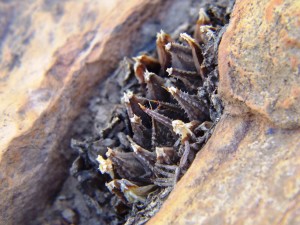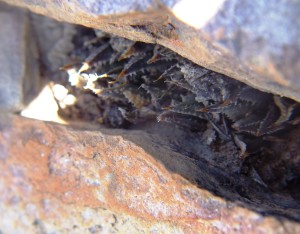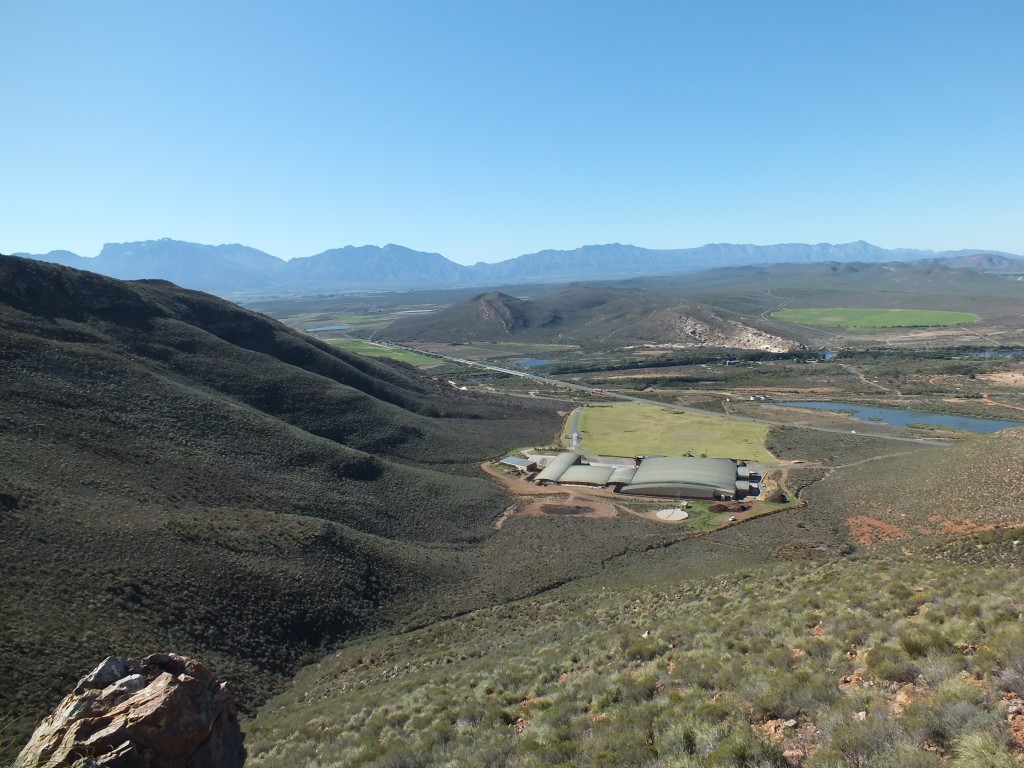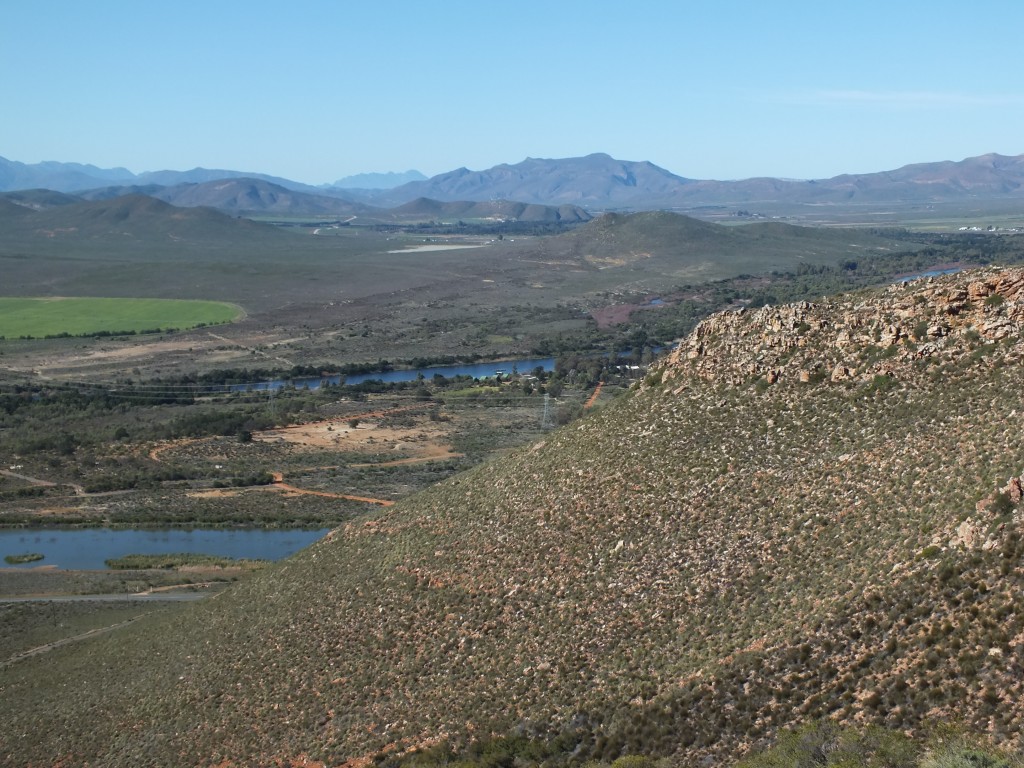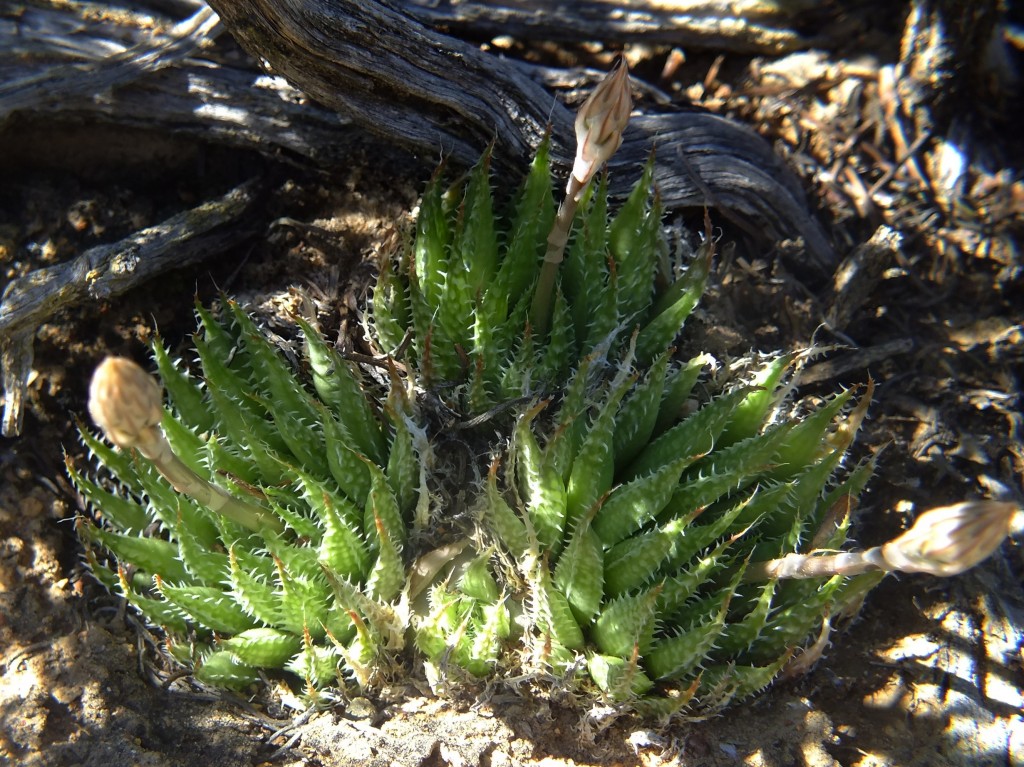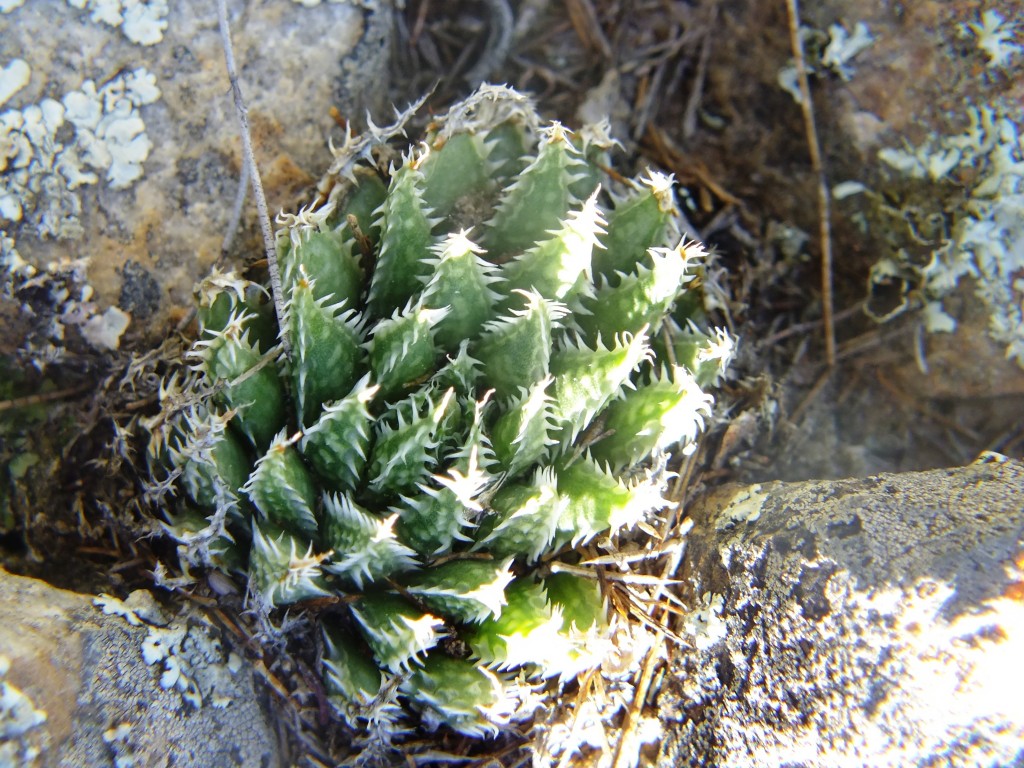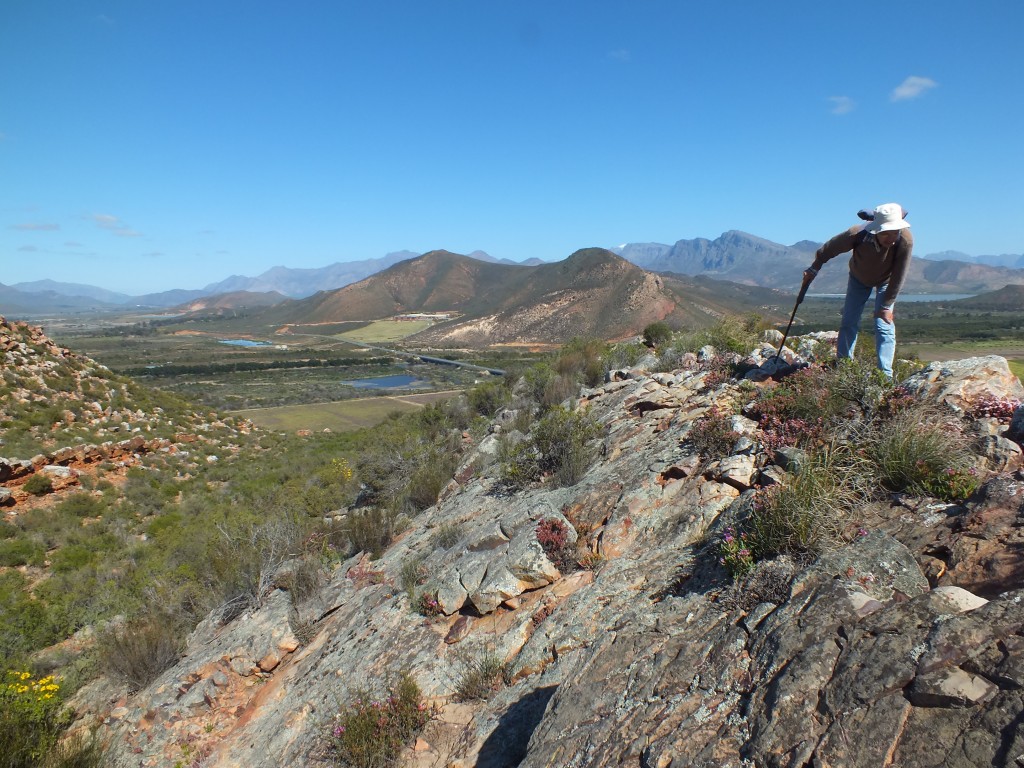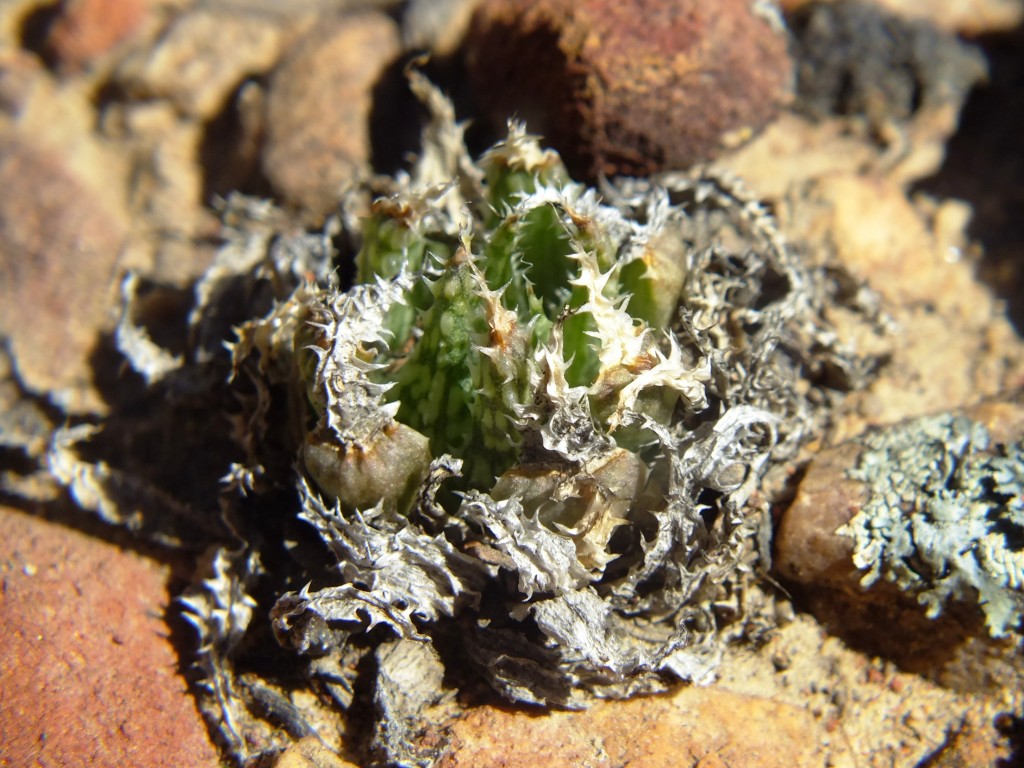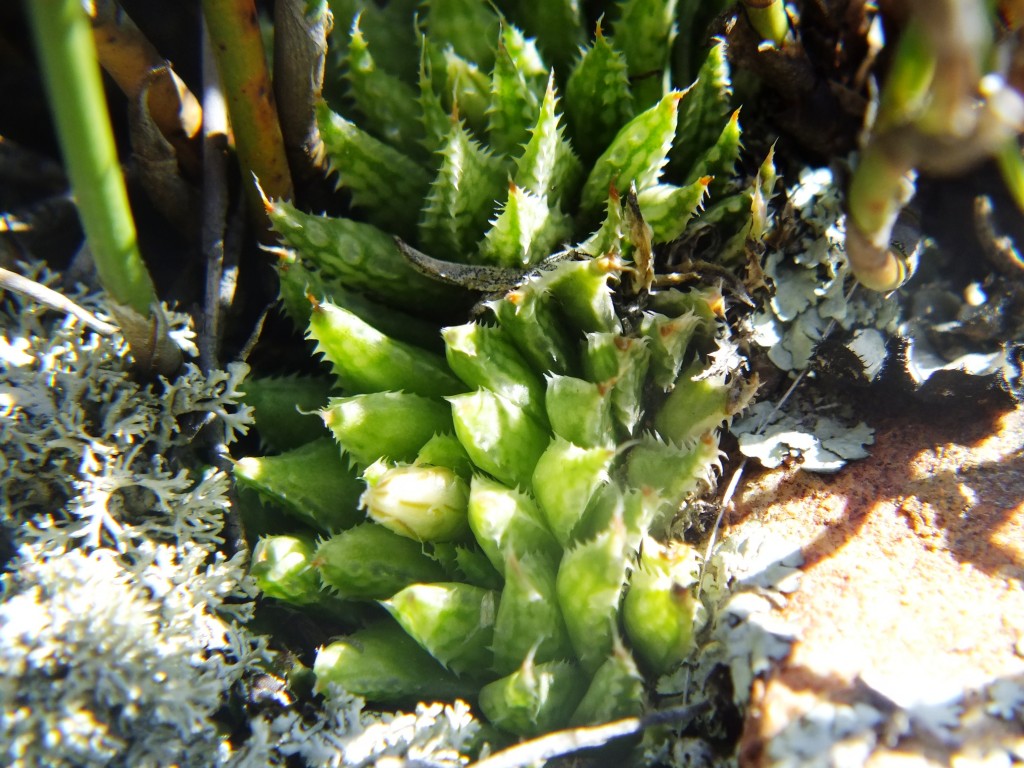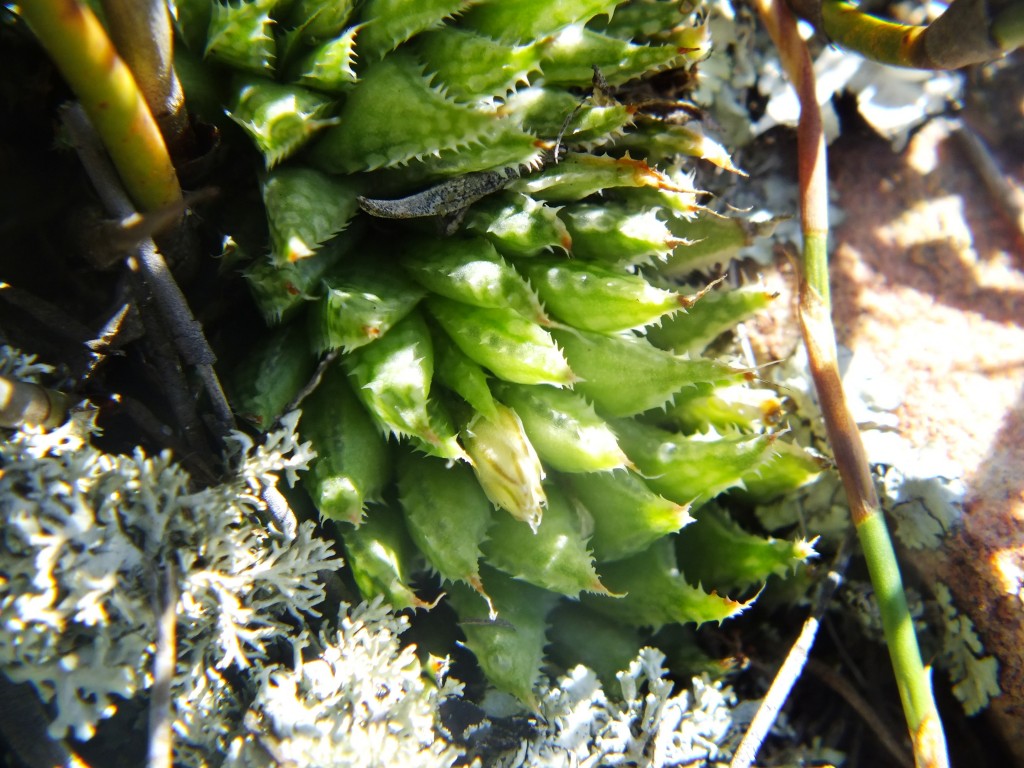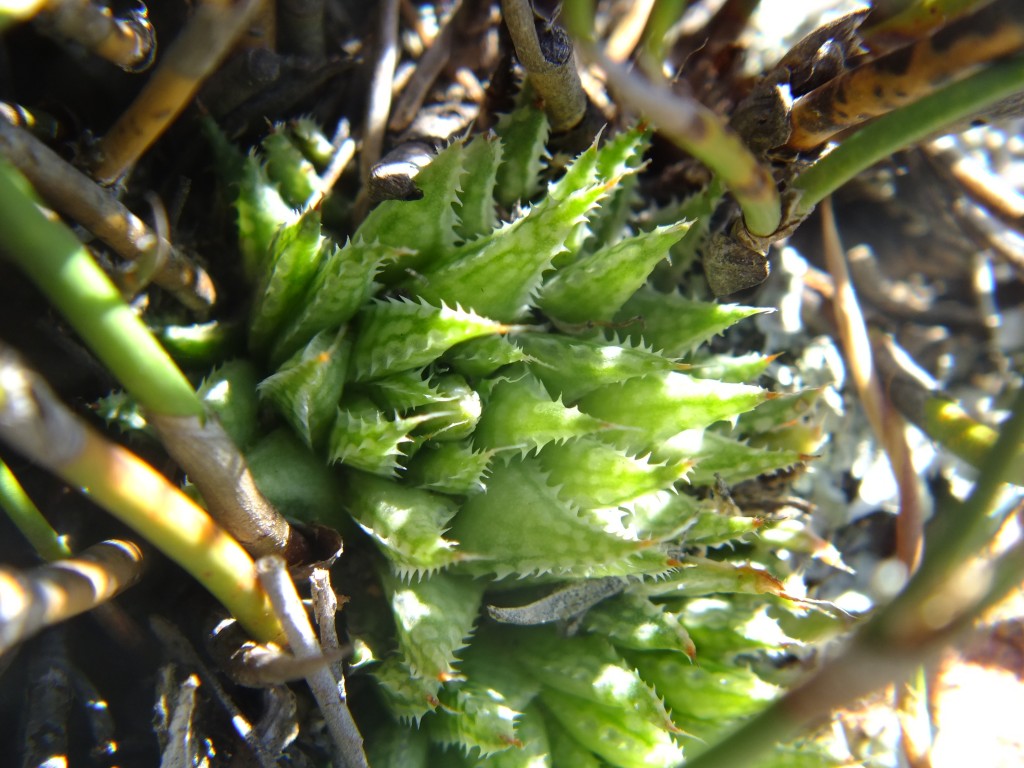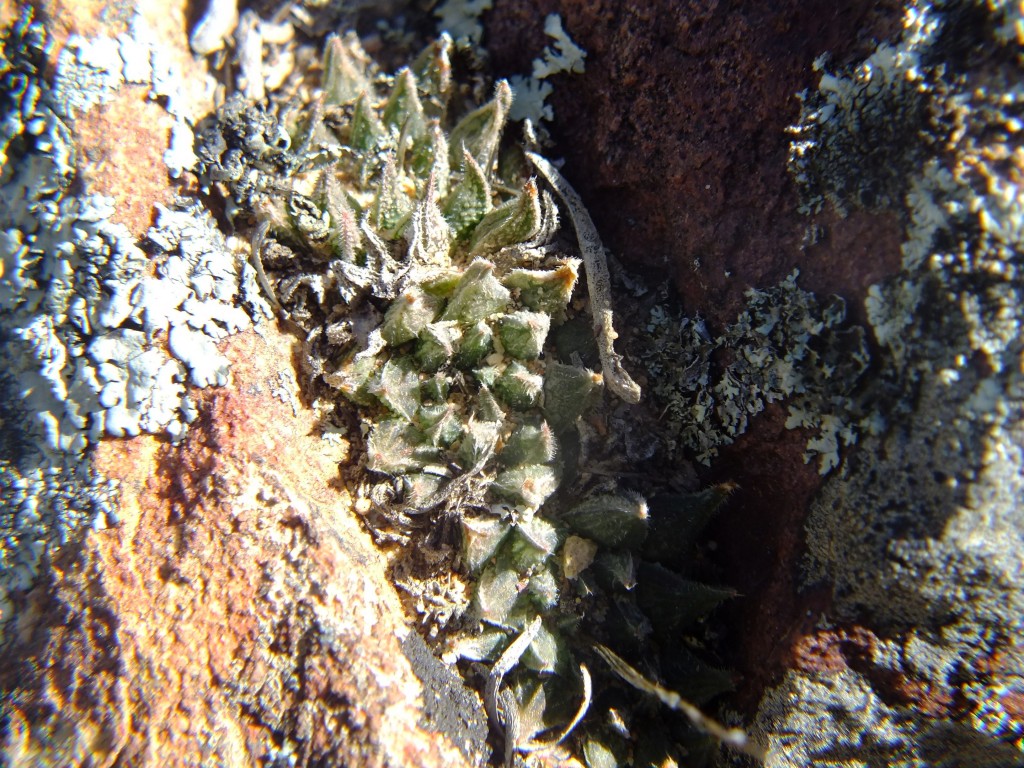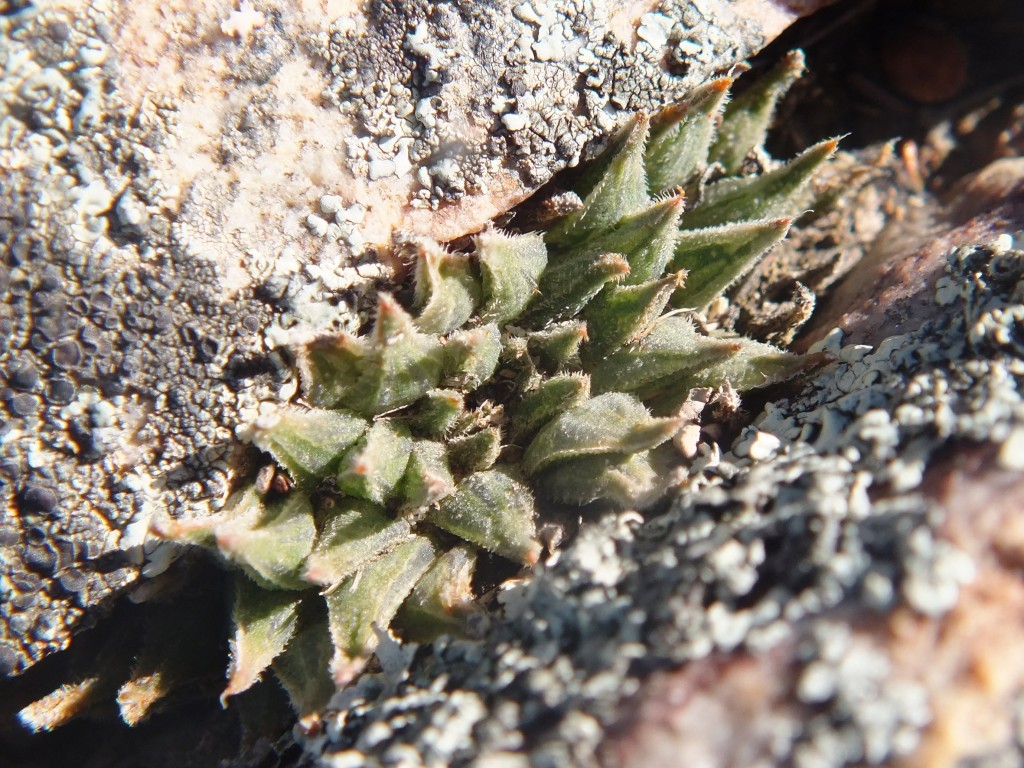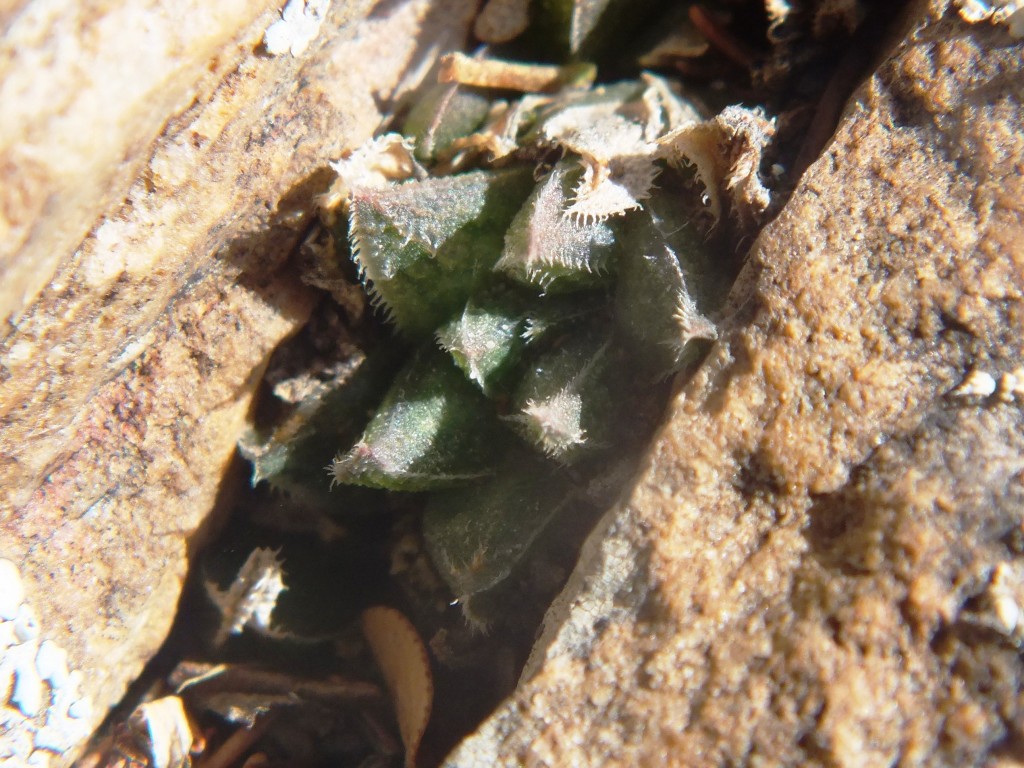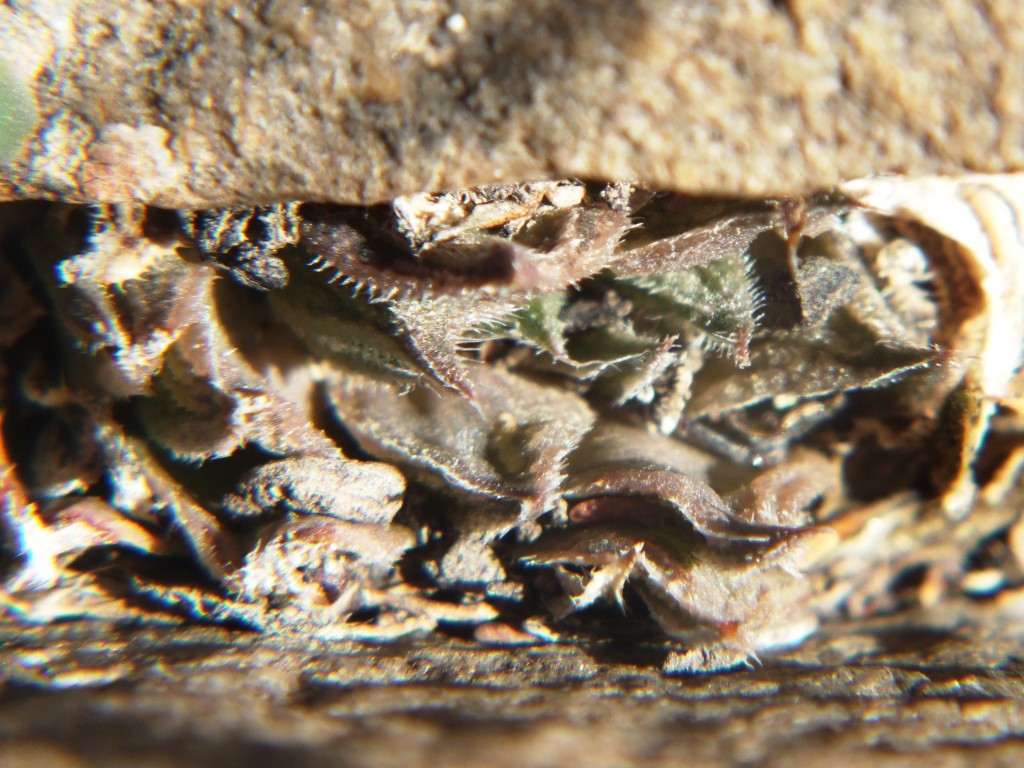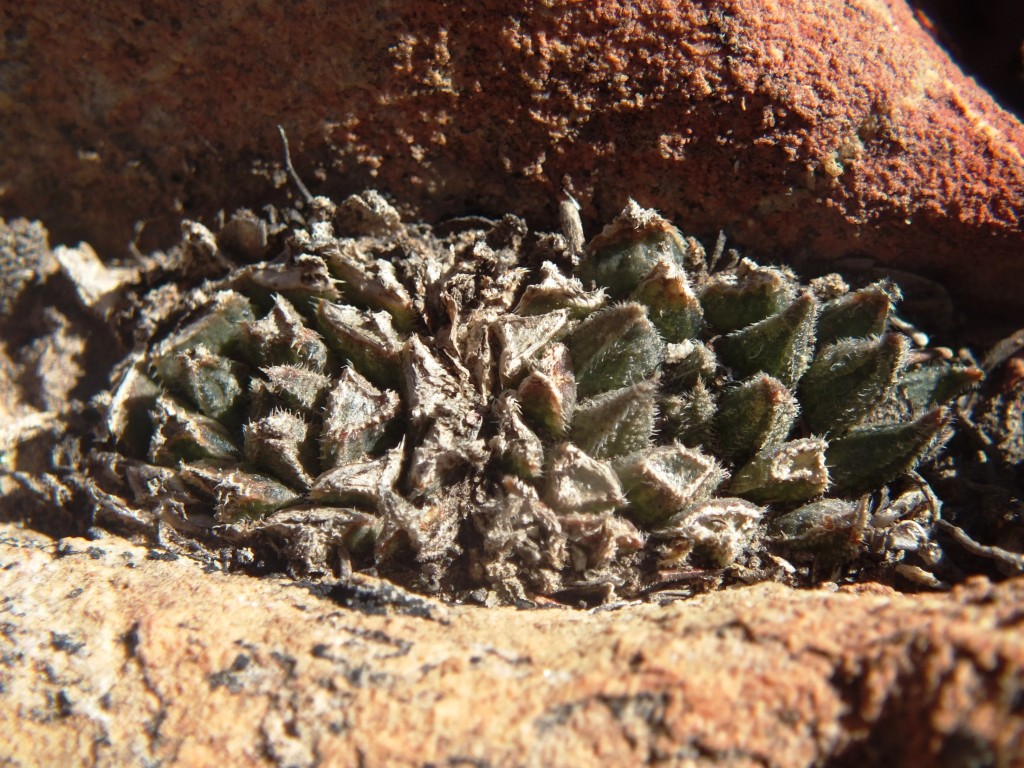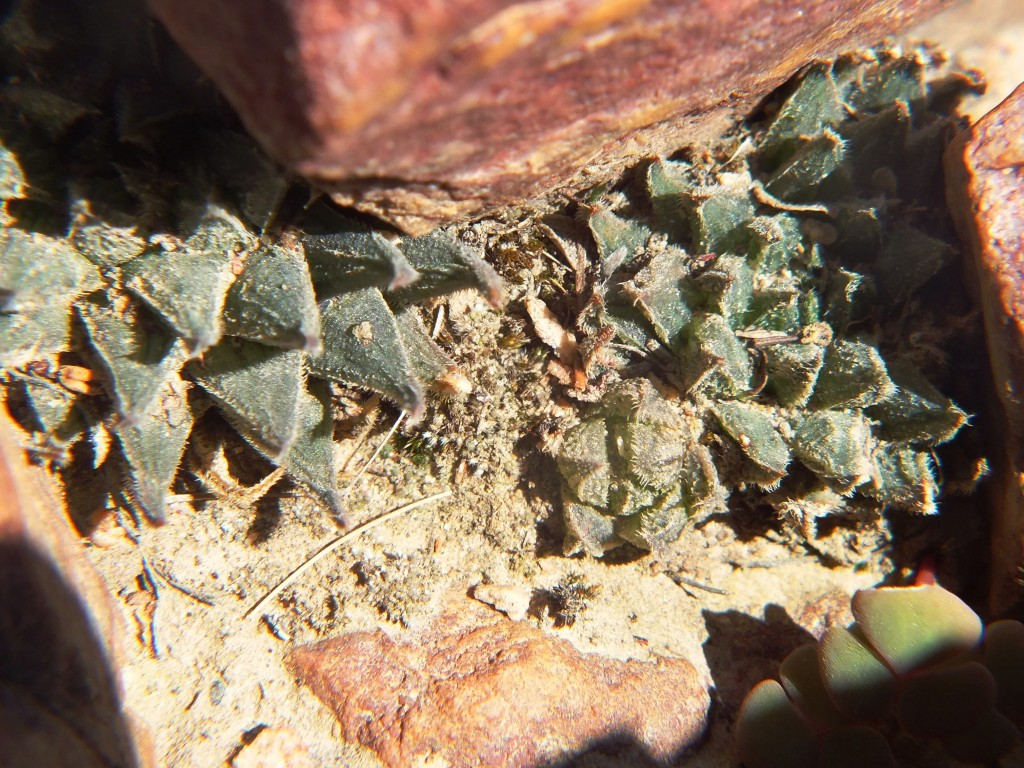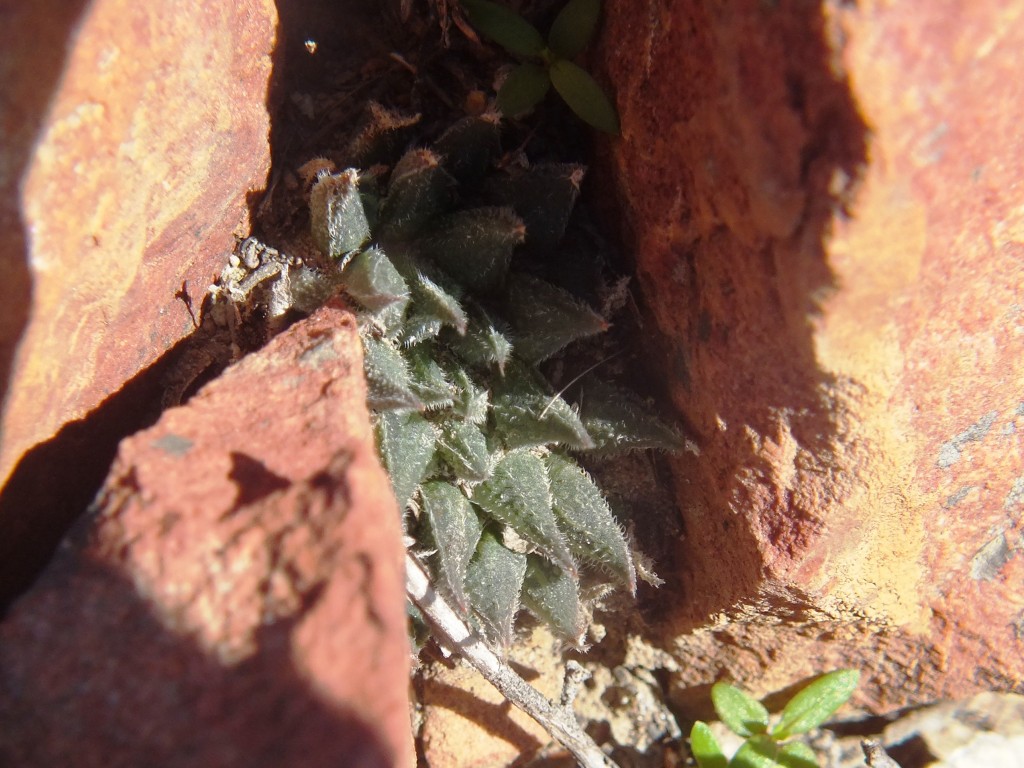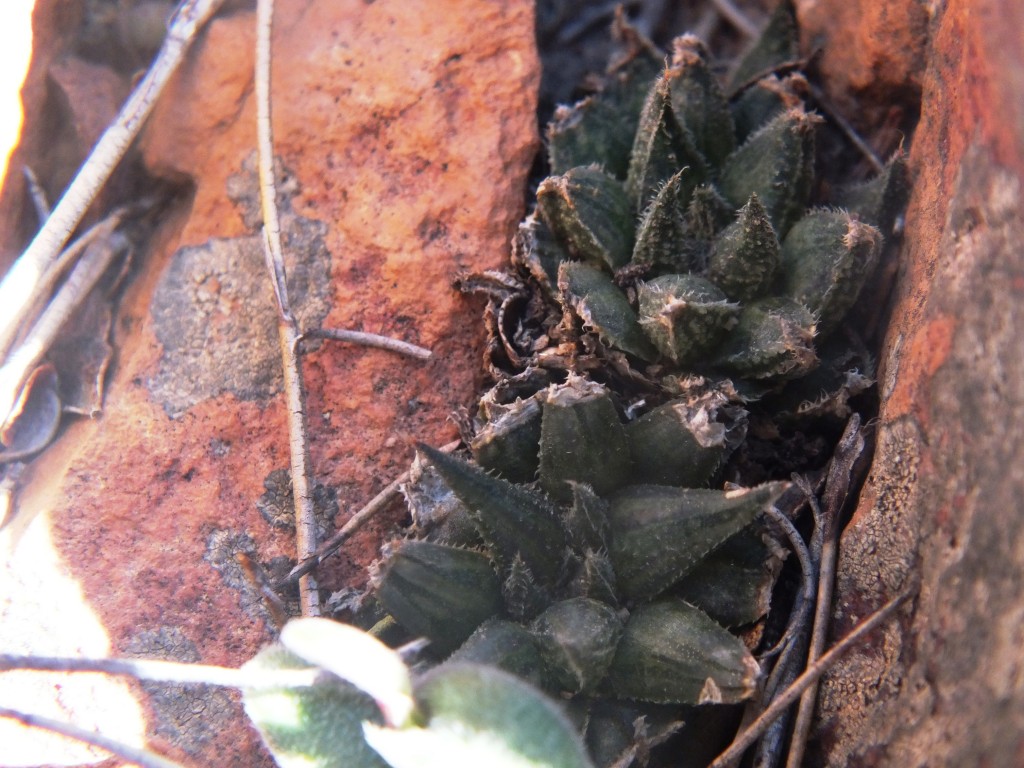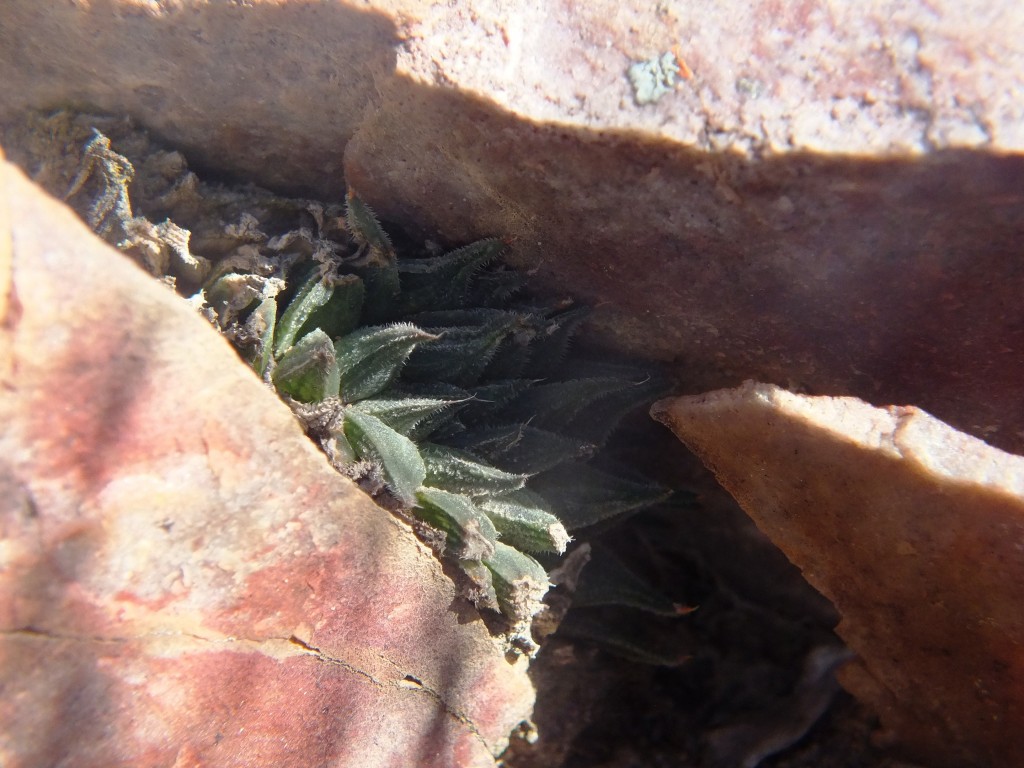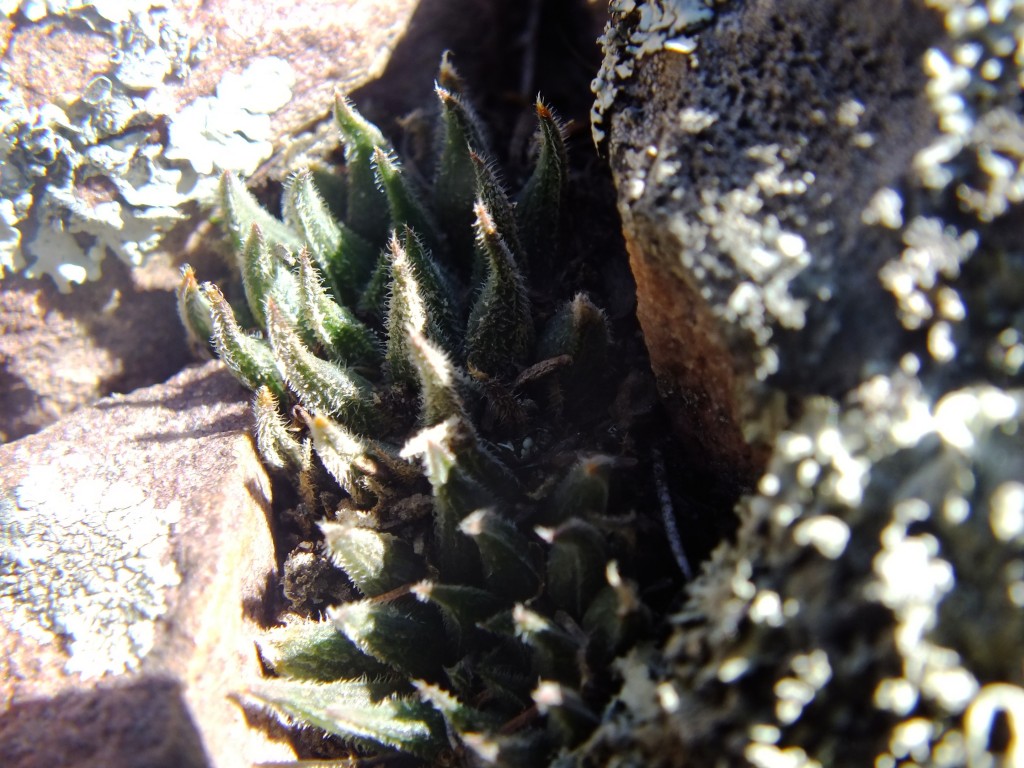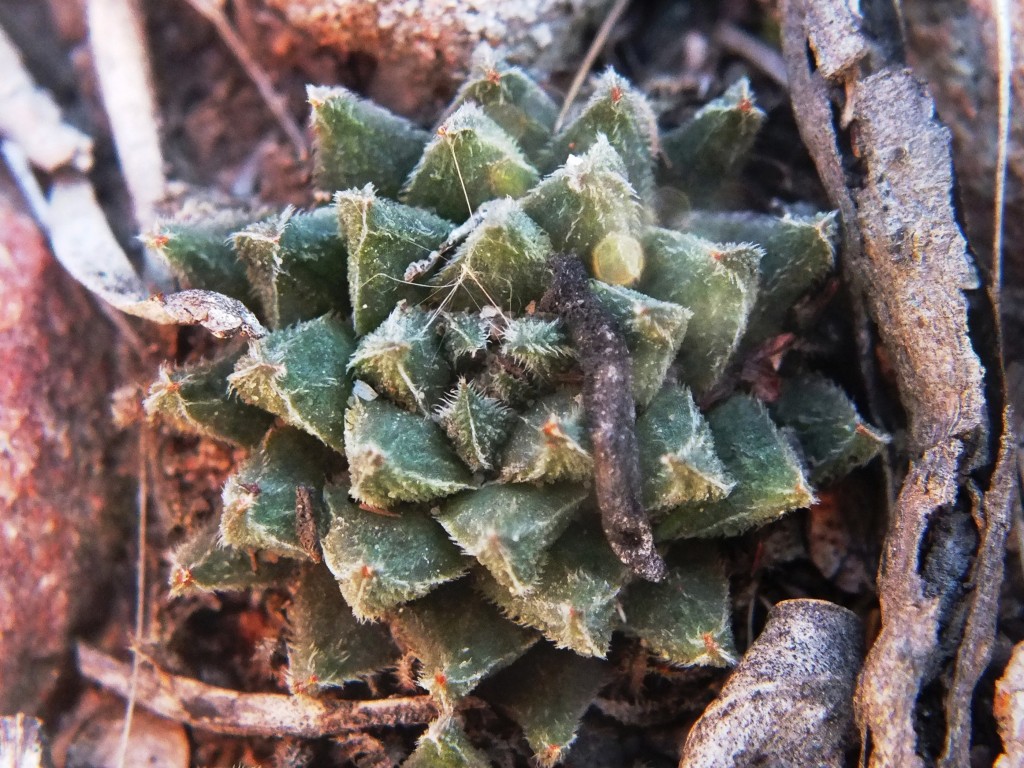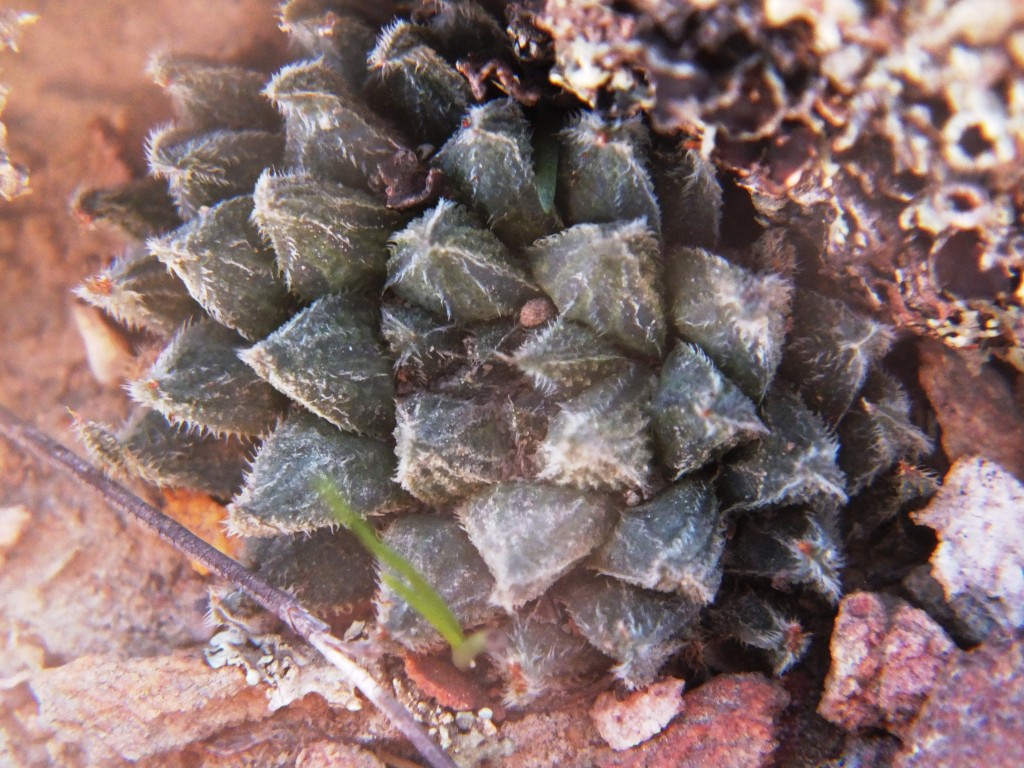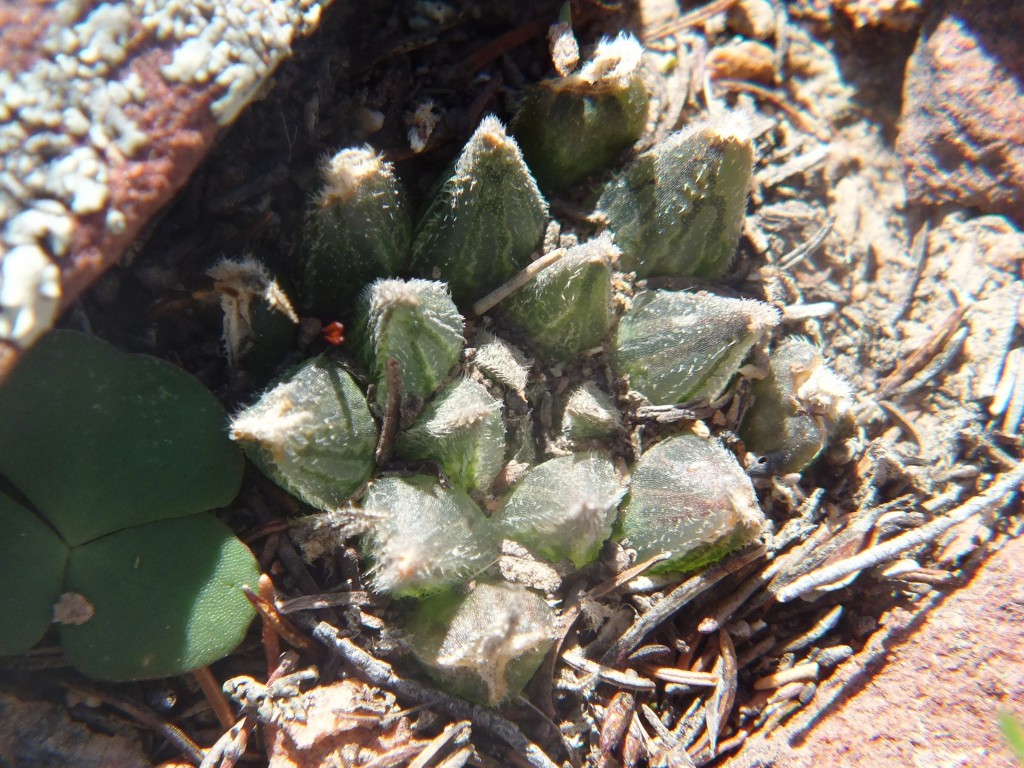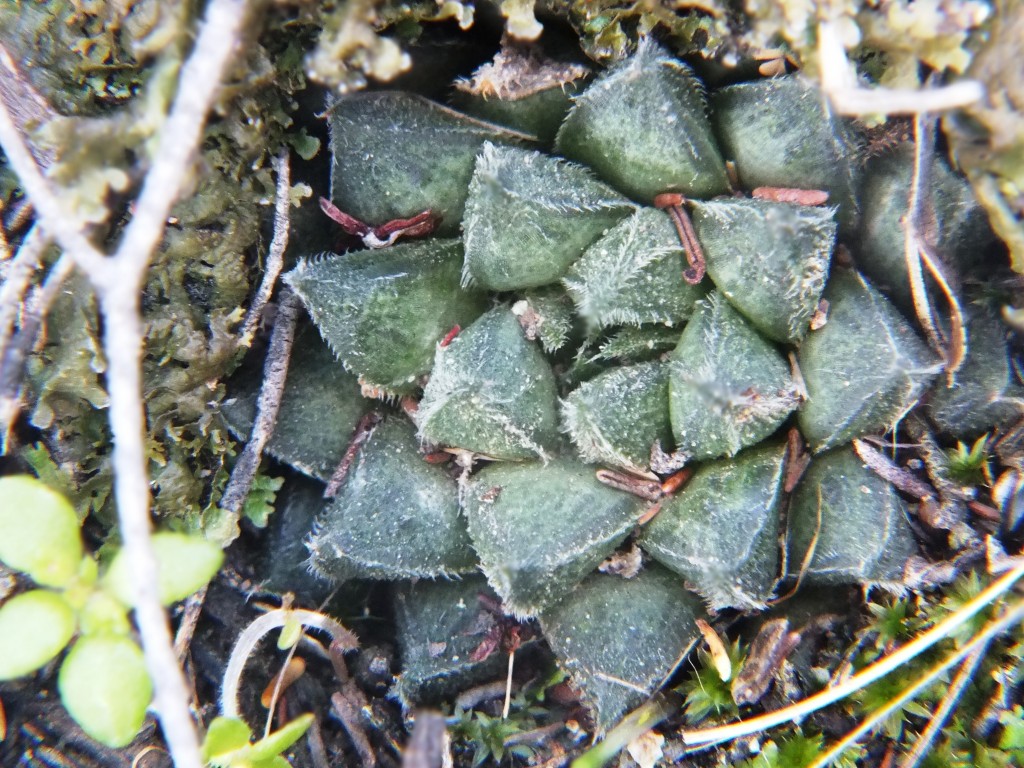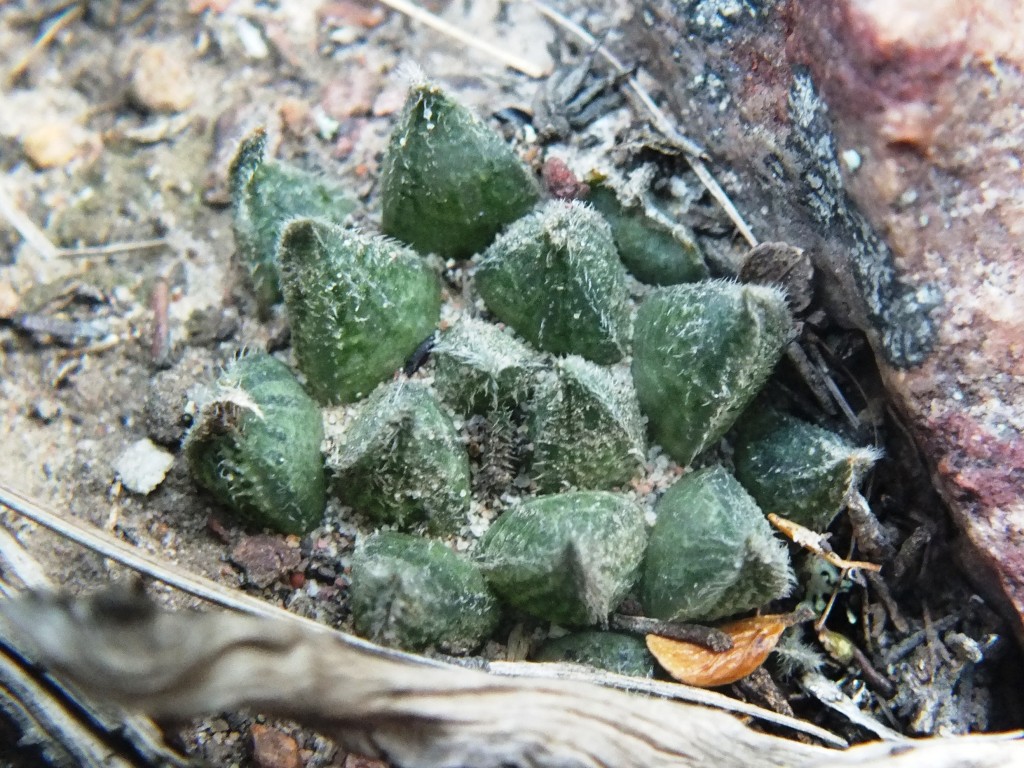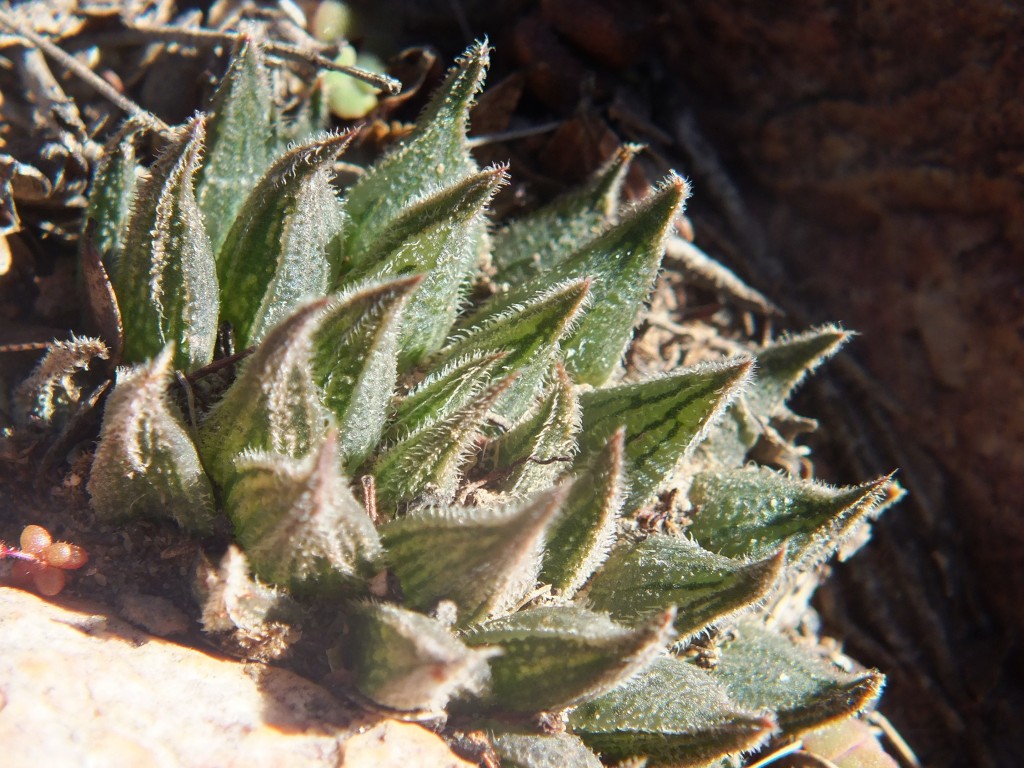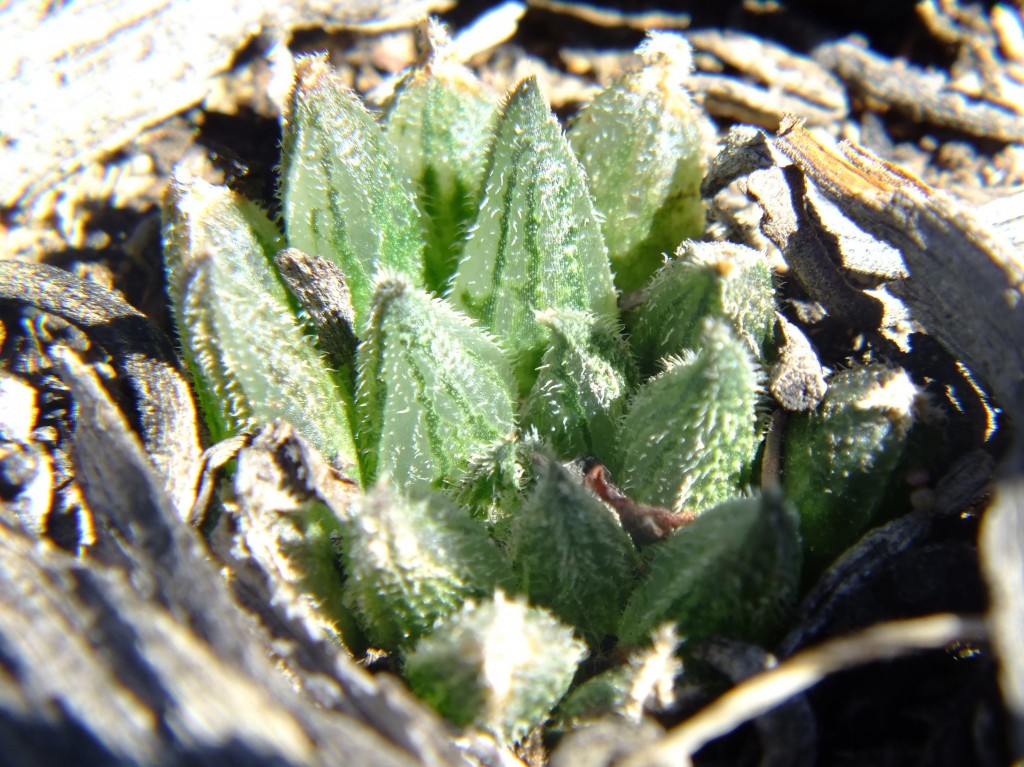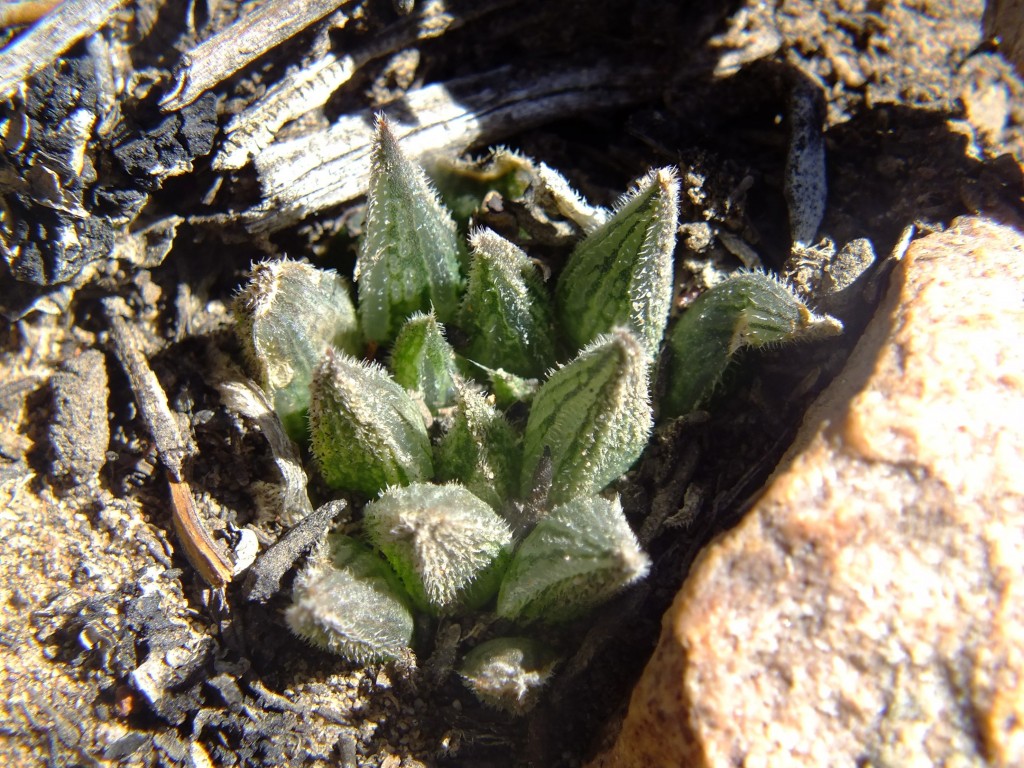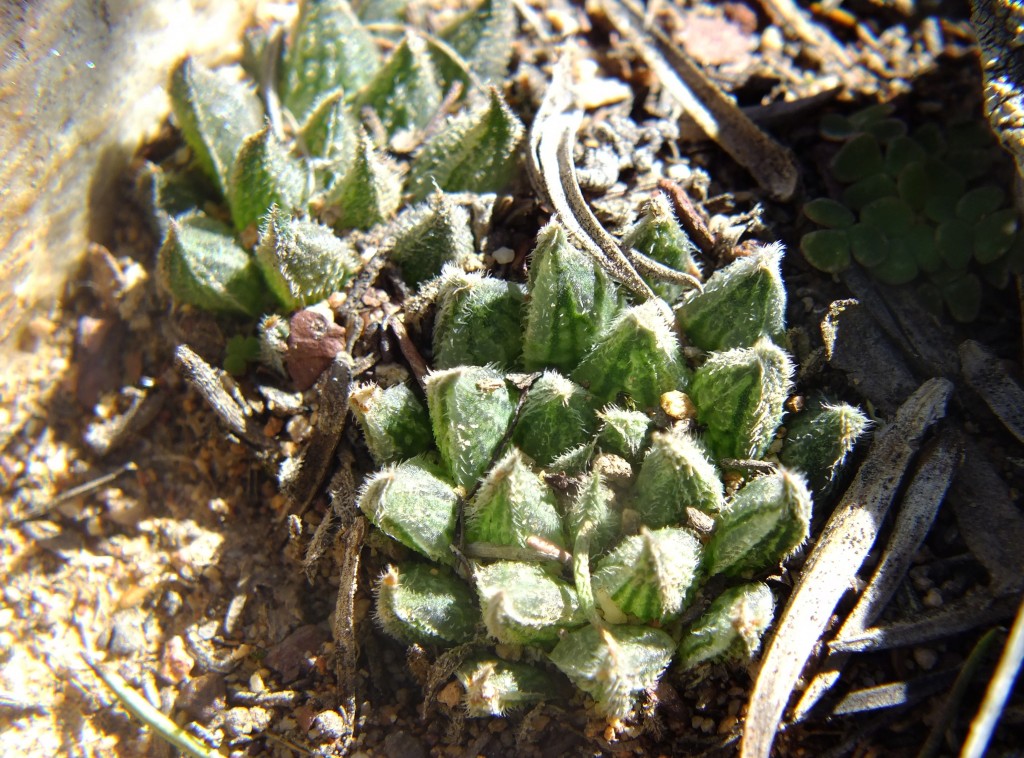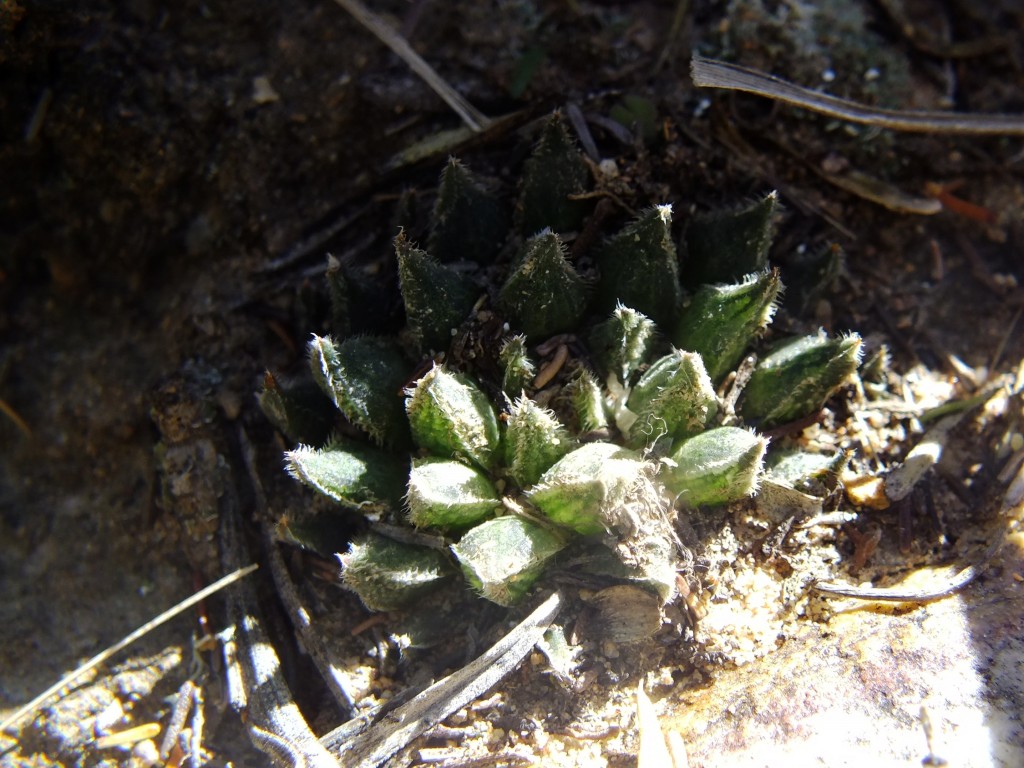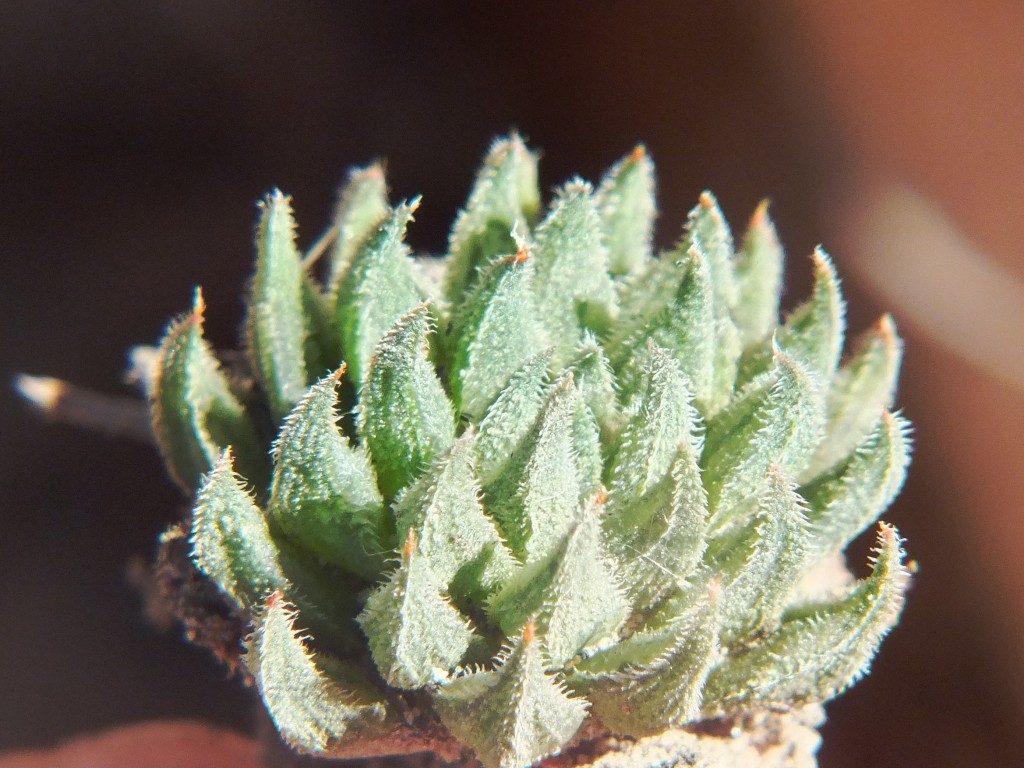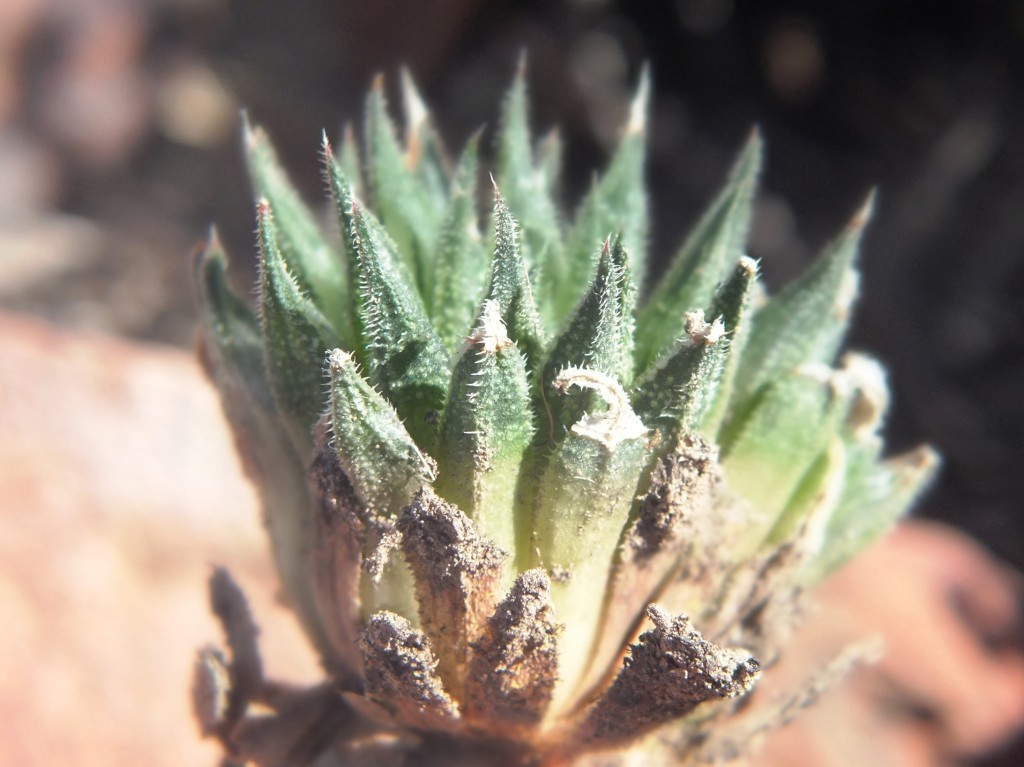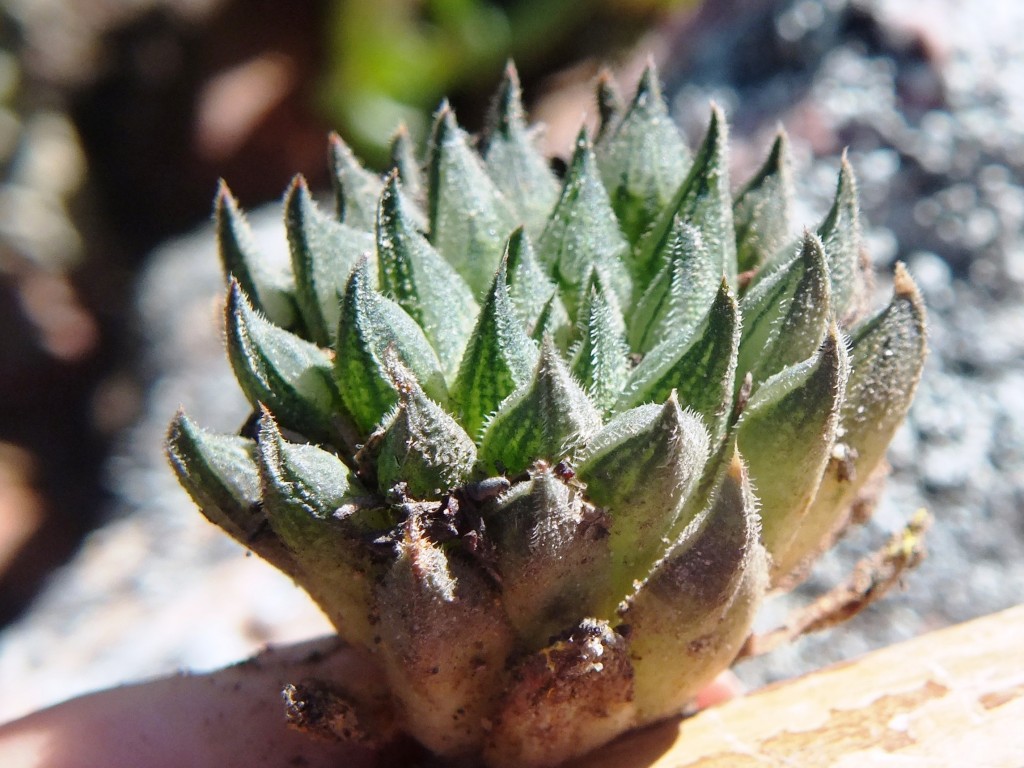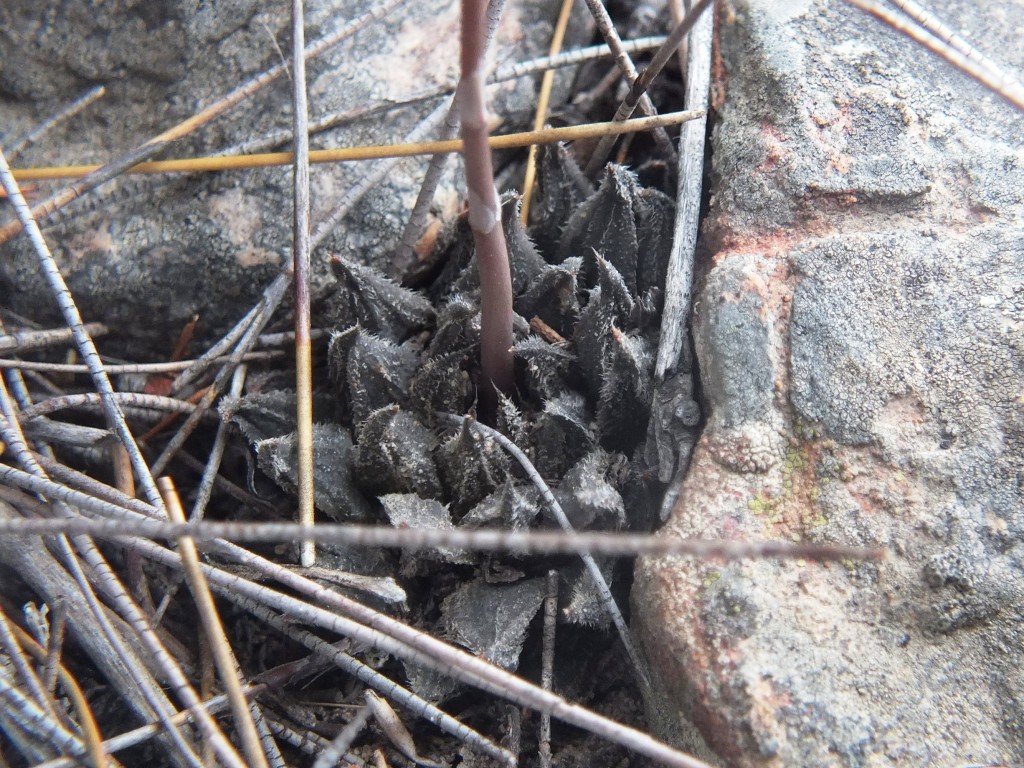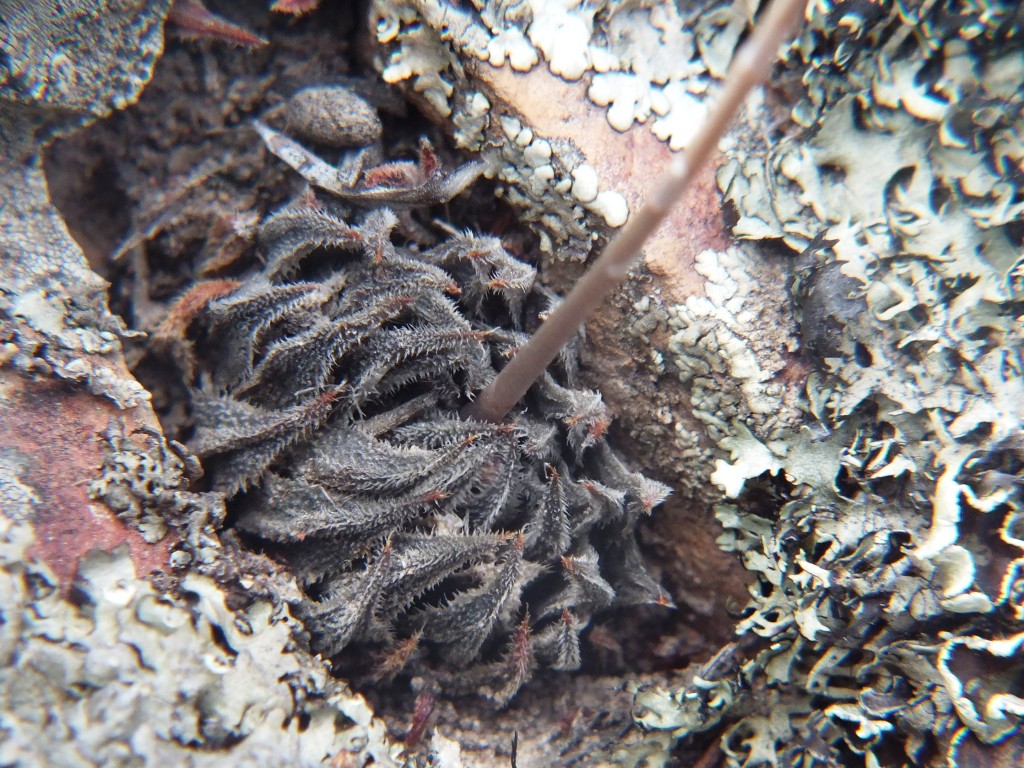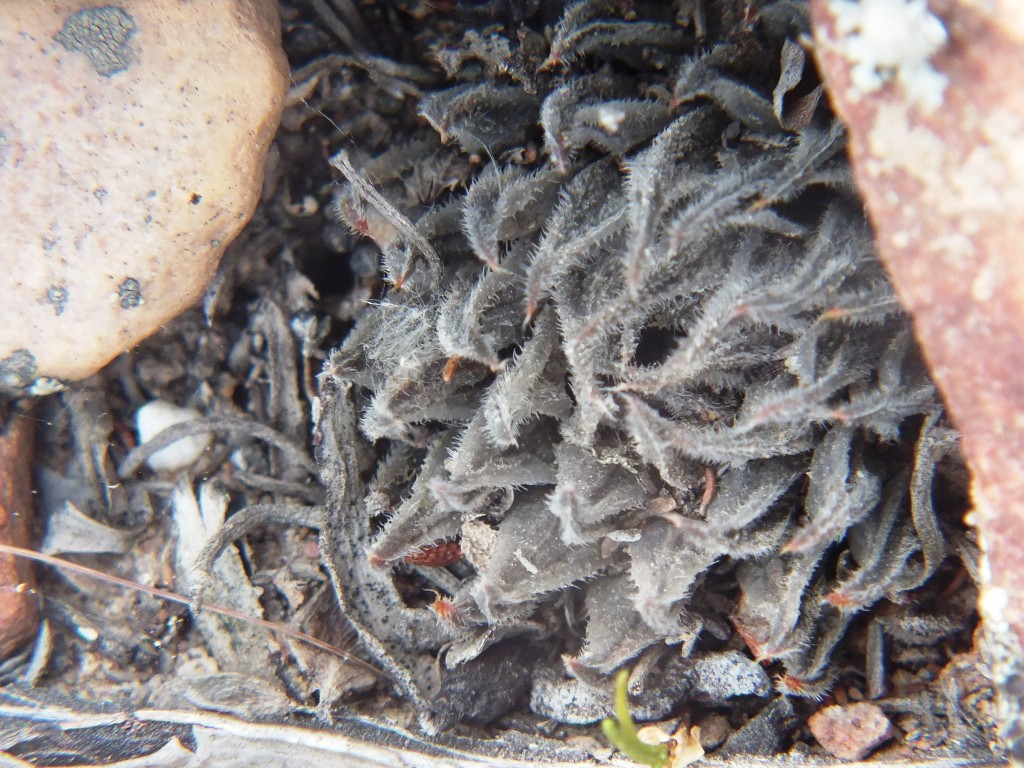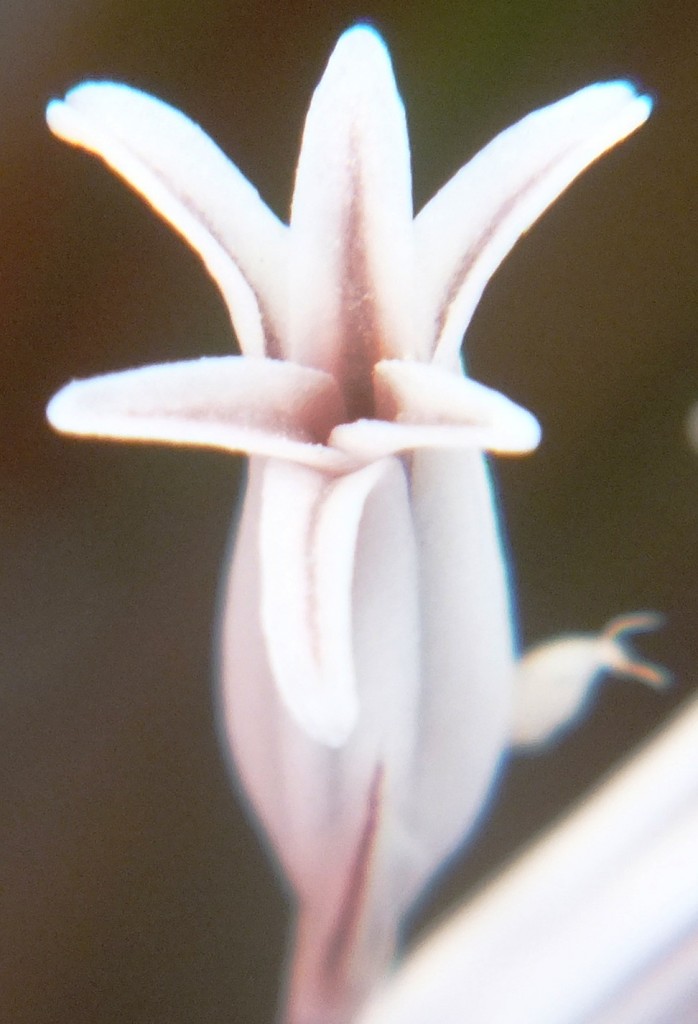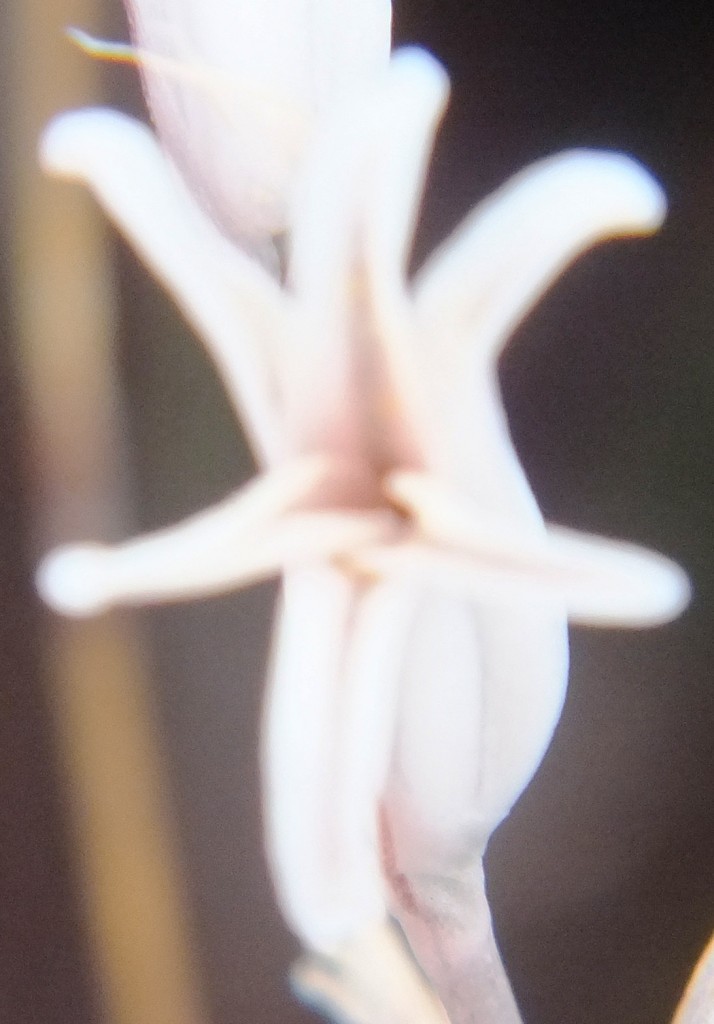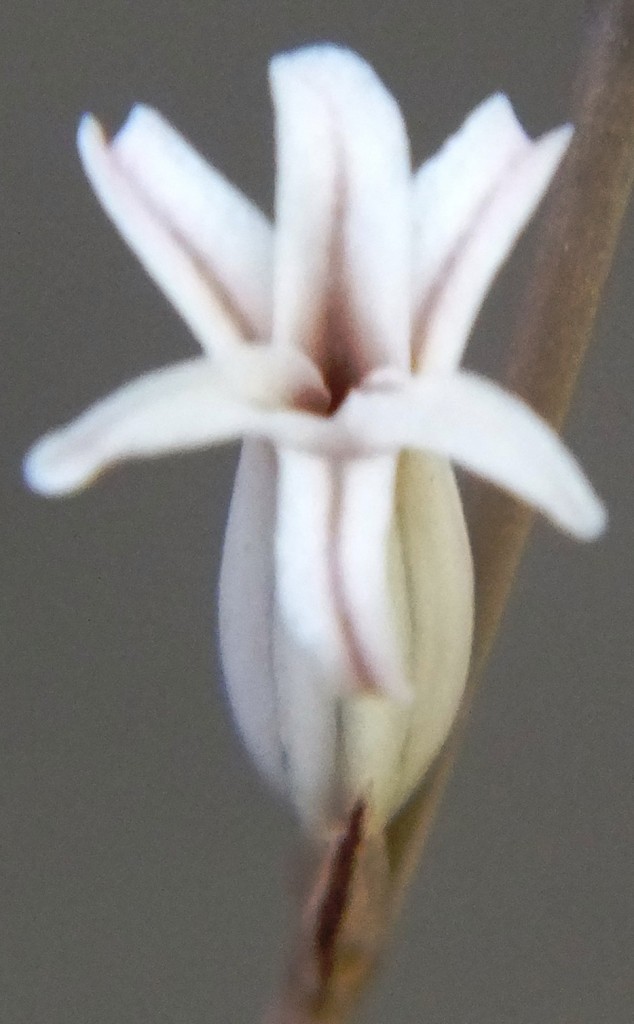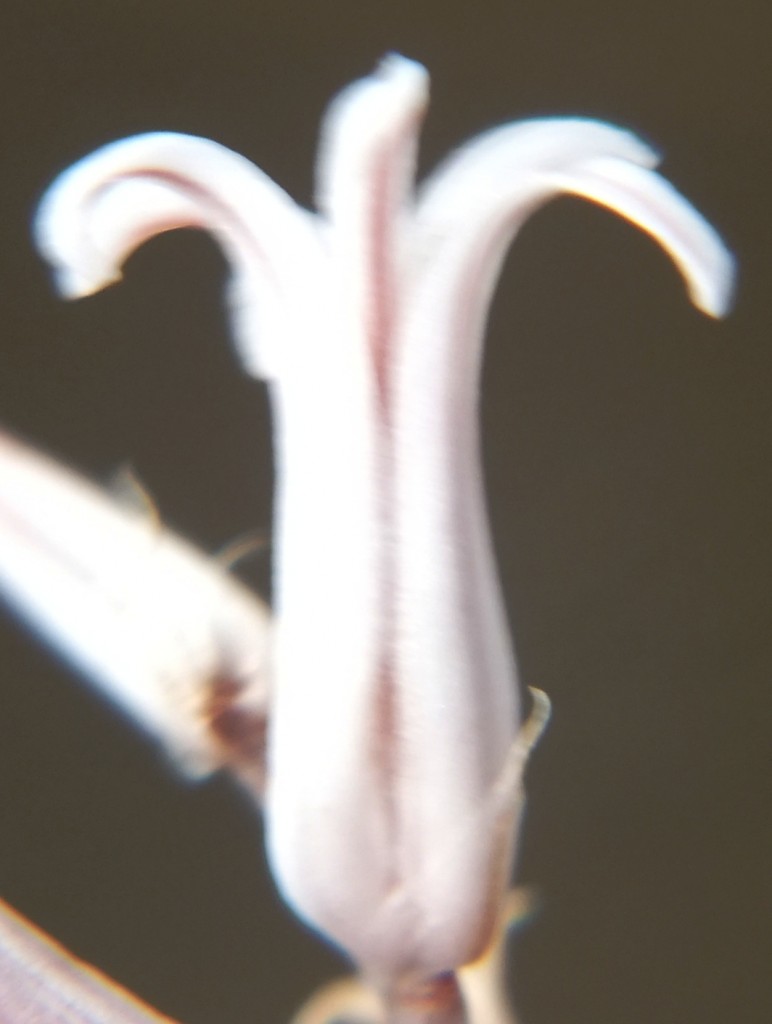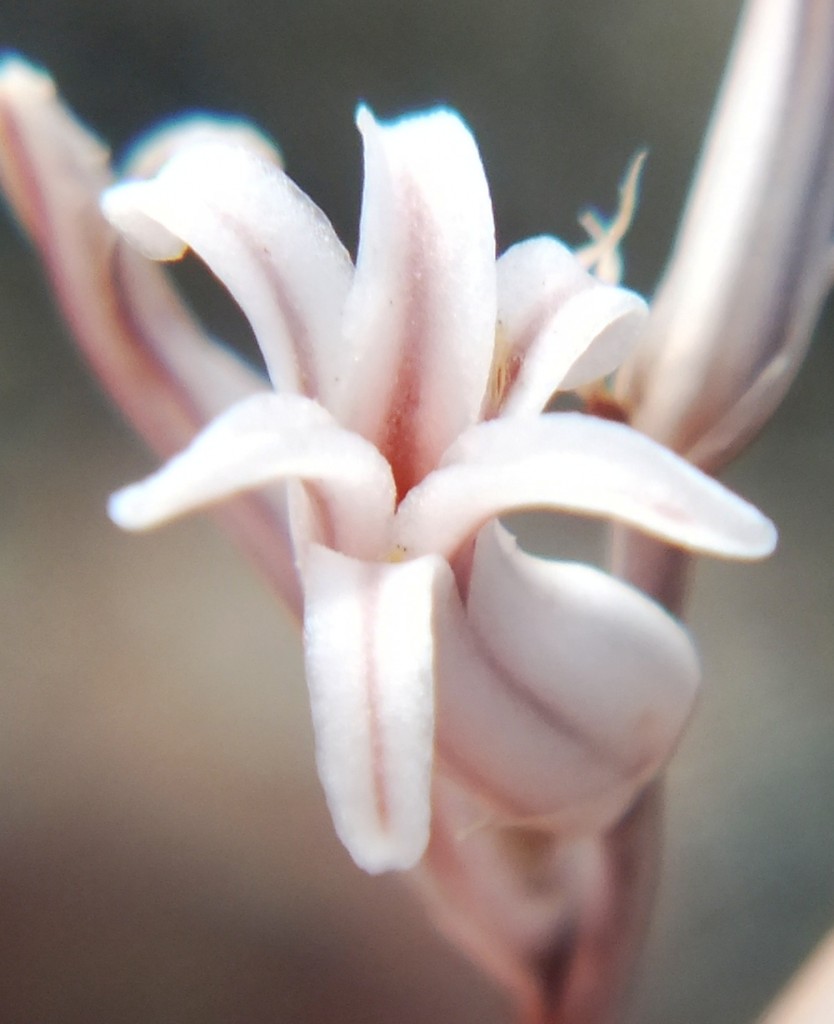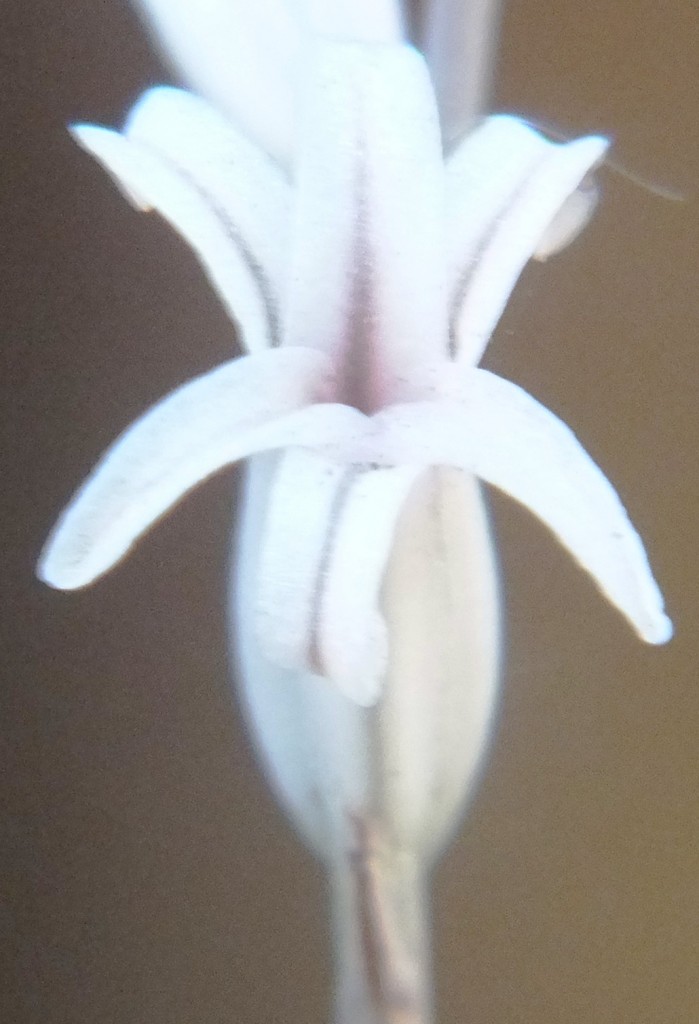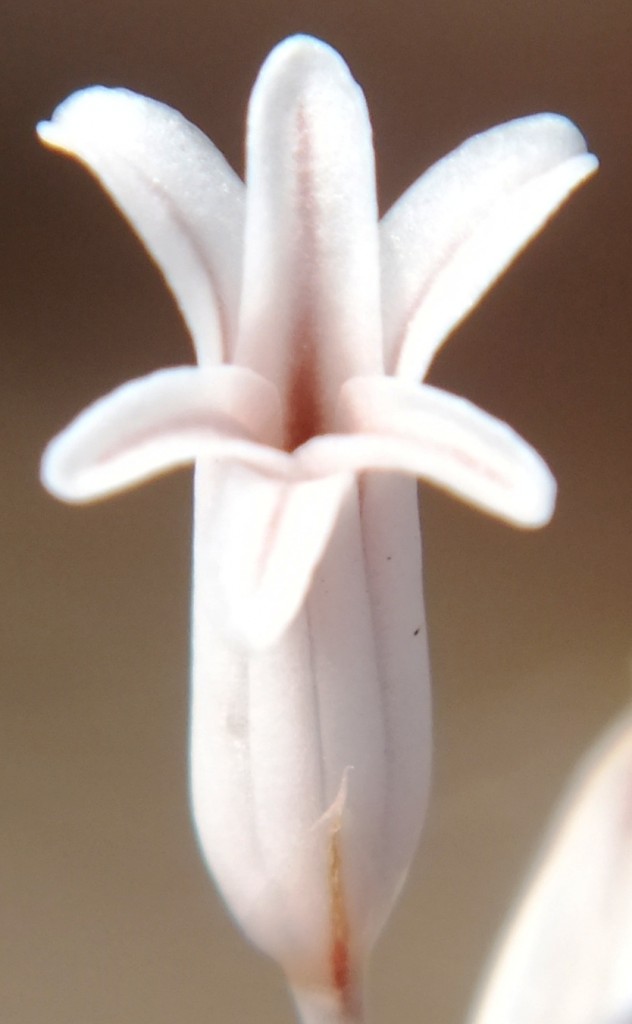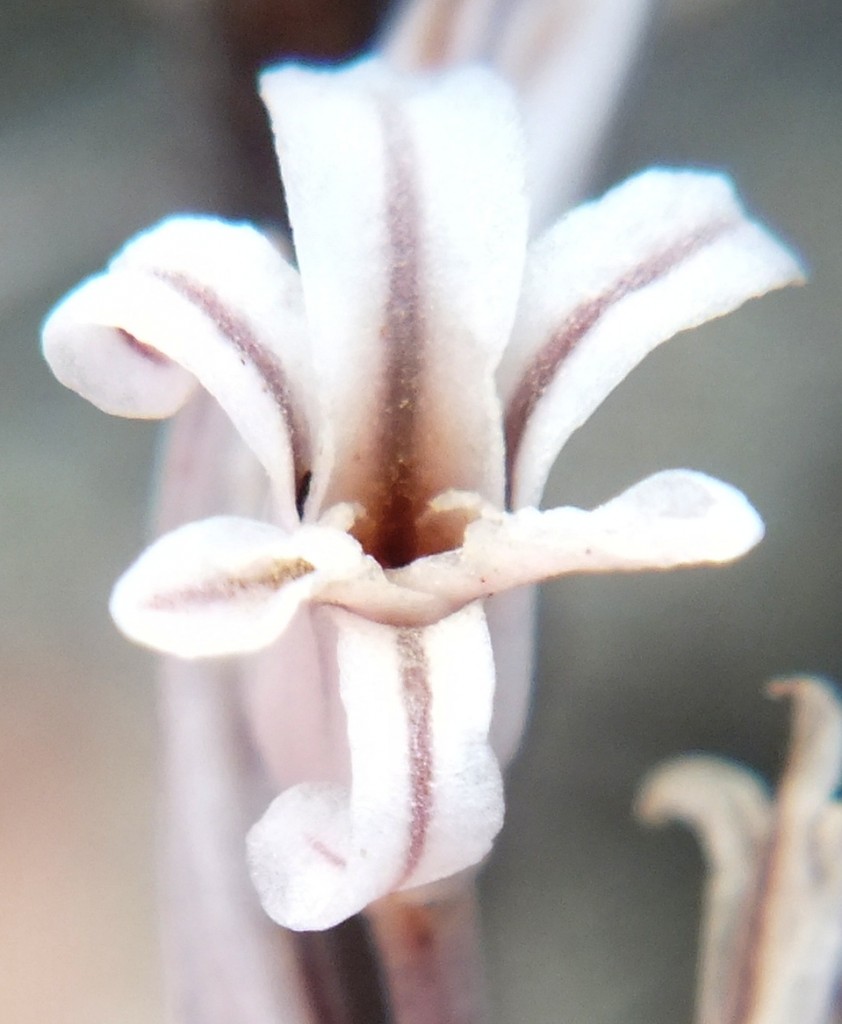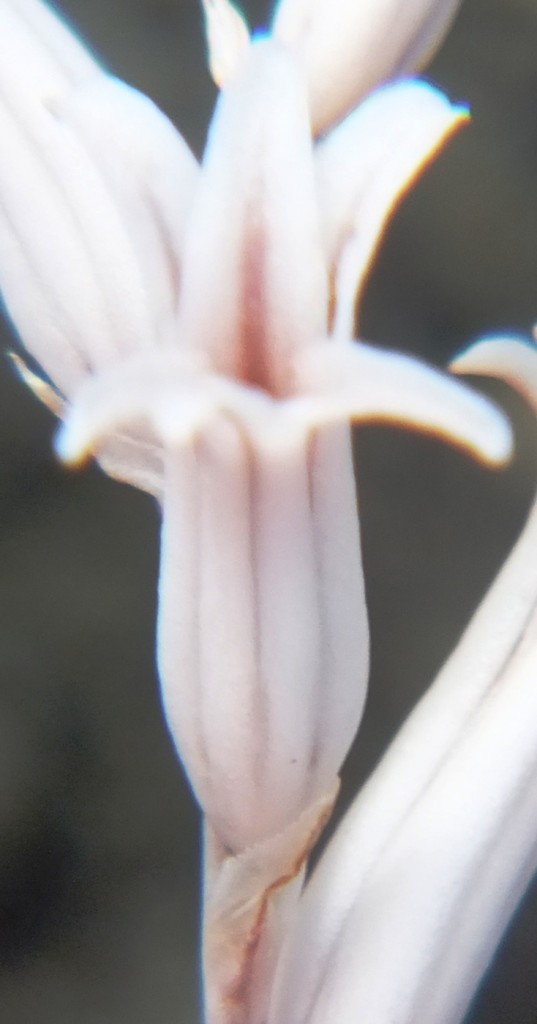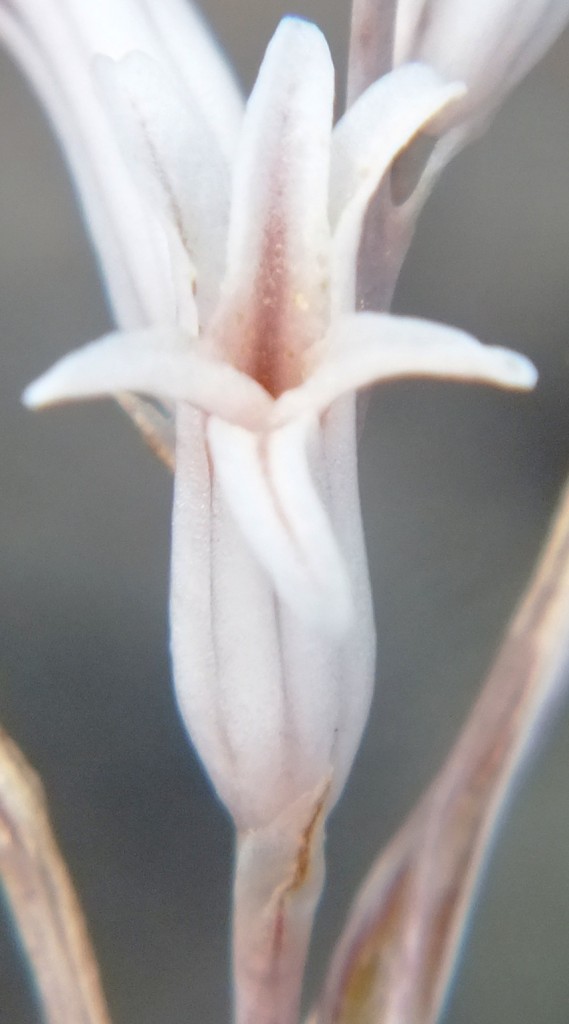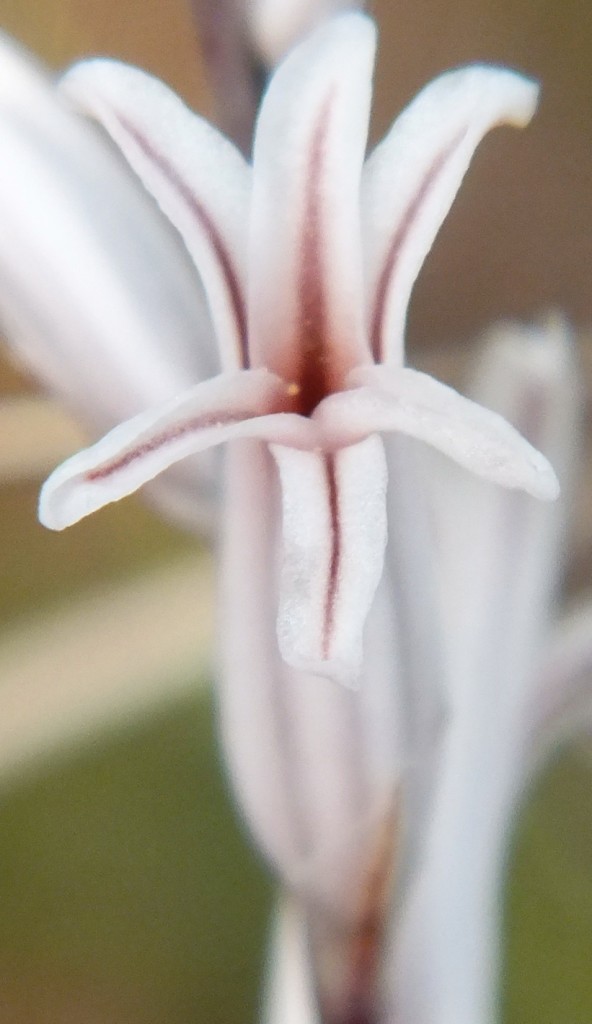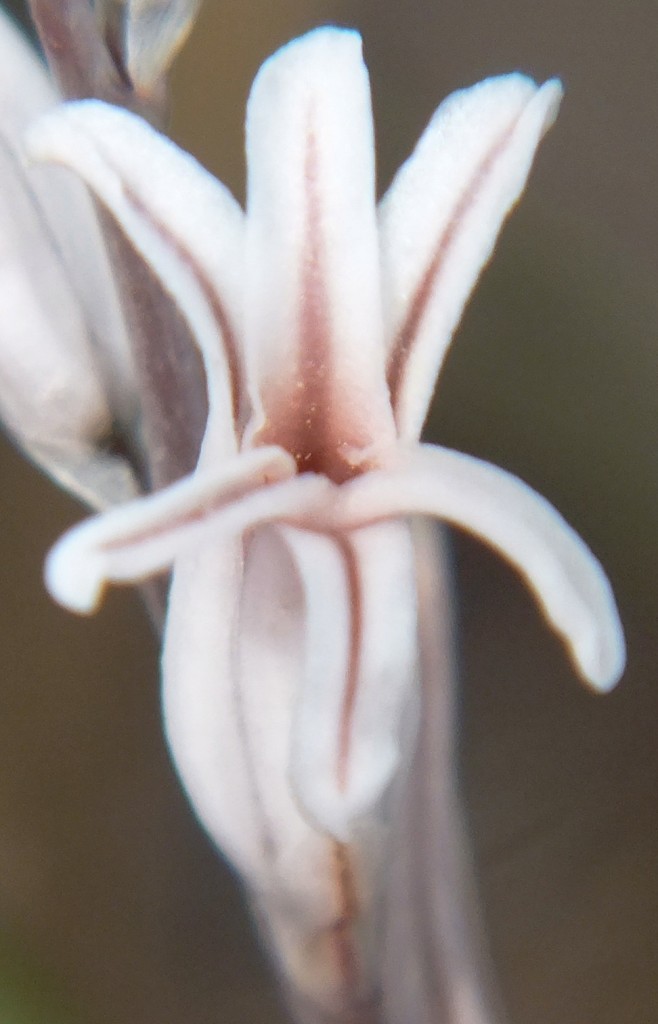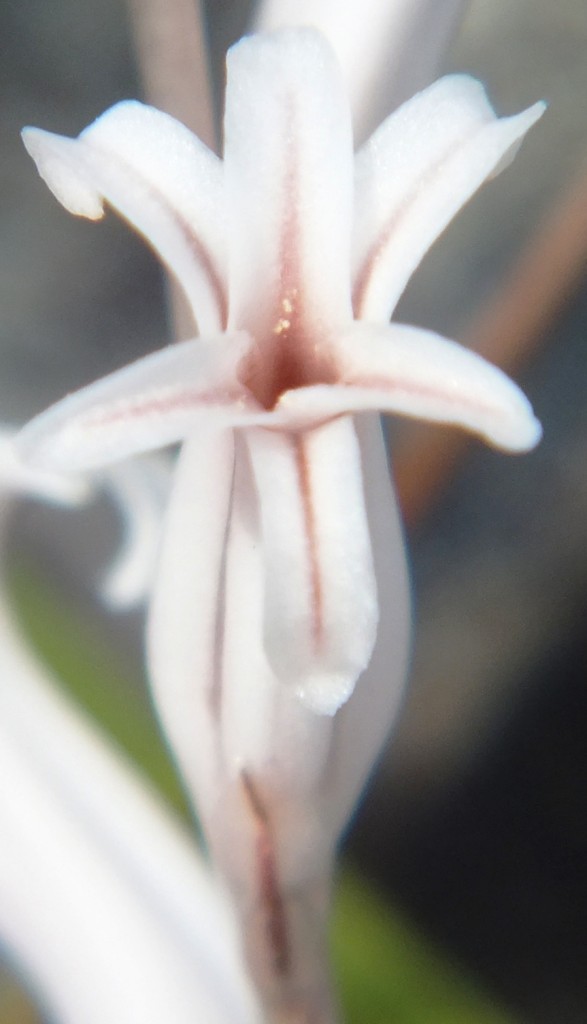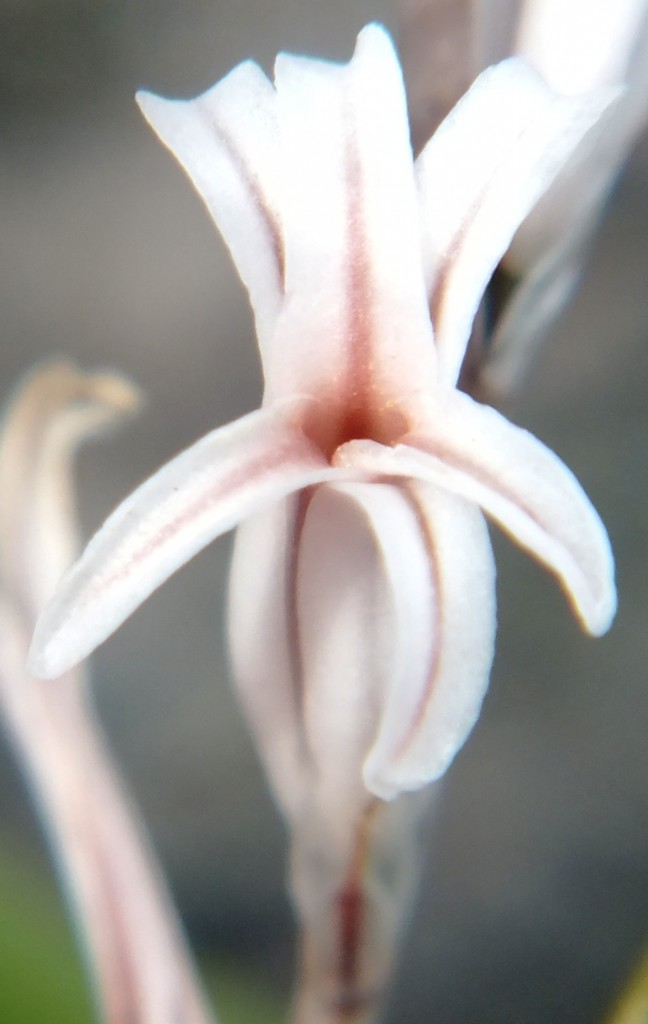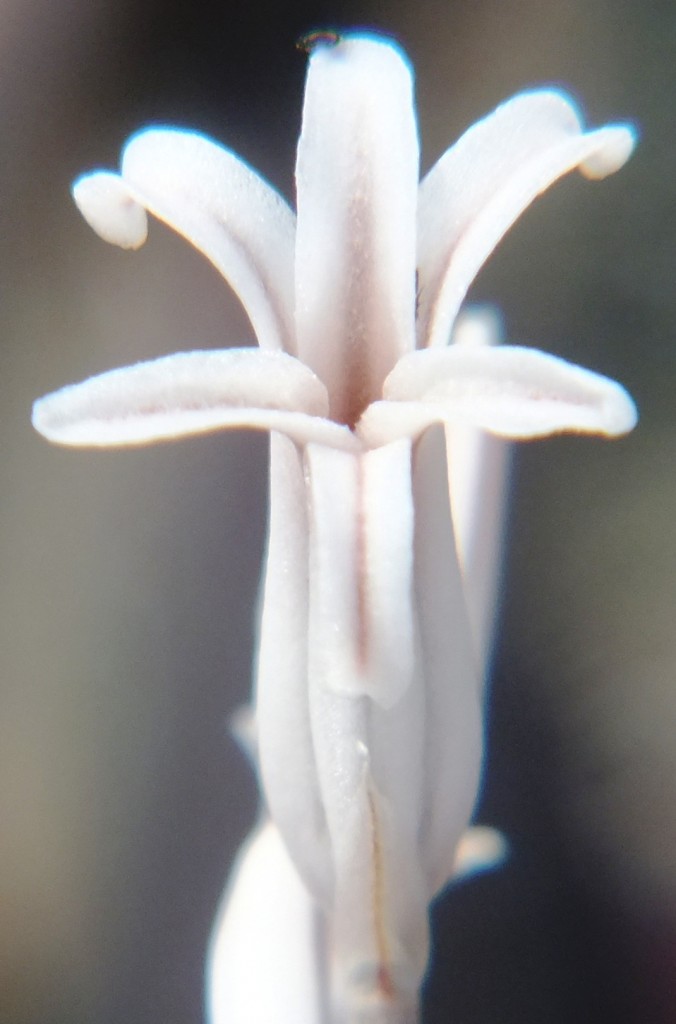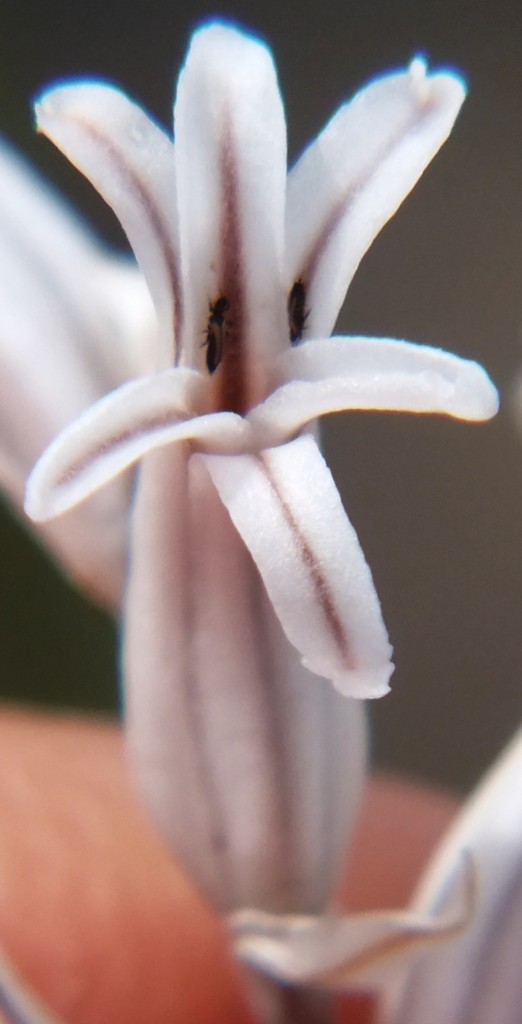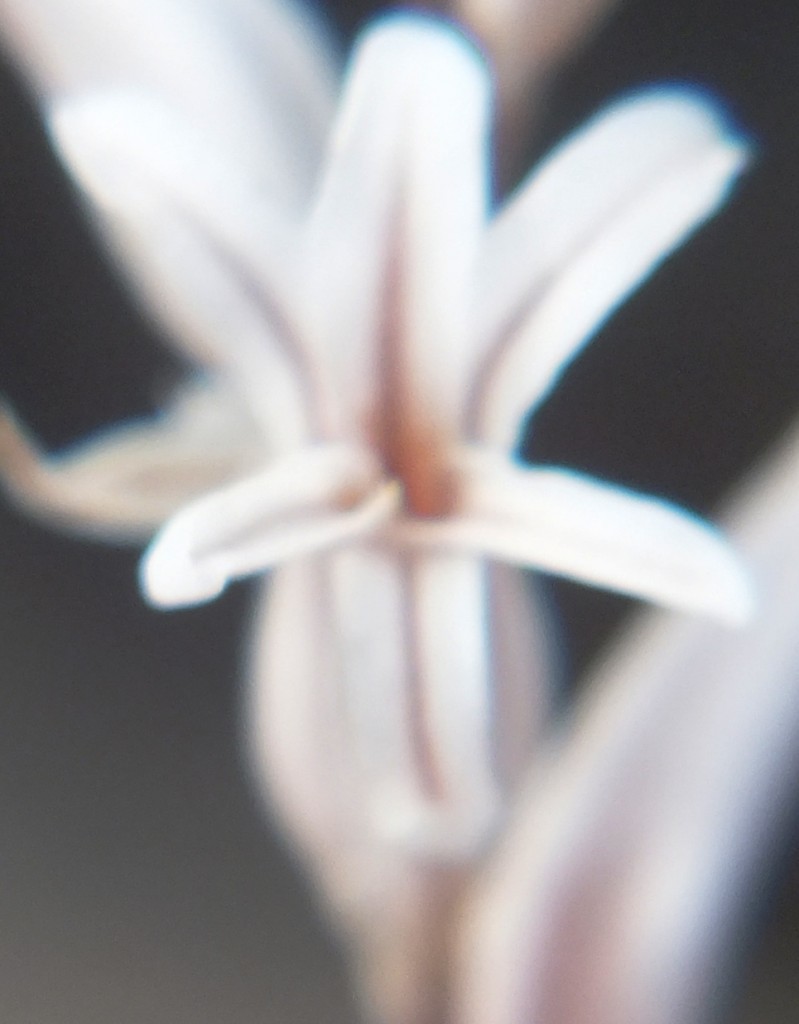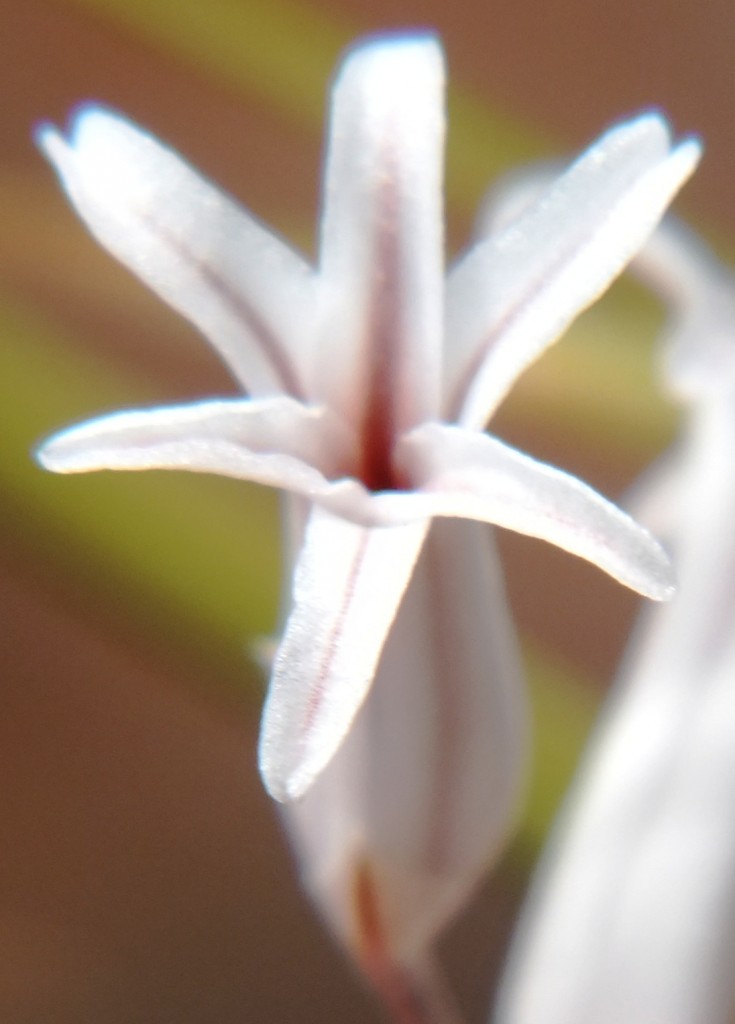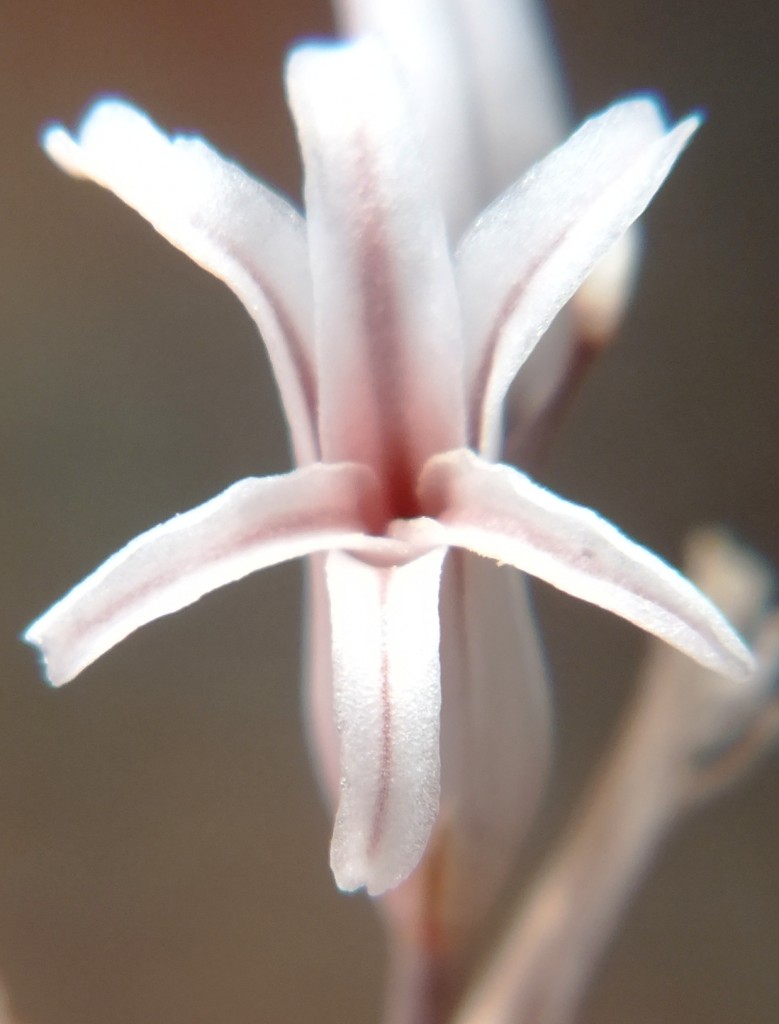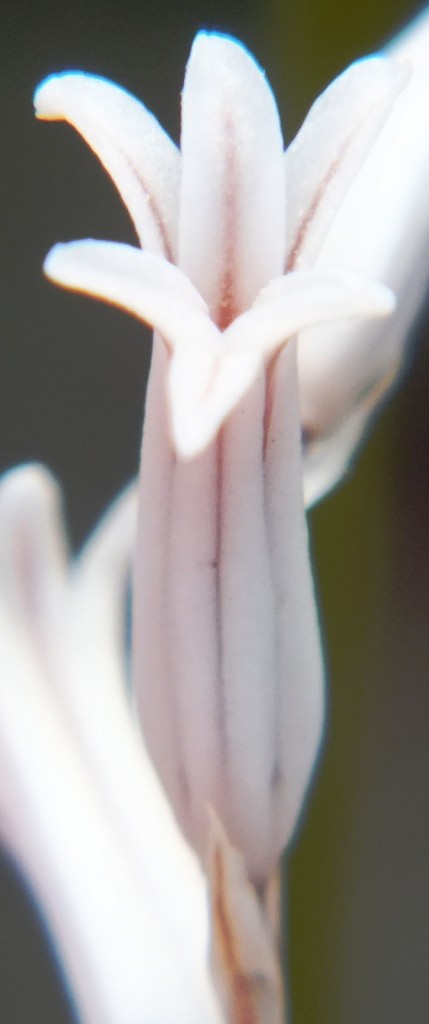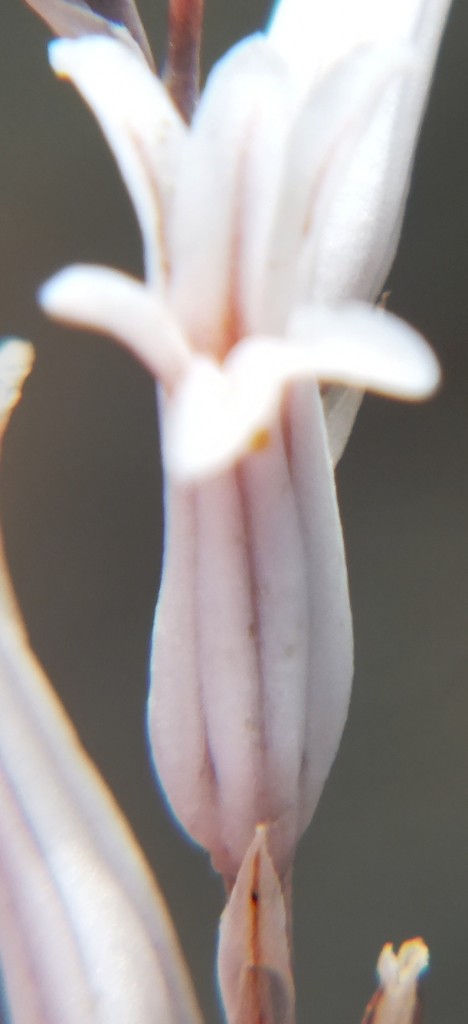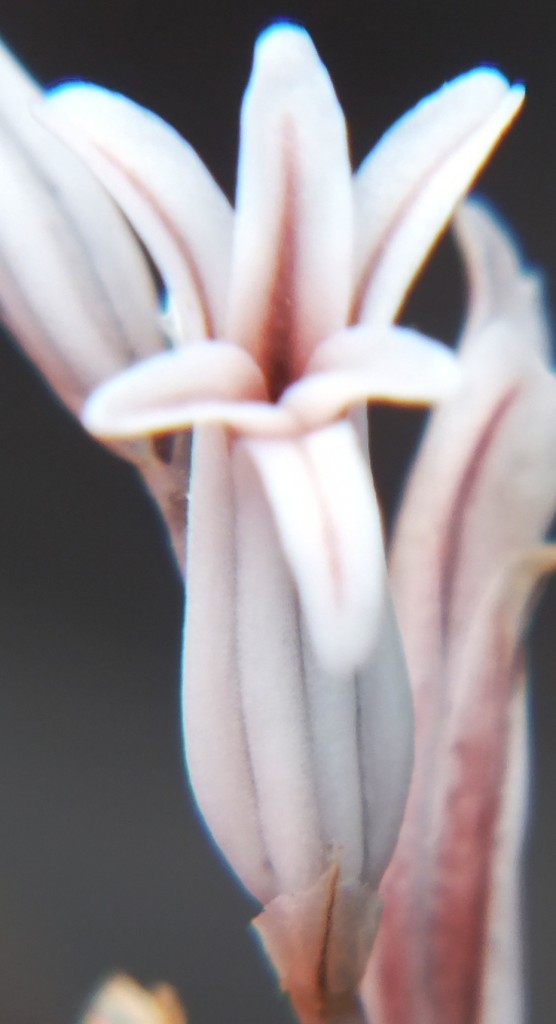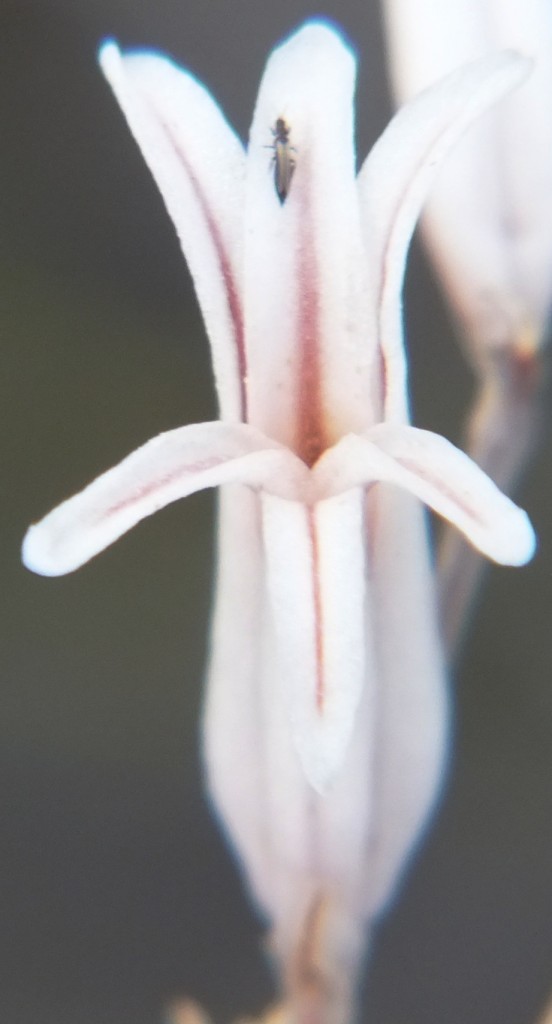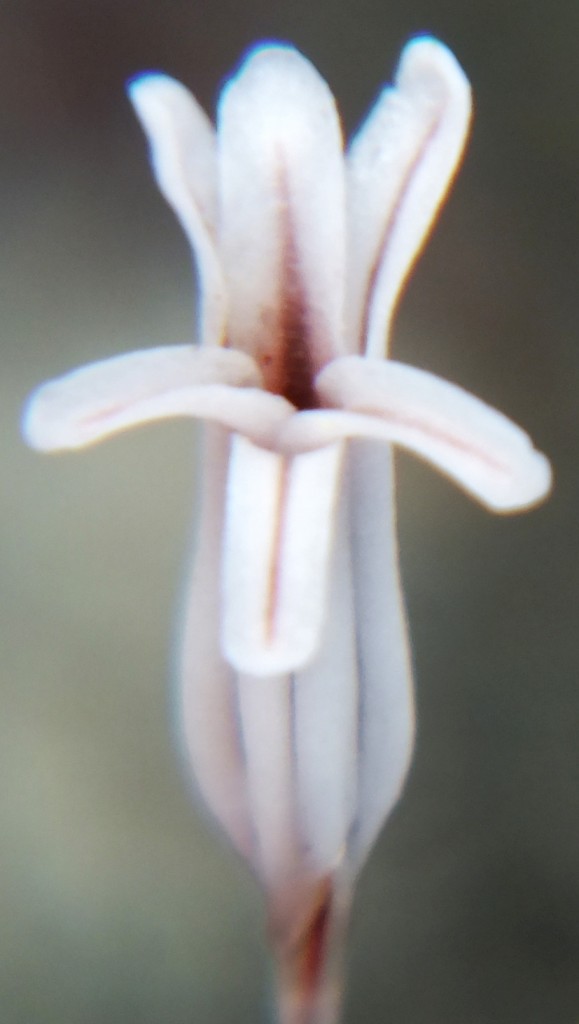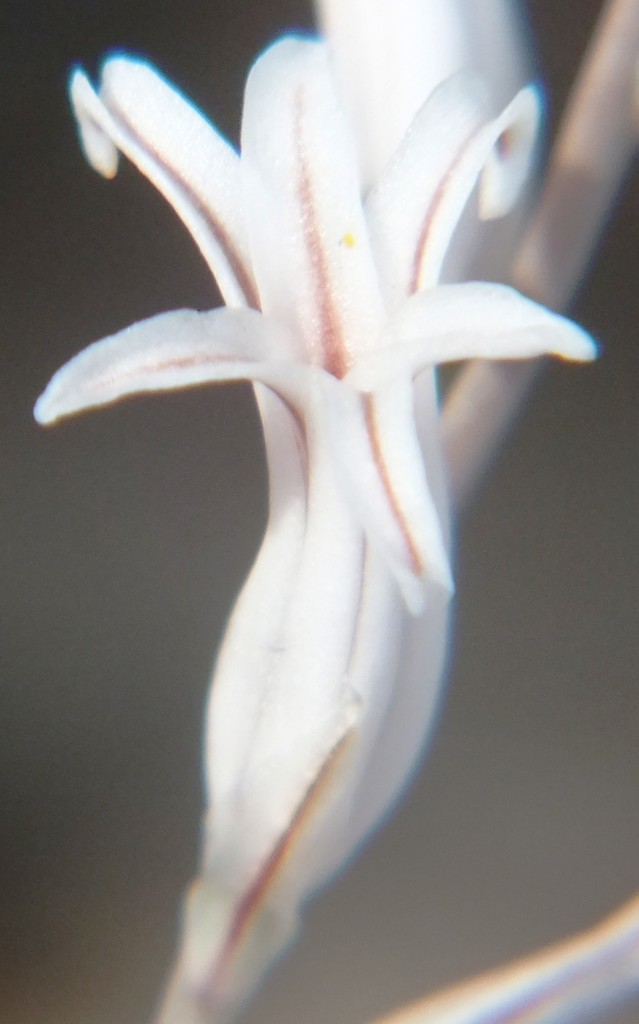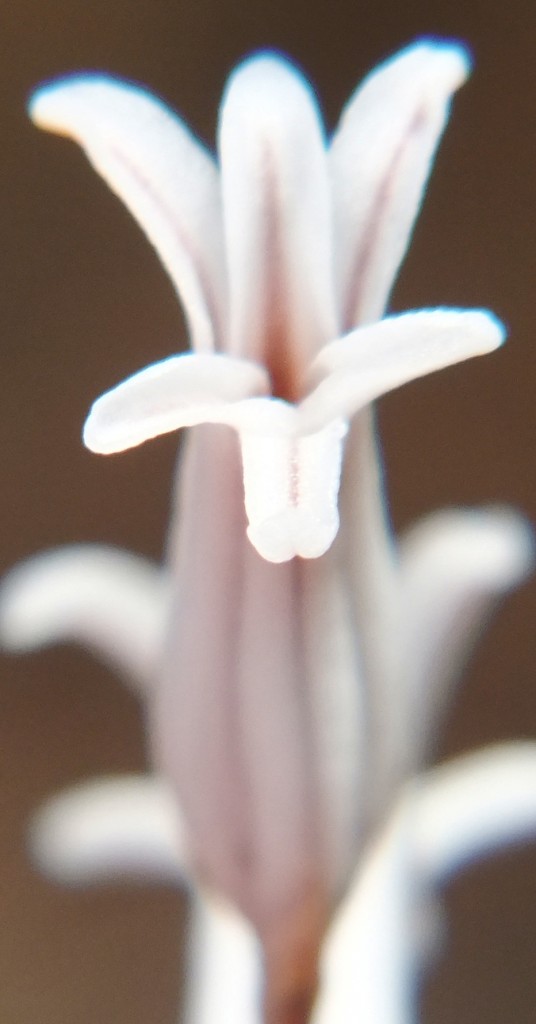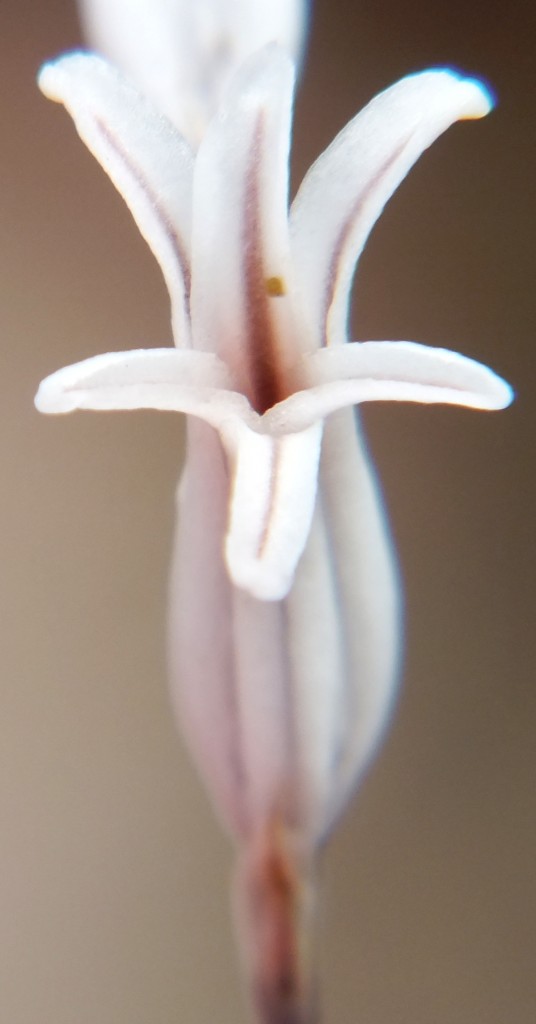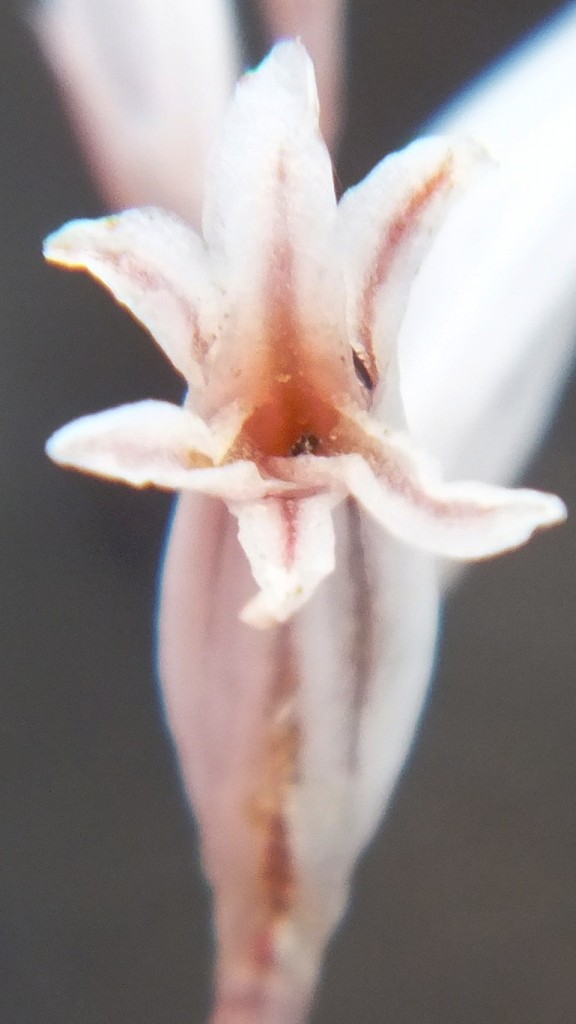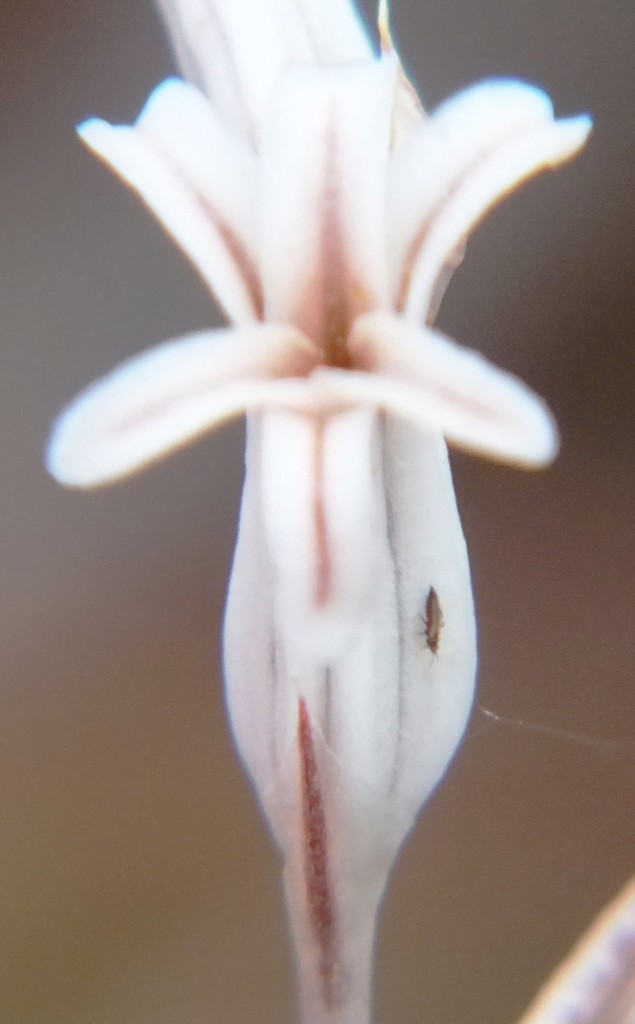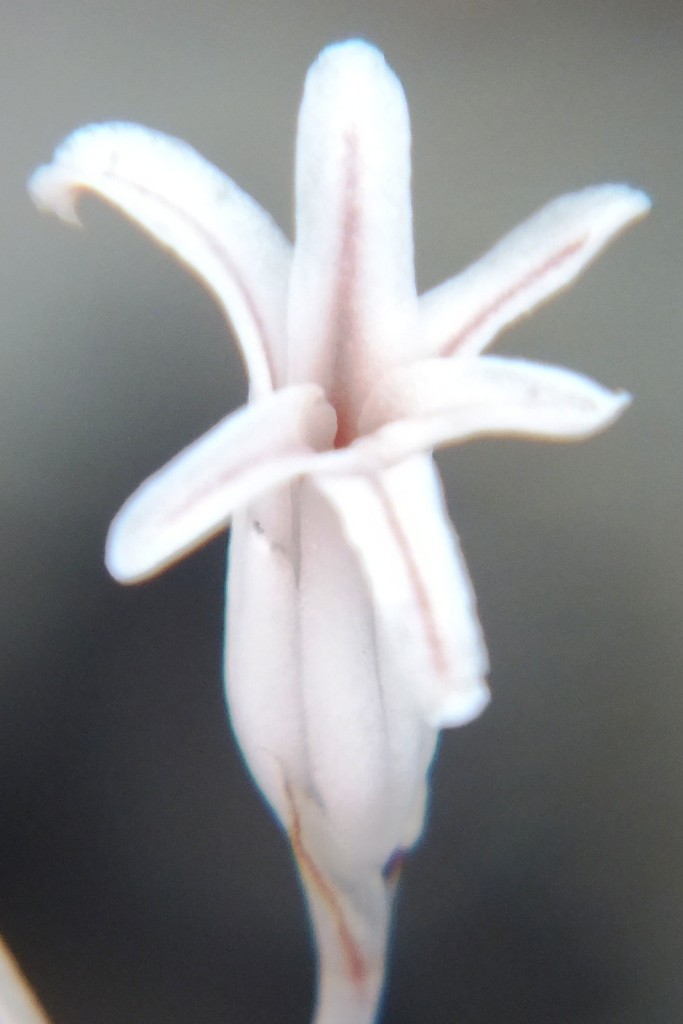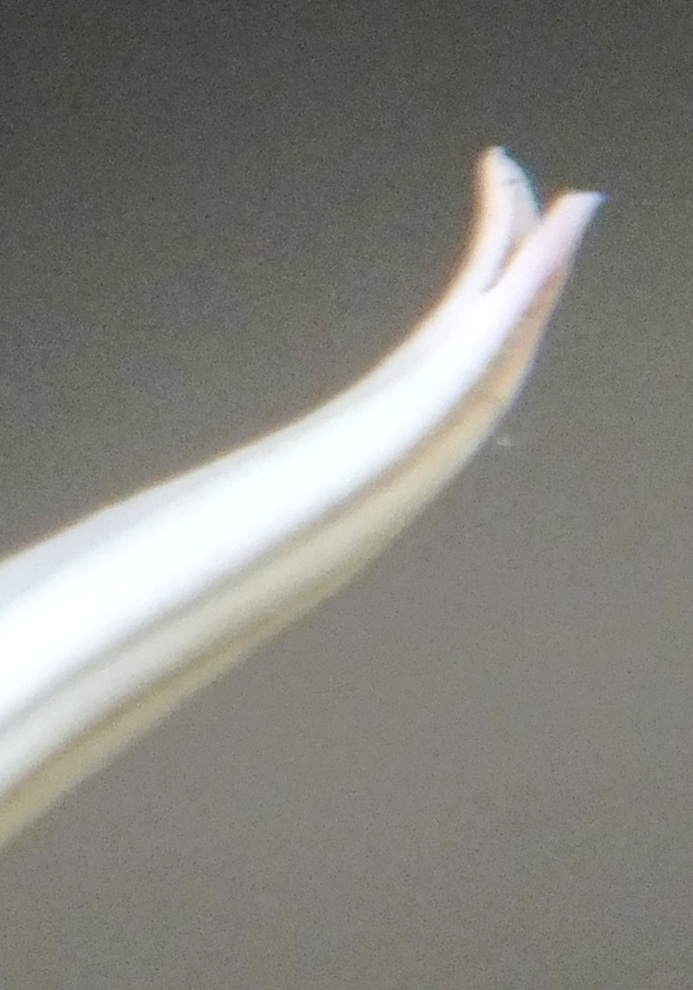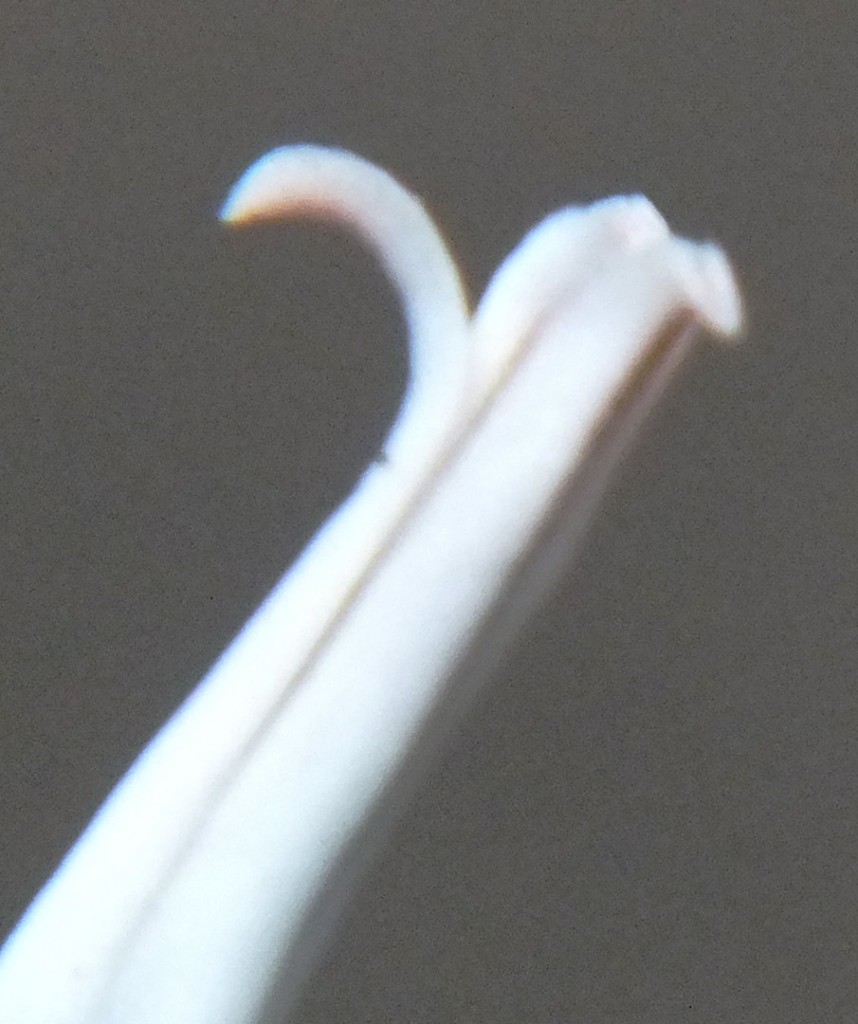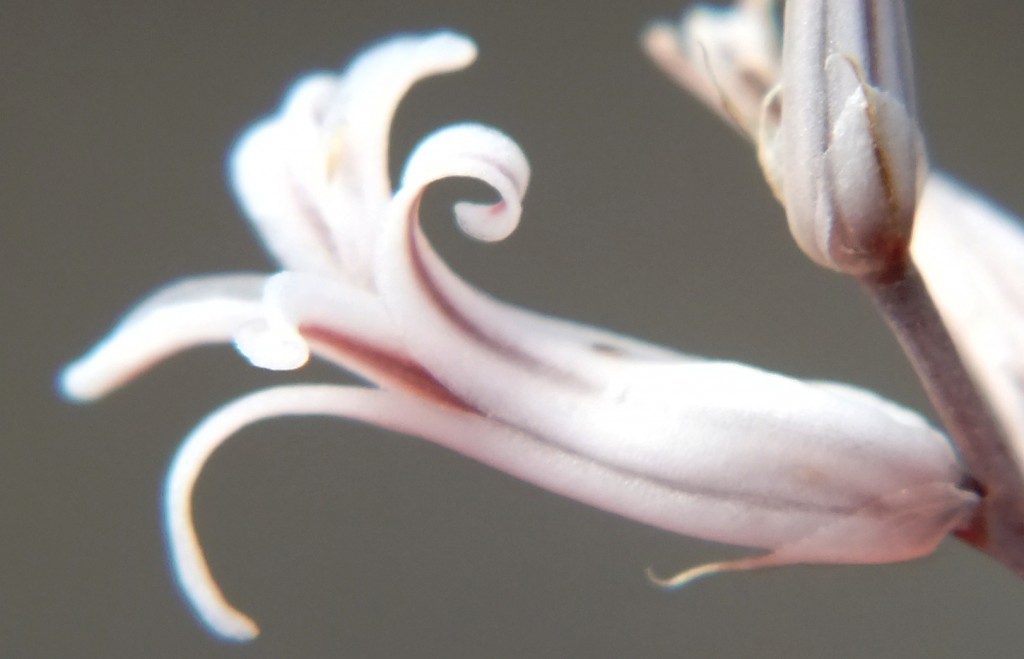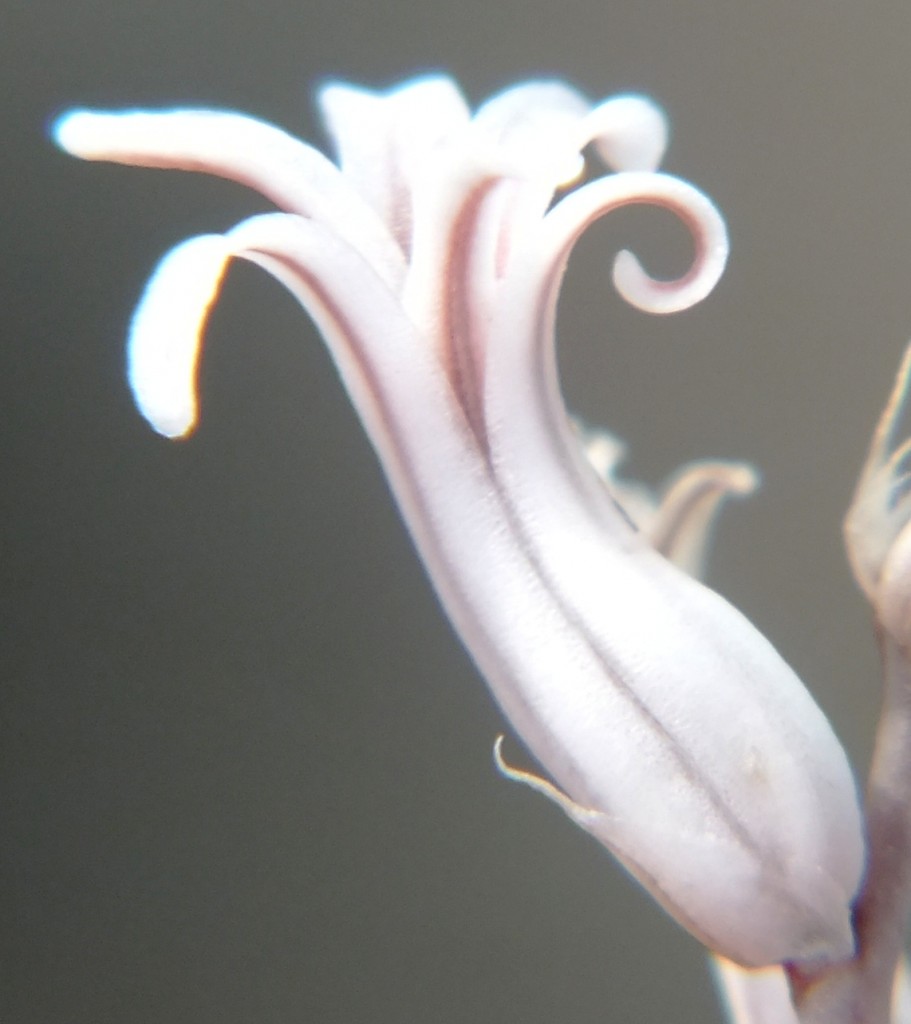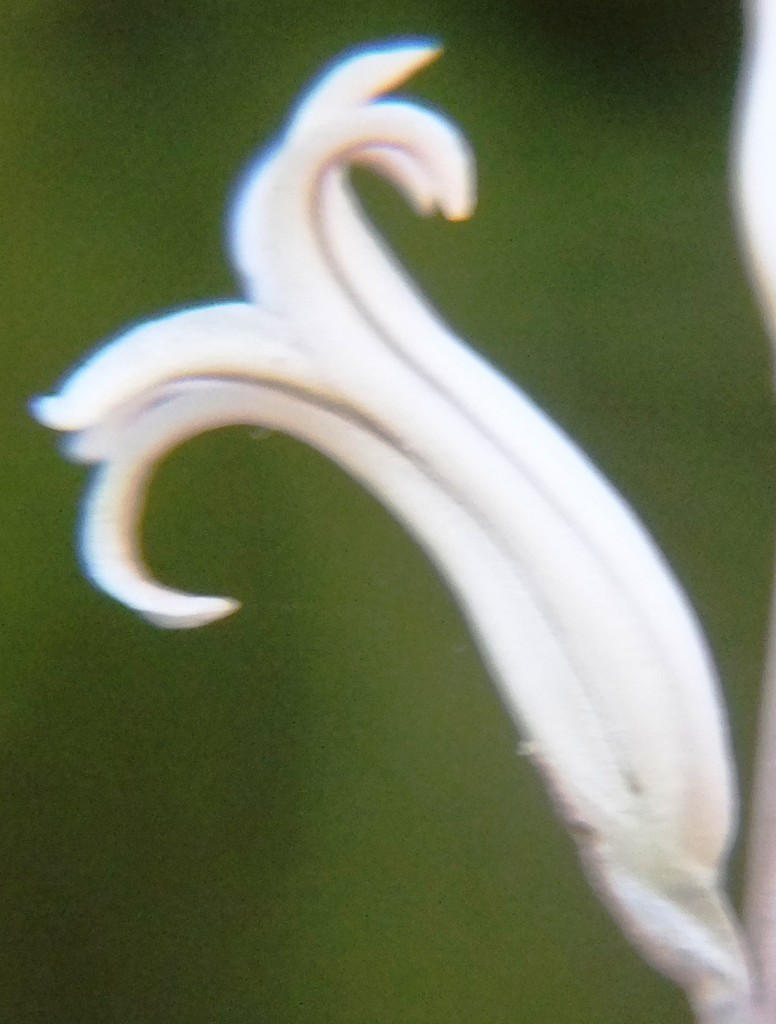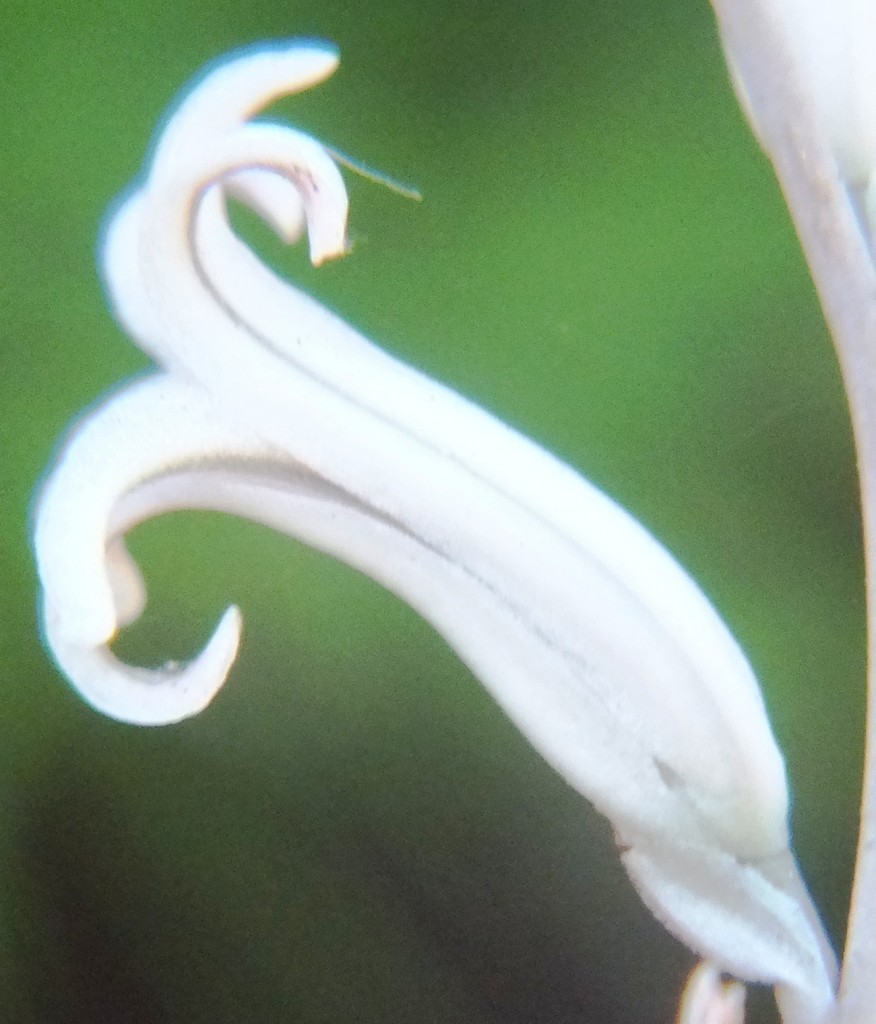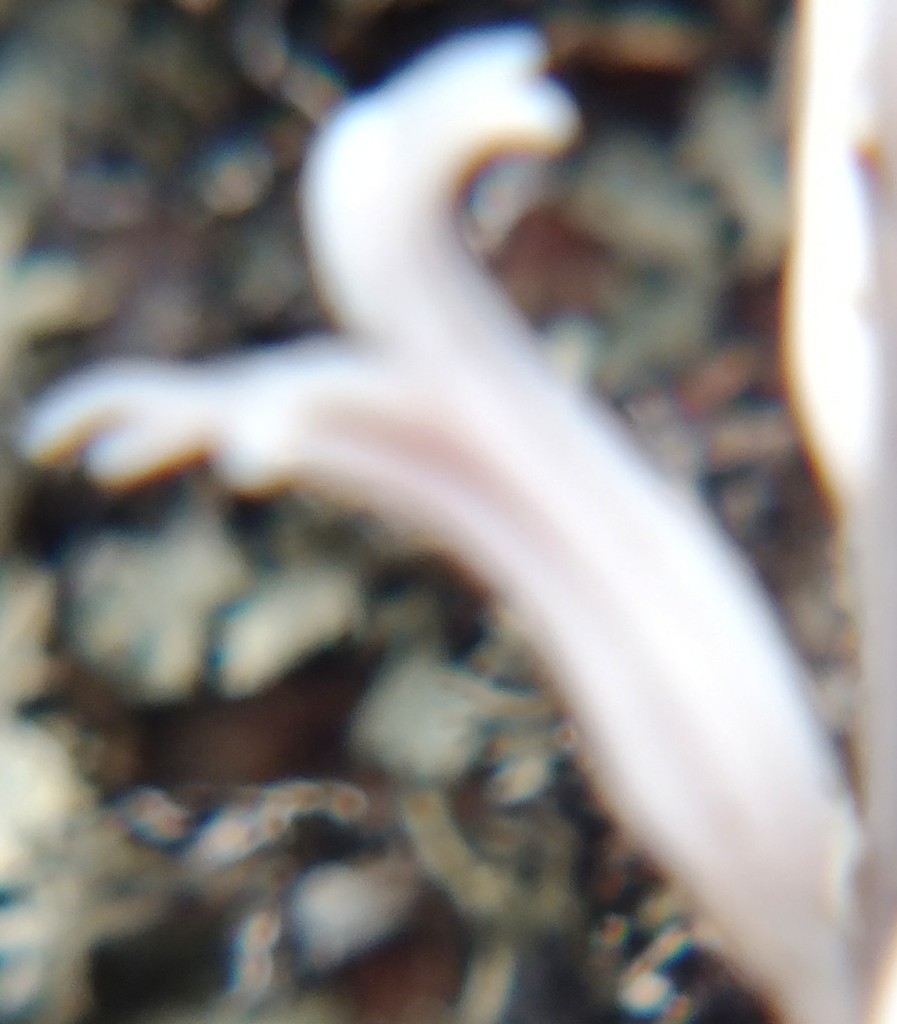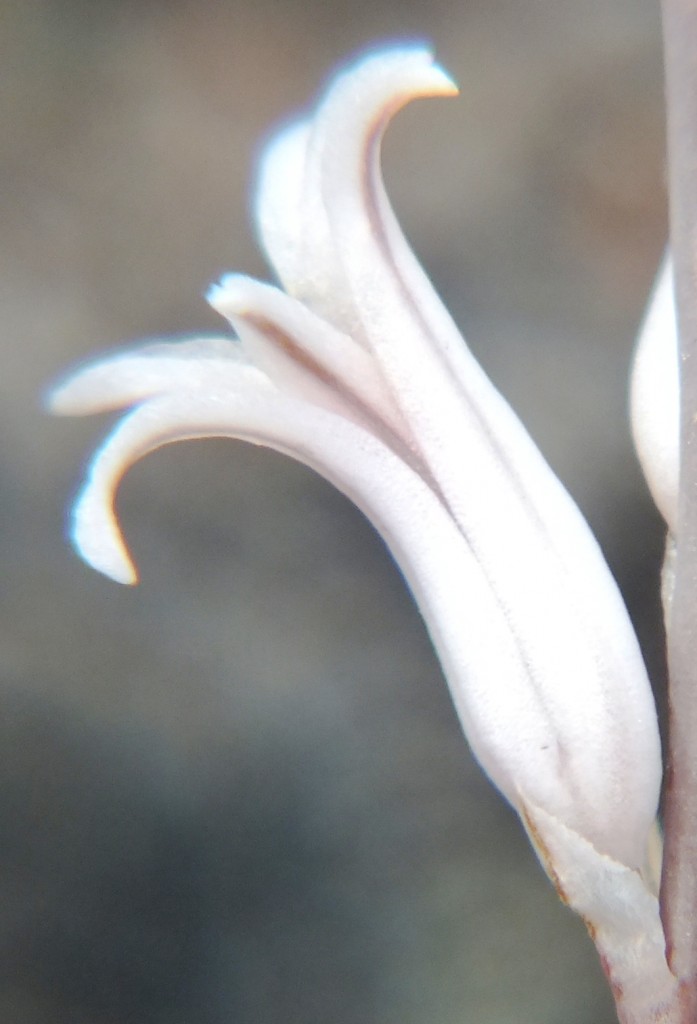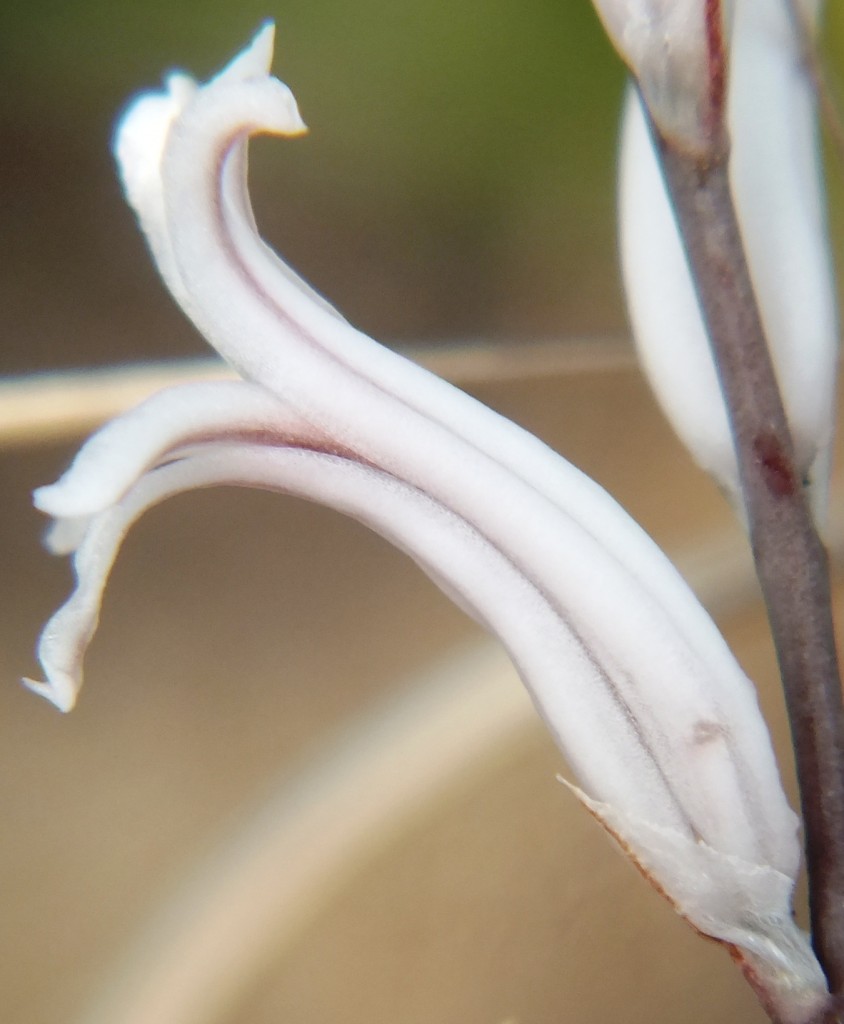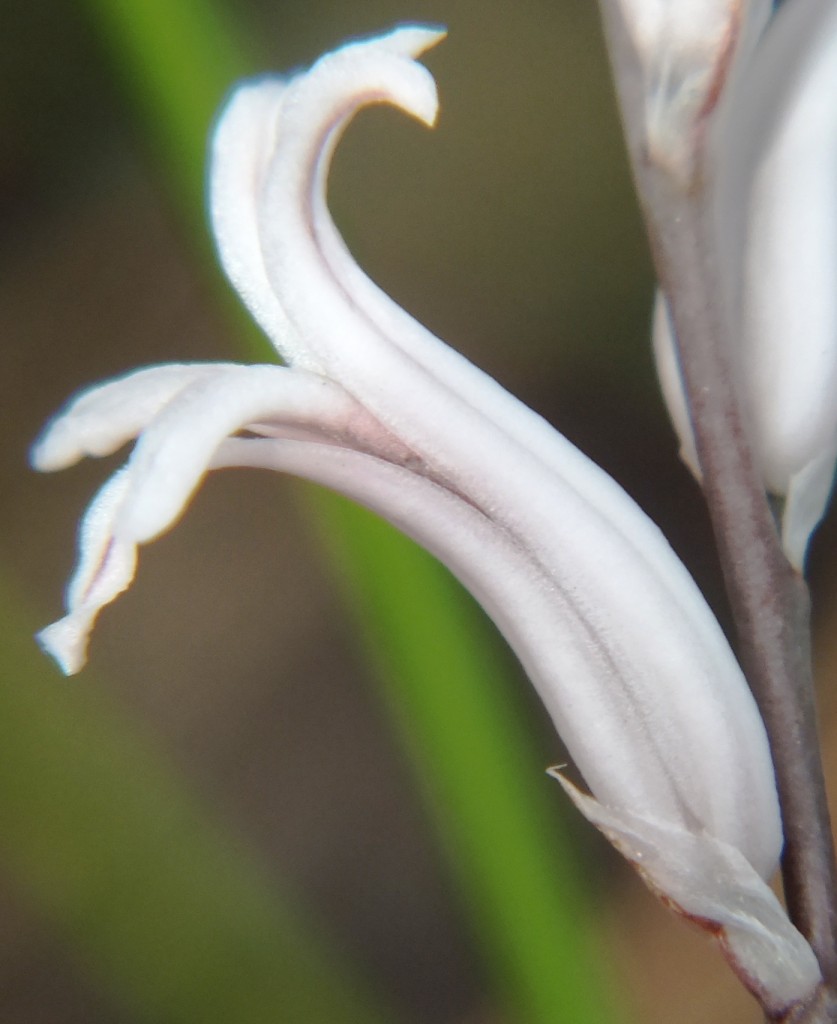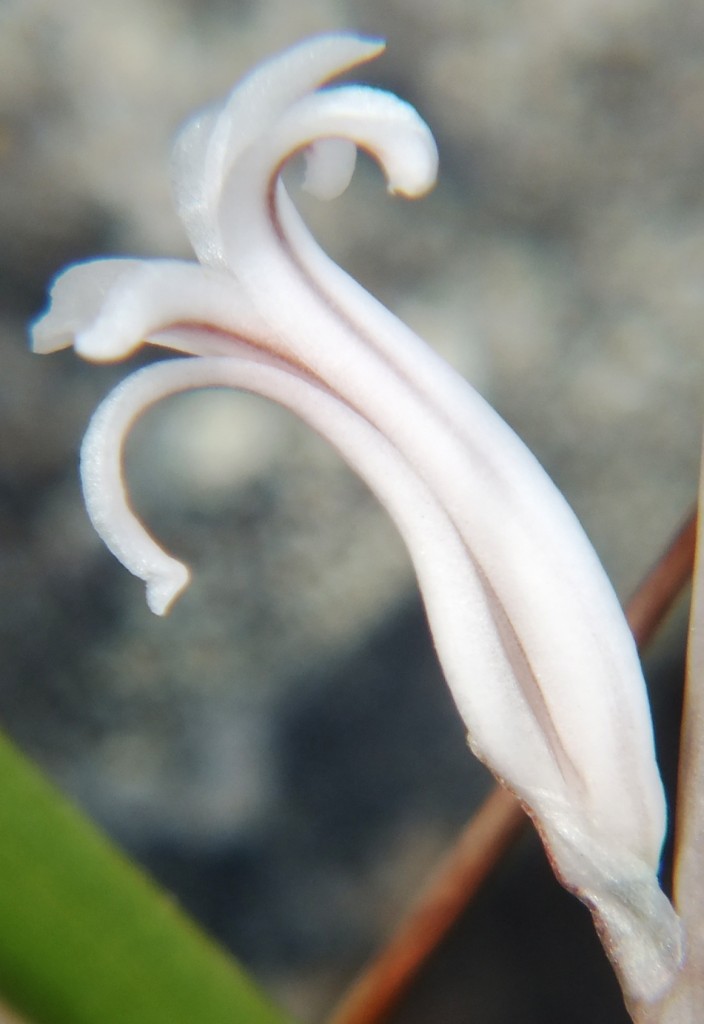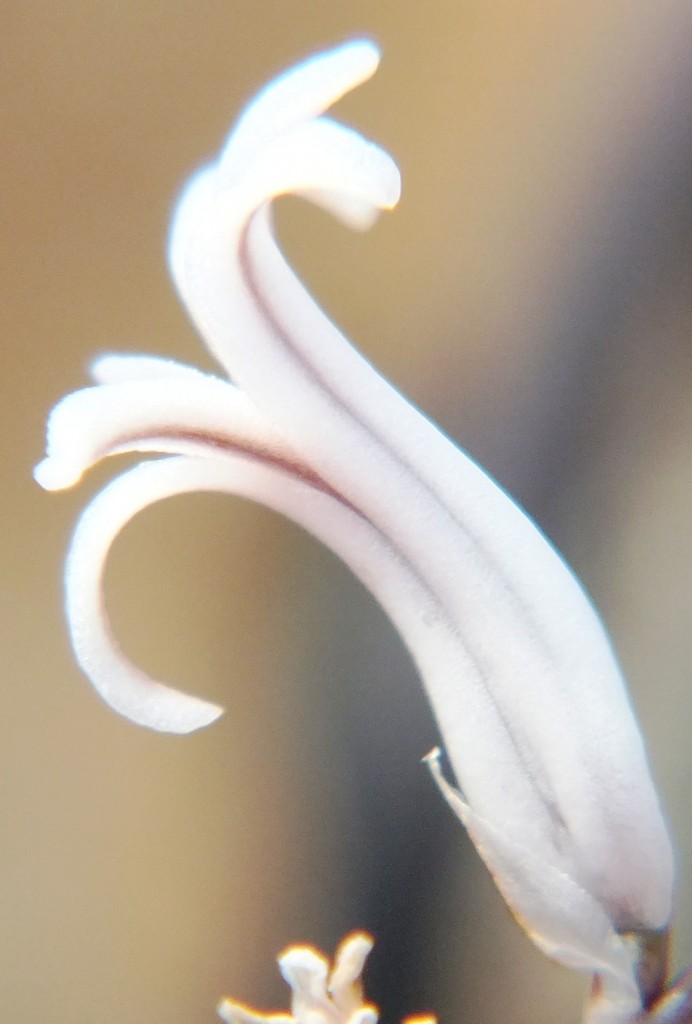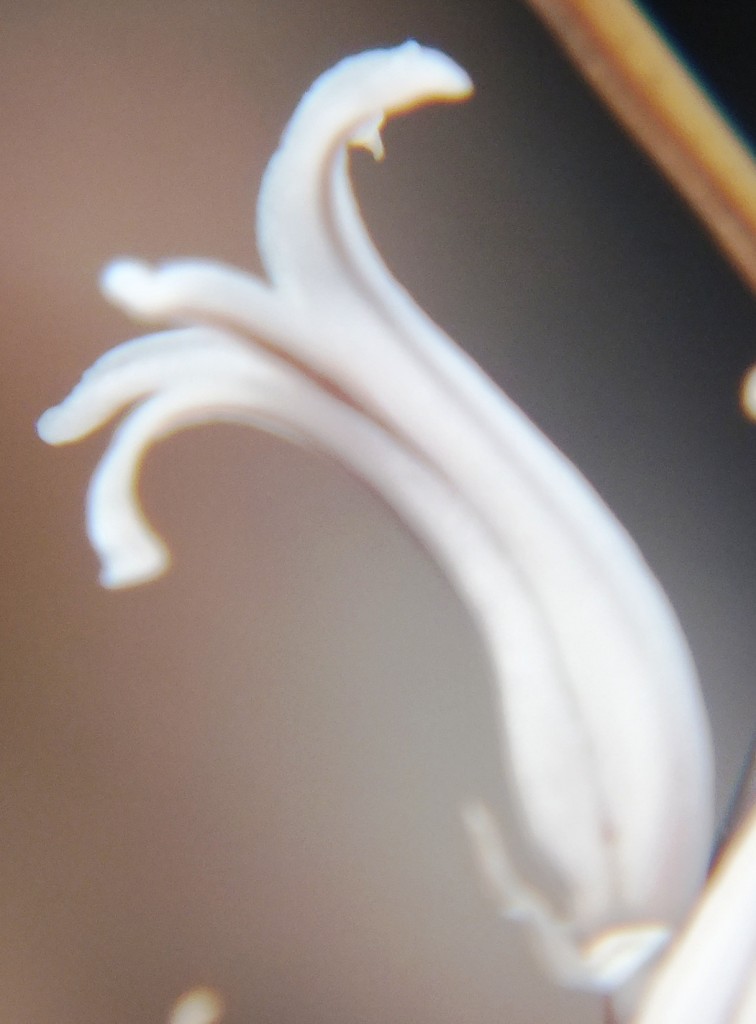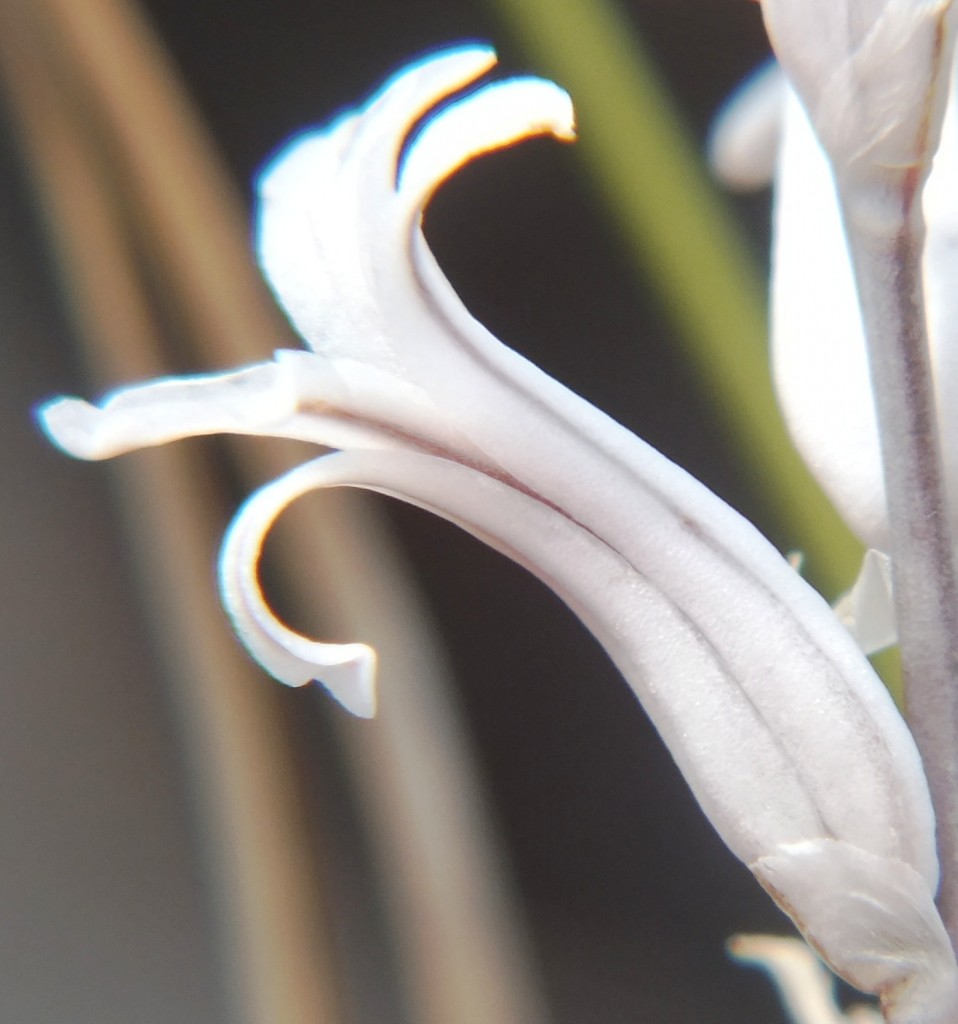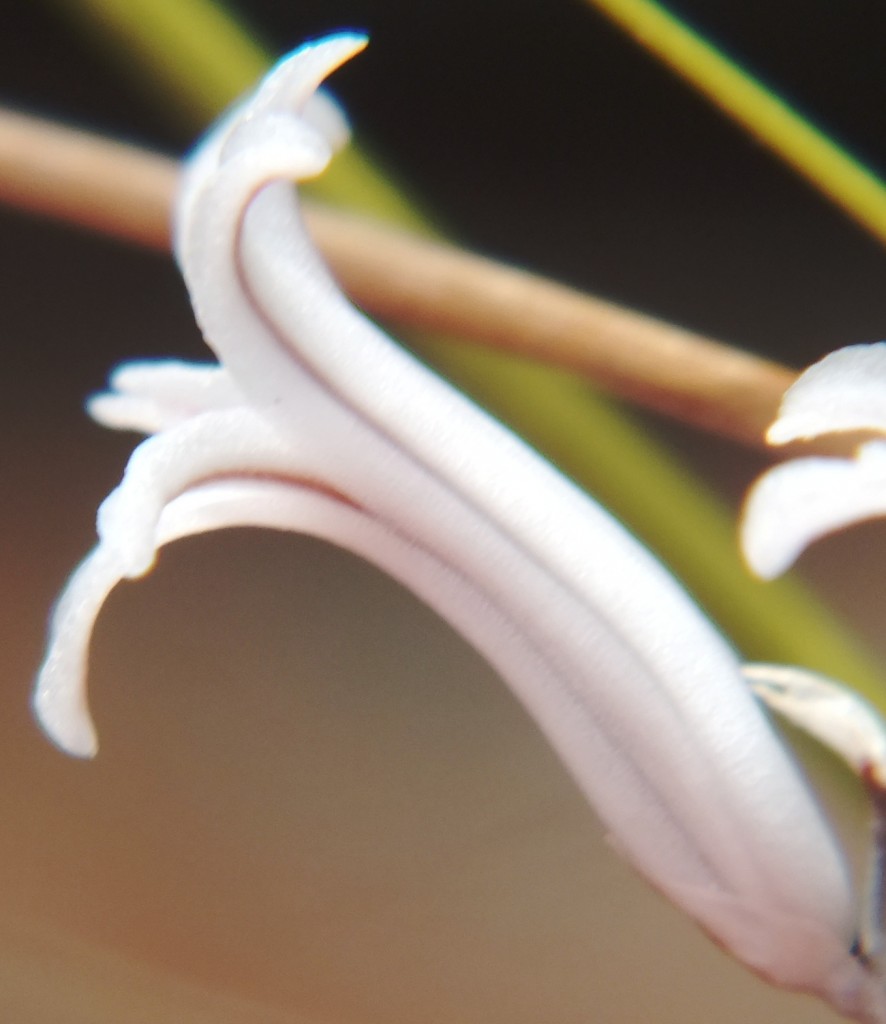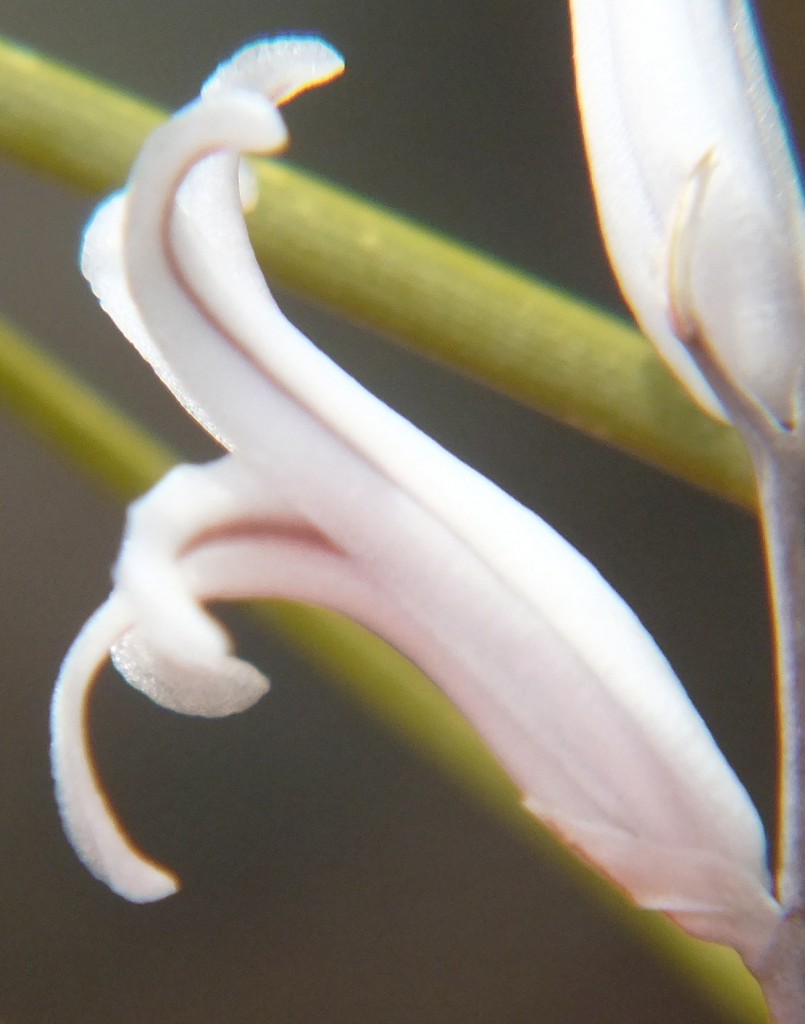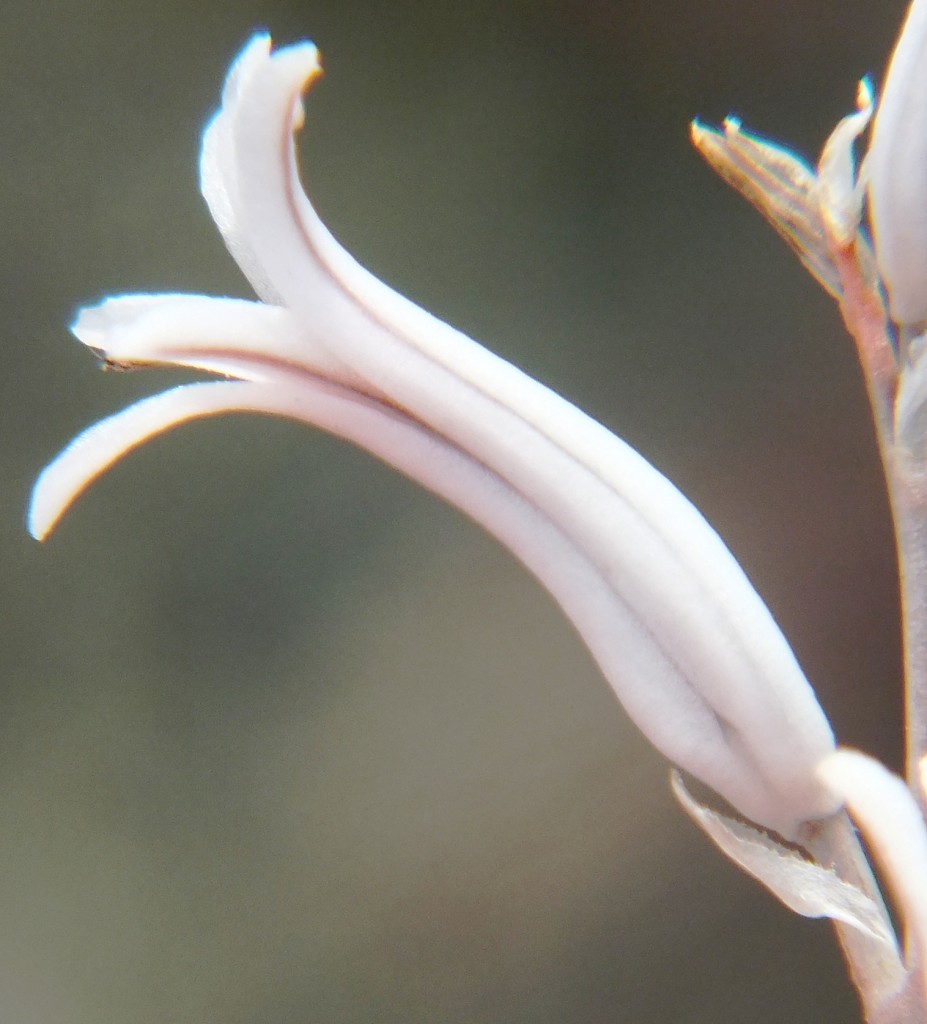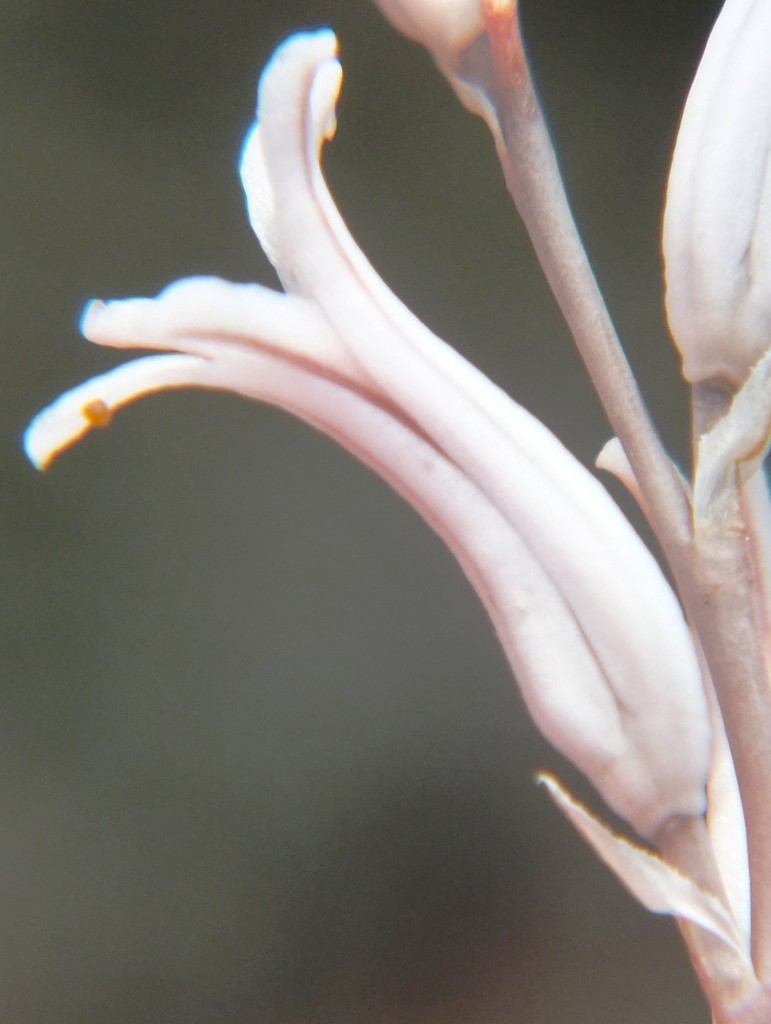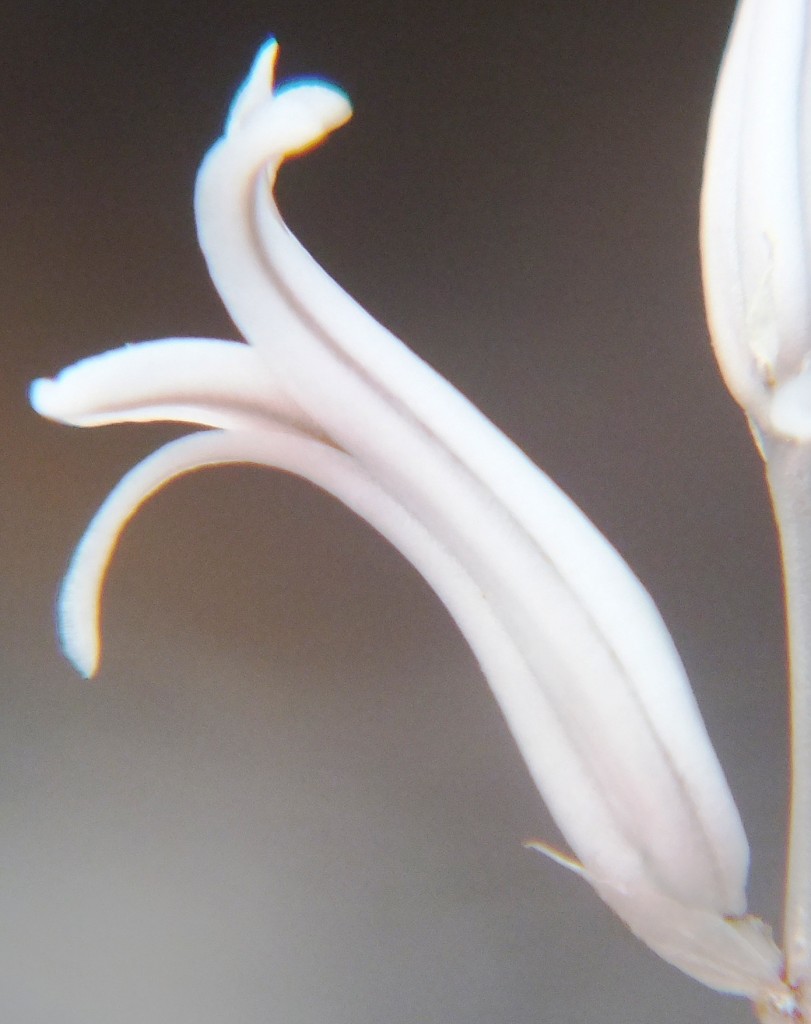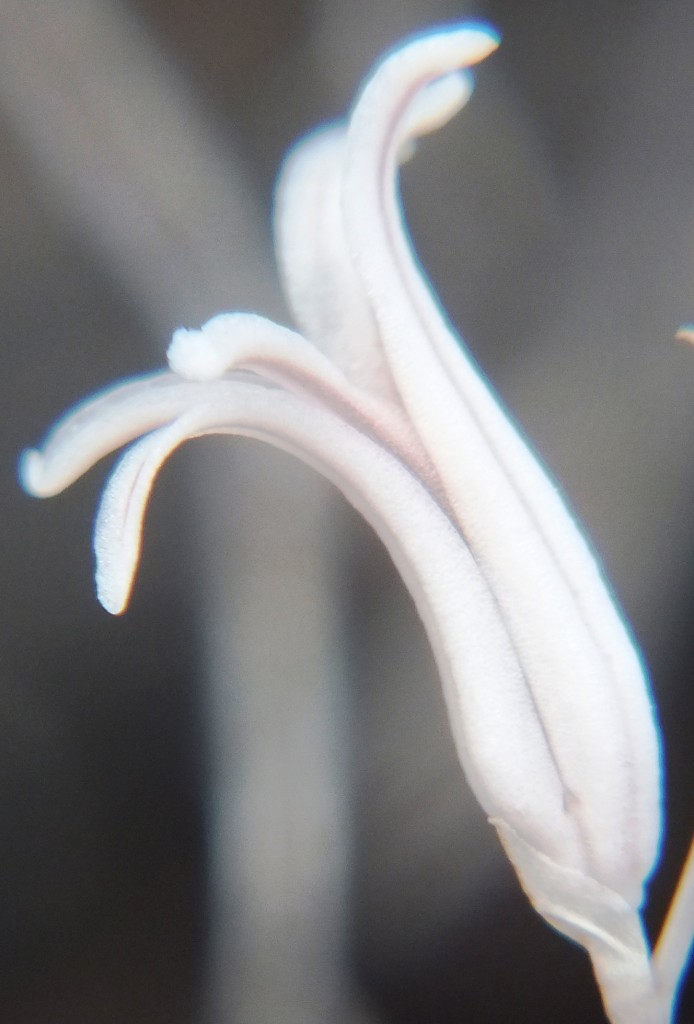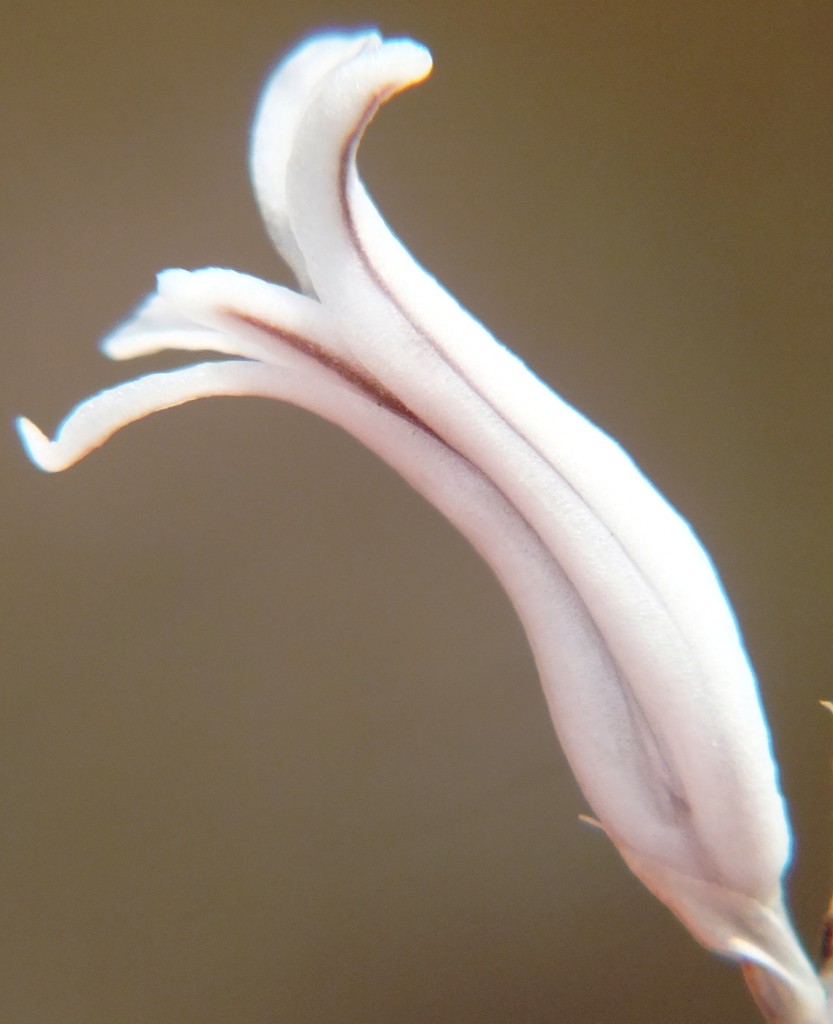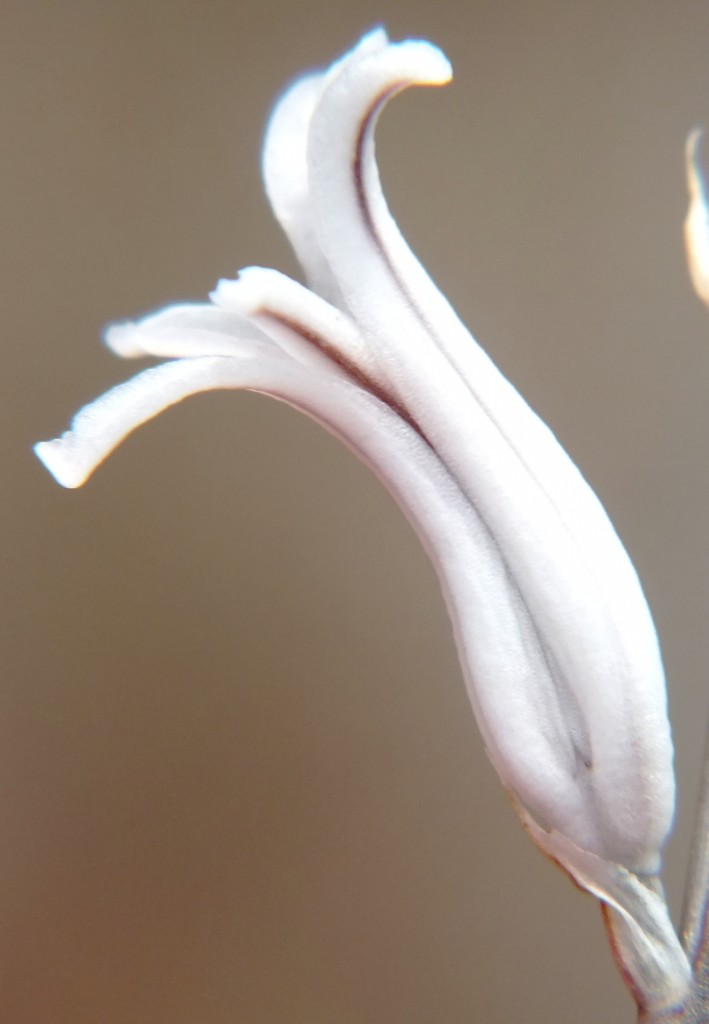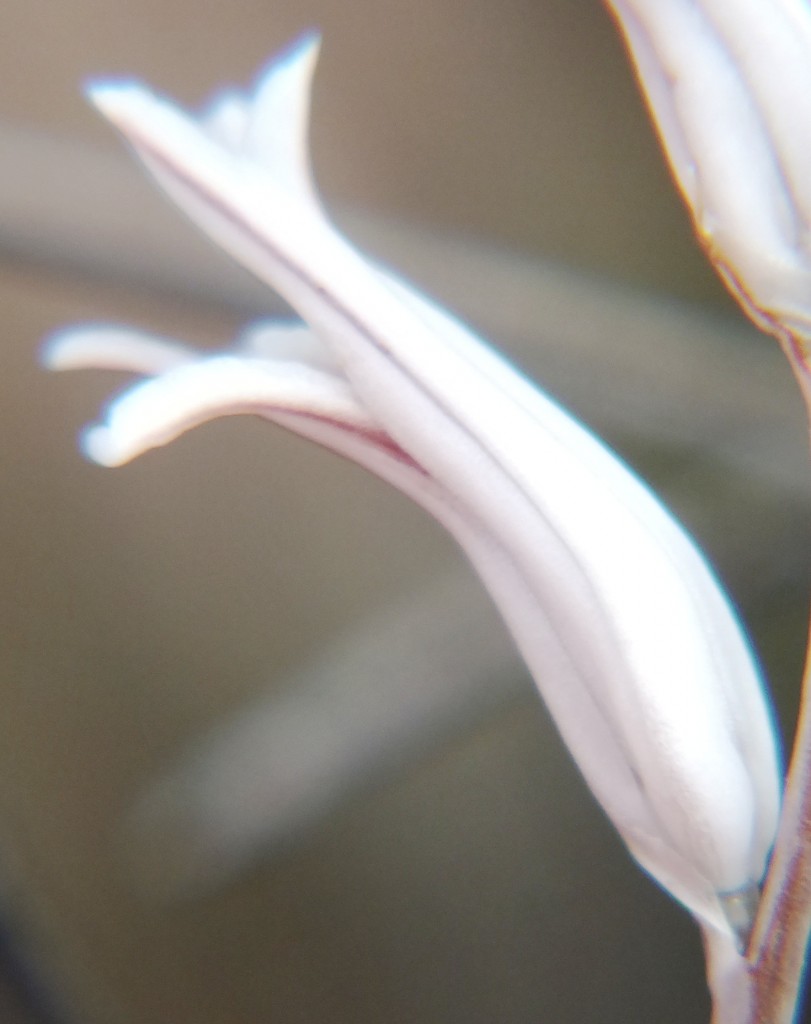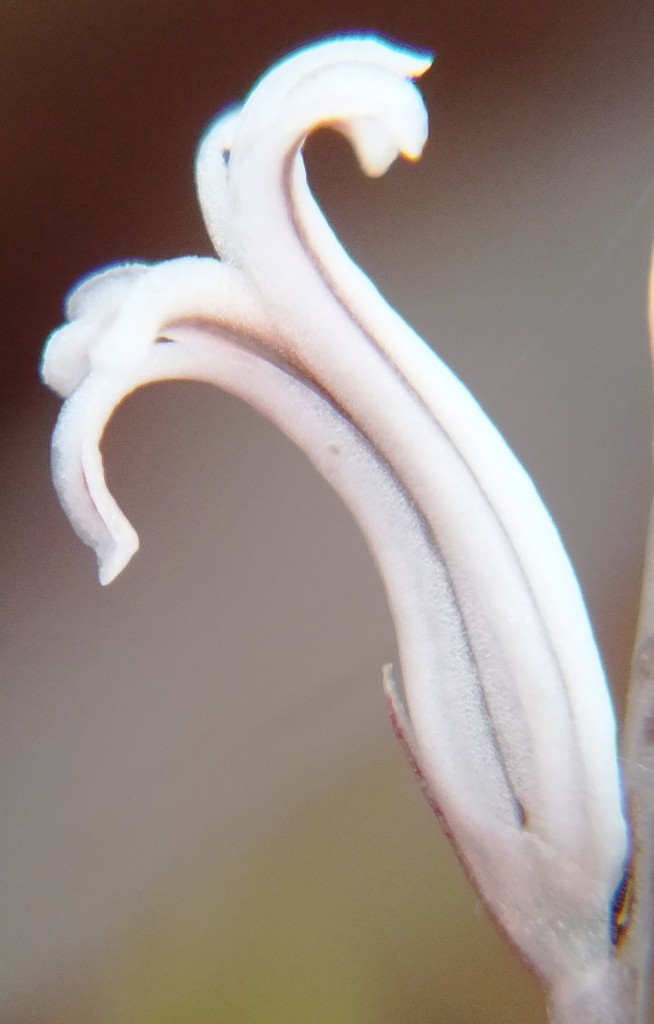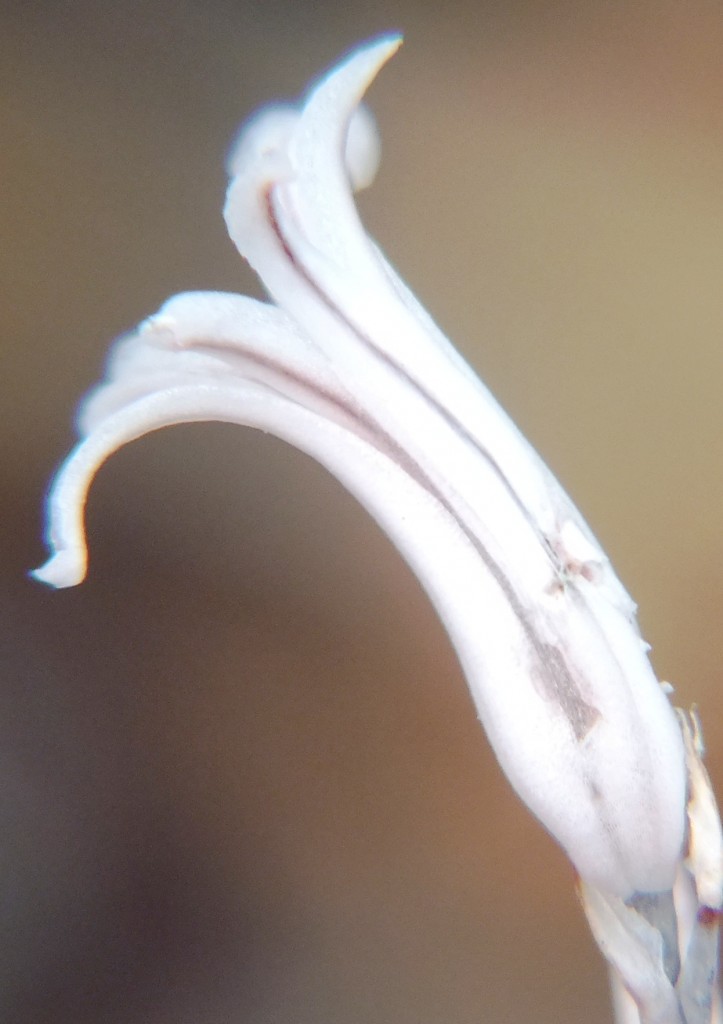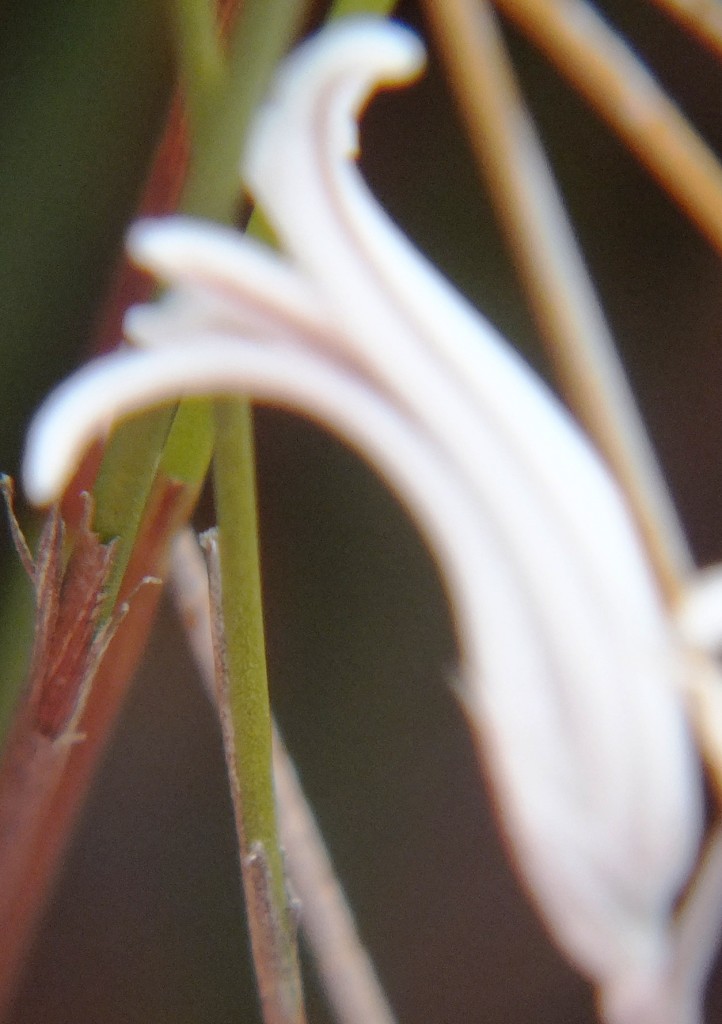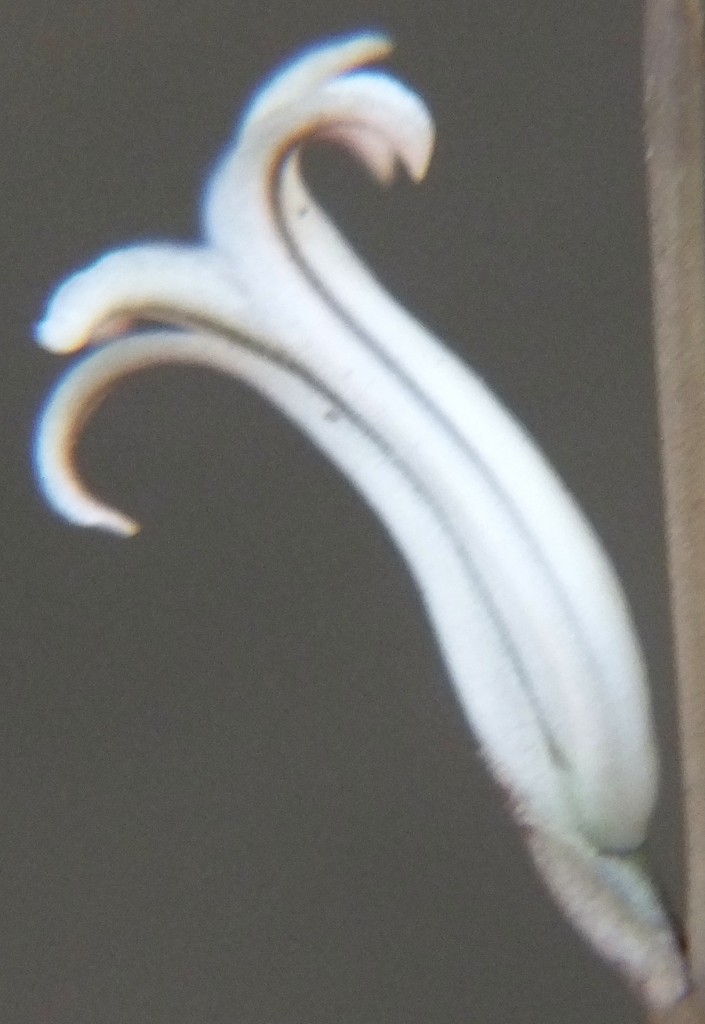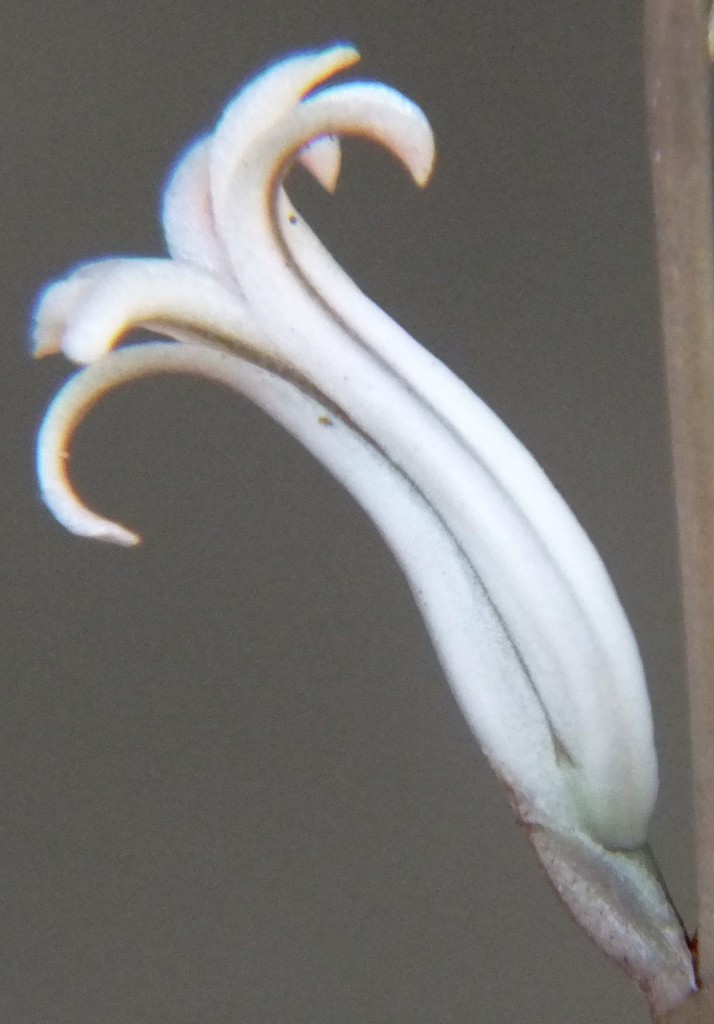28. Haworthia pubescens Bayer, JS.Afr.Bot. 38:129(1973). Bayer :147(1976). Bayer :50(1982). Type: CAPE‑3319 (Worcester): Sandberg Hills (‑CB), Bayer 163 (NBG).
pubescens: with many short hairs.
Rosette stemless, seldom proliferous, to 4cm φ. Leaves 20-35, short incurved, opaque grey-green, covered with minute spines. Inflorescence simple, to 20cm. Flowers 10-15, with upper lobes flared, white with pinkish venation.
1982 – H. pubescens has the same growth form as H. herbacea but it is smaller and seldom exceeds 30mm in diameter. The incurved leaves are dark grey‑green and finely pubescent. The flowers are quite unlike those of H. magnifica to which it may have been related, as the buds are long and slender. Also the upper perianth lobes are widespread as in H. herbacea. It grows in very close association with H. herbacea and flowers in November/December ‑ after H. herbacea and before H. magnifica. The distribution is extremely limited and only occurs on two low quartzitic hills east of the locality for H. maculata. It appears to be represented again about 15 km south by a form which is less pubescent and with more turgid leaves. This latter form at Lemoenpoort is in a quartzitic ridge again near H. herbacea, and it resembles H. maculata in the relative proportions of its leaves. H. maculata occurs in a more recognisable form about 5 km to the west at Moddergat, at a far southern locality for the species.
1999 – The geographic scale of species and their distribution ranges changes from the summer rainfall areas of the country to the southwestern winter rainfall area. H. pubescens probably has to be seen in that context. There seems to be little doubt that it is filling the space of H. maraisii, but that could also be mooted for H. maculata. The former species is the most probable relative as there are growth forms with the same leaf texture, and rosette shape near to Robertson. However, H. maraisii occurs in its typical form very close to Lemoenpoort at Trappieskraalkloof, just to the east. G.J. Payne did inform me that he had collected a small dark species just above the Brandvlei Prison and this would probably fall into this context if it is re-collected.

a. var. pubescens.
Distribution: 3319 (Worcester): Sandberg Hills (‑CB), Bayer 163 (NBG)

Haworthia pubescens var. pubescens JDV84/7 south of Worcester. Very seldom growing in exposed situations. 
Haworthia pubescens var. pubescens JDV84/7 south of Worcester. An elegant localized species with affinities with H. maraisii. Apart from the growth form it also flowers in late spring and has a flower more similar to H. herbacea.
b. var. livida var.nov.
Type: CAPE-3319(Worcester): S. Lemoenpoort (-CD), Bayer 1128 (NBG, Holo.).
livida: bluish-grey.
Differs from the typical variety in being less pubescent, with slightly broader and fewer leaves, and partly with pellucid spots on the leaves. (A var. pubescens foliis latioribus minus pubescentibus cum maculis pellucidis differt).
Distribution: 3319 (Worcester): S. Lemoenpoort (-CD), Bayer 1128 (NBG).

Haworthia pubescens var. livida JDV88/31 Lemoenpoort. Close examination suggests similarities with species as unlikely as H. marumiana. 
Haworthia pubescens var. livida JDV88/31 Lemoenpoort, south of Worcester. Broader leaves and sparsely pubescent.
[ed.] Bayer now considers var. livida as H. maculata var. livida
H. maculata var. livida (M. B. Bayer) M. B. Bayer (Haworthia Nomenclator, 10, 2012). Type: RSA, Western Cape (Bayer 1128 [NBG]). — Distr: RSA (Western Cape: Robertson Karoo: S of Worcester).
≡ Haworthia pubescens var. livida M. B. Bayer (1999) ≡ Haworthia maraisii var. livida (M. B. Bayer) M. Hayashi (2000) ≡ Haworthia intermedia var. livida (M. B. Bayer) J. Esterhuizen (2003); incl. Haworthia livida Breuer (2011) (nom. inval., ICN Art. 38.1a, 41.5).
Differs from var. maculata: Ros smaller; L less spotted.

